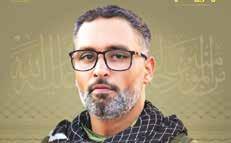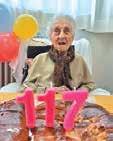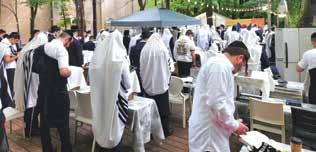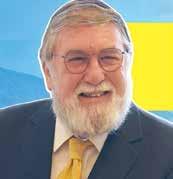






























When the kids come home from camp, you know that the summer is drawing to a close. But it’s not over yet. There are still a few weeks left to the season, maybe a week or two without homework and tests and uniforms. But once all that begins, the sun doesn’t hide in a cave. There are still beautiful days in September that remind us to spend time outdoors and fire up the grill.
I remember enjoying summer camp, but I also remember coming home and being so happy to be back. That first shower at home, with hot water and a real door and a clean towel…simple things but so much bliss. And then, that first night in my bed, snuggled under the covers with no bugs and a real floor and air conditioning just right… It’s the little things that can sometimes make you so happy.
Maybe that’s one reason we send our kids away to camp: to remind them of those simple pleasures and to help them appreciate all the good around them. They come back from camp excited to see their siblings and share their camp stories. They want to spend time at home soaking up the relaxed, homey atmosphere. They appreciate being able
to open the fridge at any time and eat something other than a granola bar or candy for snack. If their room felt tight before, it feels palatial after eight weeks in camp sharing a room with 15 other kids. There are no bugs crawling on their toothbrush or mildew sprinkled on their towel.
Of course, camp builds memories. It forges friendships. It opens their minds to other outlooks and views. It helps to develop independence. But it also reminds them that laundry doesn’t just happen on its own every day.
Now that the summer is slipping away, it’s also a reminder for us to take in all that it offers. To appreciate every sun-soaked day. To breathe in the fresh, warm air. To bask in the more relaxed atmosphere that comes this season. To spend more time with family.
We can extend those wonderful aspects of summer into the school year. We just need to be mindful to bottle up those feelings and that atmosphere and deliberately think back to those moments when the school year begins.
Wishing you a wonderful week, Shoshana

Yitzy Halpern, PUBLISHER publisher@fivetownsjewishhome.com
Yosef Feinerman, MANAGING EDITOR ads@fivetownsjewishhome.com
Shoshana Soroka, EDITOR editor@fivetownsjewishhome.com
Nate Davis
Editorial Assistant
Nechama Wein
Copy Editor
Rachel Bergida Shana Brecher
Lani White
Design & Production
Gabe Solomon Distribution & Logistics
P.O. BOX 266
Lawrence, NY 11559
Phone | 516-734-0858
Fax | 516-734-0857
Classified Deadline: Monday 5:00PM classifieds@fivetownsjewishhome.com text 443-929-4003
PAYMENT VIA CREDIT CARD MUST BE SUBMITTED ALONG WITH CLASSIFIED ADS
The Jewish Home is an independent weekly magazine. Opinions expressed by writers are not necessarily the opinions of the publisher or editor. The Jewish Home is not responsible for typographical errors, or for the kashrus of any product or business advertised within. The Jewish Home contains words of Torah. Please treat accordingly.











Dear Editor,
I had the privilege to attend the Hebrew Academy of Long Beach elementary school while it was still in Long Beach. In Hebrew, the name of the school was Yeshivat Lev, the yeshiva of the heart. I remember spelling out the word “lev” with our bodies for the yearbook picture. It was surreal, poetic and powerful. After watching some October 7th vignettes on Tisha B’Av, of grieving mothers that lost their sons, an insight into unifying hearts revealed itself. The mothers, mostly secular, had one message: No one in Israel should argue anymore. Their boys are dying for one nation, yet discord continues.
The Klausenberger Rebbe, who had his wife and eleven children murdered in the Holocaust, had the following words to say. These words speak to the need to become a colorblind nation.
“There is one thing I miss about the Holocaust. When I went through the death march, we were all clean shaven, and our hair was shaved off, too. We all marched side by side, and no one knew if the person next to him or her was a Chassid or a Litvak. No one knew I was a Rebbe. We all just held our arms around each other and tried to keep warm and keep our fellow Jews warm. That’s what I miss from the Holocaust.”
Steven Genack
Dear Editor,
If you think that working from home has made life easier, perhaps, after you read what happened to me one day, recently, you may see yourself having faced similar problems:
I woke up and headed to the bathroom. I knew, almost immediately, that
my day was going to run sour. I looked in my bathroom mirror and there was a huge message that said, “Please wait while I update facial recognition software.” Even my own mirror didn’t recognize me! OK, so I guessed about where I had to shave, and my wife saw my face and said that it looked like I plowed it instead of shaving it because I had “corn rows” all over my face. Well, at least, I didn’t have to face anyone outside. I hoped that the mirror software update would complete before I had my first work meeting.
I logged into the work computer. The website that I generally use was down. I learned that they were doing a “deployment.” I told my wife, who asked, “What is a deployment? Is that like sending troops to the battlefield?” I told her that in some ways it was. A deployment means that my company replaces a broken computer program with a new program that fixes that problem but breaks something else. My wife gives me a puzzled look and says, “That sounds pretty stupid. Do you deal with this stupidity all the time?” I didn’t care to answer that question, because, in some ways, my wife thinks that I’m stupid, too. That’s what makes for a good marriage.
Finally, it occurred to me that about 80% of the world is stupid, and we have to deal with this, daily. But thank G-d, we have all this “smart” technology around. I think someone should invent a button that would attach to the side of the head that’s connected to the brain. Any stupid person can push that button that says, “Reset to factory settings.” Of course, some people’s factory settings aren’t that great, either.
Daniel Feldman
Continued on page 12

With deep and heartfelt sorrow, we extend our sincerest condolences to MAYOR BENJAMIN & EILEEN WEINSTOCK on the untimely passing of their beloved son,
May his memory be a source of comfort and strength during this difficult time.


Dear Editor,
Trigger warning: The following letter is political satire and may cause leftist heads to explode. Viewer discretion is advised.
UNITED STATES—After much prodding from both Democrats and some reporters in the media, the Harris-Walz campaign has outlined a number of policies they support should they win the White House. Here they are in all their socialist glory:
1. The Karl Marx in Every Home Act – mandates that every home in America have a portrait of Karl Marx
2. The Voter Integrity Act – makes it a felony to vote for a Republican
3. The Communist Chinese Contribution Act – requires every American to make a yearly contribution to the Communist Party of China
4. The Religion Containment Act – requires all Americans to social distance at least six feet away from all houses of worship to curb the spread of religion
5. The Fair Wage Act – raises the minimum wage to $1,000,000 an hour
6. The Rioting and Looting Protection Act – requires Walmart to stock up on extra TVs and other devices to prepare for the nation’s next riot and subsequent looting
7. The Paid Vacation Act – mandates 12 months of paid-vacation for every American worker
8. The Blood Test Act – legalizes cheating on blood tests
We hope this clears things up. If their socialist agenda fails, just yell, “But that wasn’t real socialism!” and everything will be just fine.
Rafi Metz
Dear Editor,
As I write this, Tisha B’Av is over, but all I feel is disappointment. I really thought that we would hear the good news – that this Galus would finally be over and Moshiach would come. But we wait for him every day.
In that vein, I want to remind everyone that we – each of us – have the power to bring Moshiach. Every kind deed we
do, every nice thing we say, every phone call we make to inquire on someone’s health, every Shabbos invite we make to someone who needs a meal, every time we stop ourselves from speaking slander or from making a retort…we are helping to bring Moshiach.
It’s not just the “little kinderlach” that are going to bring Moshiach. Each and every one of us has the power to bring him closer each day.
Chaim Z. Levinberg
Dear Editor,
This letter is for Avi, the boy who wrote into the dating column about the girl he is dating and the parents who are more yeshivish than him.
Avi, if this girl is the one for you, if she makes you feel more whole, if she brings light into your life, then skip what her parents think or are saying. You are marrying HER – not her parents! So you don’t wear a black hat or walk around in long pants in the summer – good for you. You are who you are, and you don’t have to change to please them.
Now, as for your girlfriend, it is probably very hard for her to hear these snide remarks. After all, they are coming from her parents and she loves them and respects them. I wonder if, as you continue dating, you can have a talk with the parents. You can sit them down in a restaurant and tell them how much you love their daughter. You can talk to them about why you want to marry her. And you should tell them how much it would mean if they would support the shidduch and support their child’s choice to marry you. You can tell them how much their daughter values their opinion and how it’s so important that they’re on board.
Once they hear how much you love their daughter and want to take care of her, and how much you value who they are and their opinions, I’m sure those snide comments will subside. Best of luck!
Rena Cottan
to



On Monday, when a storm rolled into Sicily in the early morning, a superyacht that had been moored about a half-mile offshore was struck by a tornado over the water and sank into the deep waters.
Twenty-two people had been on board the ship; fifteen were rescued. Police divers on Tuesday were still trying to get to the bodies of six people who are believed to have been trapped in the hull of the yacht, including a British tech magnate who was celebrating his recent acquittal on fraud charges with the people who had defended him at trial.
The Bayesian, a 184-foot British-flagged yacht, is now laying 164 feet underwater in the deep water off Porticello, a depth that requires special precautions for rescuers.
Among those considered missing is Mike Lynch, who was once hailed as Britain’s king of technology, was cleared in June of fraud and conspiracy charges in a U.S. federal trial related to Hewlett Packard’s $11 billion takeover of his company, Autonomy Corp.
Also unaccounted for are Christopher Morvillo, one of Lynch’s lawyers, and Jonathan Bloomer, a chairman at Morgan Stanley International and the former head of the Autonomy audit committee who testified in Lynch’s defense.
The outing was intended at least in part as a celebration of Lynch’s acquittal and a “looking forward to what was coming next,” said Reid Weingarten, a Washington attorney and a member of Lynch’s defense team who was not on the yacht.
Karsten Borner, the captain of the Sir Robert Baden Powell, which rescued the survivors who managed to get into a lifeboat, said he was close enough to be able to see the Bayesian as the storm came in.
“A moment later, she was gone,” he
said. “They said they went flat on the
ter and were sunk in two minutes,” Born
er added, quoting the survivors.
Luca Cari, a spokesman for the rescue teams, said the search was proceeding much more slowly than that of another big shipwreck in Italy, the 2012 Costa Concordia cruise ship that flipped on its side off Tuscany’s coast, because of the depth of the wreck and the space divers have to maneuver.
“That was much simpler. Here, everything is more tight,” he said.
The yacht, built in 2008 by the Italian firm Perini Navi, was carrying 12 passengers and 10 crew. According to online charter companies, it had been available for charter for 195,000 euros (about $215,000) a week and was notable for its massive 75-meter-tall (246-foot-tall) aluminum mast, one of the tallest in the world.

A court in Yekaterinburg, Russia, convicted and sentenced Ksenia Karelina, a Los Angeles resident who has dual U.S.-Russian citizenship, to twelve years in jail last Thursday.
Karelina, a hobbyist ballerina and an employee at a Beverly Hills skin care clinic, was detained in January during a trip to her hometown Yekaterinburg, where her family currently lives, with Russian authorities accusing the woman of collecting “money in the interests of one of the Ukrainian organizations, which was subsequently used to purchase tactical medical supplies, equipment, weapons, and ammunition for the Ukrainian armed forces.”
According to Perviy Otdel (First Department), a civil rights group based in Russia, Karelina, 33, was arrested because she gave $51.80 to Razom for Ukraine (Together for Ukraine), a New York humanitarian aid organization. She made the donation while residing in the United States.
Russian authorities, according to Karelina’s relatives and friends, took away the woman’s phone after she made


it to Yekaterinburg and ordered her to stay within the local area on January 2. Russian authorities may have found out about the donations after searching through her phone. On January 27, Karelina was arrested, after she met with officials in order to collect her phone.
Following news of her sentencing, John Kirby, the national security spokesperson for the White House, branded the outcome of the trial “vindictive cruelty” and said it was a testament to the reali-
ty that “there’s no real system of justice coming out of Moscow.... We’re talking about 50 bucks to try to alleviate the suffering of the people of Ukraine and to call that treason is just absolutely ludicrous.”
Kirby added that U.S. authorities are working to contact Karelina and secure her freedom.
Vedant Patel, a spokesman for the U.S. State Department, said “we strongly condemn the Kremlin’s escalating domestic repression” and added that “we
would be used for anti-Russian actions.”
Since Russia’s February 2022 invasion of Ukraine, Moscow has targeted individuals who oppose the war. Additionally, Russia has detained several U.S. citizens on sham espionage charges, including Evan Gershkovich, a journalist for the Wall Street Journal, and Paul Whelan, a U.S. corporate security executive, both of whom were released on August 1 in an historic prisoner swap.
“Donating to a nonprofit organization…supporting the Ukrainian cause, supporting the Ukrainian people as they defend themselves against Russian aggression, and especially doing so on American soil is not a crime,” Patel said. “Russia has a track record of, when it comes to dual nationals, not recognizing their American citizen status and, frankly, being uncooperative when it comes to things like meeting their obligations under consular conventions.”
Despite harsh criticism of the ruling, the U.S. has yet to officially declare Karelina “wrongfully detained,” as it did with Gershkovich, Whelan, and others – a measure the detainee’s family and friends have urged the United States government to take.

Japan’s prime minister, Fumio Kishida, said last week that he would step down, bowing to pressure within his party to move on from his unpopular leadership.
remain deeply focused and engaged.”
Russian news agencies reported that Karelina pleaded guilty to the charges during a closed trial. Mikhail Mushailov, Karelina’s lawyer, said that his client will try to appeal the ruling.
“She admitted guilt in part in transferring the funds but did not admit her intent to transfer the funds to the organizations where they were most likely received,” Mushailov said. “She did not assume that the funds she transferred
Kishida, 67, whose approval ratings have plummeted in recent months, said at a news conference that he would not run in the governing Liberal Democratic Party’s leadership contest in September. The winner of that election will become the prime minister.
He said he believed that the party needed to show it was willing to make big changes. “The clearest way to do this is for me to withdraw,” he said.
Kishida, who took office in October 2021, has seen his ratings slide sharply over a political fundraising scandal within the party. His reputation has also soured over rising prices that have put pressure

on households and the national economy.
His announcement creates political uncertainty in Japan, a crucial American ally, at a time of rising threats from China and North Korea. It is also likely to revive concerns that Japan could return to the revolving door of prime ministers that has characterized its political landscape in the past.
During Kishida’s time in office, he has worked closely with President Joe Biden to enhance military and economic cooperation between the two longtime allies and with South Korea, with whom Japan’s relations have long been strained. He significantly bolstered Japan’s military defense, breaking with decades-long precedent on spending restrains.
Numerous scandals within the Liberal Democratic Party, which has governed Japan for all but four years since 1955, have led to widespread voter dissatisfaction, and the party has been searching for months for a potential successor to Kishida.
This year, Kishida dissolved his own faction within the party over a scandal involving campaign funds. The faction was found to have failed to report the equivalent of millions of dollars’ worth of political contributions in official reports.
Kishida was not directly involved
in the scandal, but analysts said his low ratings reflected the public’s view that he could not exert the leadership needed to change the party.
The prime minister made various attempts to restore trust, including legislation to reform campaign finance rules, but ended up “with no cards left to play,” said Harumi Arima, an independent political analyst. “He decided to be responsible to his party and leave its future with the next leader.” (© The New York Times)

According to UNESCO, the Taliban has denied around 1.4 million girls of a secondary school education since the terror group returned to power in Afghanistan three years ago. Afghanistan
is the only country in the world that bans girls over the age of twelve from going to school.
However, some Afghan girls and women are now finding ways to circumvent the ban and get an education through a variety of means.
Among many virtual universities, the University of the People is a degree-granting online college that gives free tuition to refugees all around the world, including to those in Afghanistan. Another online school, SOLAx, was launched last March by the School of Leadership, Afghanistan (SOLA), a school that moved from Afghanistan to Rwanda in the wake of the Taliban’s takeover. SOLAx leverages WhatsApp to teach its students, with help from Meta.
Others go to in-person classes held in secret places. After moving to Australia with his family, Erfanullah Abidi, a former NATO cultural advisor and government employee and translator, decided to arrange secret women’s classes in Afghanistan with help from friends and teachers. The classes started in February 2023; there are currently fifteen secret classes given on a regular basis.
“It’s a face-to-face class, but each student [is] representing a group of four or five other students that we think should
not attend” based on concerns for their safety, said Abidi, adding that there are many Afghan female teachers who could be hired, but there are always security concerns. Classes are canceled if there are serious concerns of a security breach.
“This is a hope center. This is a resilience center. This is a place where they see their future, or where they shape or form their future,” Abidi said of the secret classes. “[The Taliban] keep people uneducated, especially girls, because they will become mothers in the future. They will become parents in the future. Their ideology is to keep them uneducated so they can manipulate the children of the next generation for their terrorist ideology.”
Another organization, the Begum Organization for Women (BOW), seeks to educate females in Afghanistan through TV, radio, and the internet. BOW was founded by women’s rights activist and refugee Hamida Aman in 2020. Every day, the organization has six hours of radio lessons, as well as programs about health, psychology, and spirituality for most of Afghanistan.
“Our radio station is not tolerated in some provinces in the south, because they are very, very conservative. They even don’t want to hear women’s voices on the radio,” she added.


20
The radio station has a call-in program, where ten to twenty women call daily to ask medical and mental health questions to on-air doctors and psychologists.
“Mothers are calling us to complain that their daughters are not eating anymore…. They seem depressed, they don’t talk, or they keep crying,” said Aman.
BOW also has an online academy with video lessons filmed in Paris, France, taught by women – which is prohibited by the Taliban.
“Right now, if you switch on the television in Afghanistan, when you pass from one channel to another, you see only men, mostly men, very few women, especially on the prime time on the evening program, only men, men, men,” Aman noted.
Last Wednesday, the World Health Organization proclaimed the recent mpox (formerly known as monkeypox) outbreak to be a global health emergency, as the infectious viral disease sweeps through Africa. The day before the WHO’s declaration, the Africa Centers for
Disease Control and Prevention declared mpox a public health emergency.
The virus’ clade Ib strain, which has a higher fatality rate, has spread to four or more African countries where it was never previously found. Tedros Adhanom Ghebreyesus, the WHO Director-General, said the prospect of the disease spreading internationally is “very worrying.”

“It was unanimous that the current outbreak of mpox, upsurge of mpox, is an extraordinary event,” said WHO’s emergency committee chair Dimie Ogoina. “What we have in Africa is the tip of the iceberg.… We are not recognizing, or we don’t have the full picture of, this burden of mpox.”
There are two types of mpox: clade I and clade II. From July 2022 to May 2023, clade II caused a global outbreak. However, now, health officials are concerned about clade I spreading.

The WHO’s declaration reminds some of the COVID-19 pandemic, but mpox is a completely different story. Unlike the coronavirus, mpox is mostly transmitted through intimate or physical contact with people who have symptoms of the disease, or with contaminated objects, such as sheets, clothes, and needles. During some clade I mpox outbreaks, the fatality rate peaked at 10%; during other outbreaks, the death rate was lower, the U.S. Centers for Disease Control and Prevention said, although some are more vulnerable to the disease, such as infants, pregnant women, and immunocompromised individuals. Clade II’s fatality rate is less than 0.2%.
There is already a vaccine for mpox, although countries in Africa have limited access to it. Despite the fact that there have been zero clade I mpox cases in the U.S., the United States’ CDC suggests that at-risk people should get the vaccine.
The majority of mpox cases are in Africa, with most clade I cases being found in Congo and Central Africa, and most clade II cases in Nigeria. In 2022, mpox was found in North America and Europe for the first time since it was discovered decades ago. Most mpox cases are still in the Democratic Republic of Congo, but thirteen or more other African countries have been hit with the disease recently.
Last Thursday, clade I mpox was found in Sweden, the strain’s first case ever discovered outside of Africa.
People suffering from mpox present with fever, a distinctive rash, and swollen lymph nodes.

Tanzanian police said last week that they had arrested more than 500 people, including top opposition leaders, as they planned to attend a youth rally, a stunning development in the East African nation where a pathbreaking female president had once promised to restore political freedoms.
Some 520 people were arrested across the country ahead of a Monday rally in the southwestern city of Mbeya, Awadh J.
Haji, police commissioner for operations and training, said in a statement. Police, he said, also seized 25 vehicles that had been transporting people going to the rally and officials from different regions in the country.
The rally was organized by the opposition Chadema party, which said it wanted to mark International Youth Day. But police banned the gathering before it was underway and accused party members of making statements that showed their intention to carry out anti-government protests similar to those that swept across neighboring Kenya in recent months.
The latest crackdown does not augur well for Tanzania, whose president promised to oversee a more open nation after coming to power in 2021. The country’s first female leader, President Samia Suluhu Hassan, reversed some of the measures put in place by her populist predecessor, including by lifting a years-long ban on political rallies.
But since then, Hassan’s government has been accused of cracking down on protests against a port management deal, forcibly evicting Maasai communities from their land, suspending news media outlets, and arresting journalists — issues that activists say are alarming as the country prepares for local elections in December and a general election next year.
Among those arrested was Freeman Mbowe, chair of the Chadema party, and his deputy in the mainland, Tundu Lissu. Mbowe was released from prison in 2022 after charges against him related to terrorism were dropped.
Lissu was arrested in Mbeya on Sunday as he and other party members were gathering in the city for the rally. He, Mbowe and other top officials were released Tuesday after posting bail, according to a statement from the party posted on social media. The party said its office in Mbeya was “surrounded by the police, and they are not allowing people to enter” it.
The latest clampdown has drawn criticism from rights groups who have called on Hassan to stop them. (© The New York Times)
Paetongtarn Shinawatra became Thailand’s newest prime minister on Sunday after the country’s King Maha Vajiralongkorn formally endorsed her, following last week’s sudden ouster of then-prime minister Sretta Thavisin, who was removed from office by the Constitutional Court.
Aged thirty-seven, Paetongtarn is the

22 country’s youngest premier and the second female prime minister; the first was her aunt, Yingluck Shinawatra. Paetongtarn’s father is Thaksin Shinawatra, a former prime minister who was deposed by a military coup in 2006.

On Sunday, the secretary of the House of Representatives met with Paetongtarn at the headquarters of her party, Pheu Thai, in Bangkok, and read the king’s endorsement to her. After hearing the king’s sign-off, Paetongtarn kneeled on the floor in front of a portrait of the king, after which she gave a short speech, expressing her gratitude to the monarch.
“This is the highest honor and pride in my life,” she said. “I, my family and the Pheu Thai party greatly appreciate His Majesty’s kindness. I am determined to perform my duties with my loyalty and honesty for the benefit of the nation and the people.”
She will soon select her cabinet’s thirty-five members, after which she will, along with her ministers, swear an oath in front of the king.
Paetongtarn has insisted that she has her own ideas and will not be a puppet for her family’s dynasty. She has said that she may seek advice from her father but will not appoint him to any role in her administration. Additionally, Paetongtarn has said she will work with all of Thailand’s political parties.
“No one wants to repeat what happened to my father and my aunt,” Paetongtarn added.
Although Thaksin was ousted in 2006, he remains influential to this very day. In August 2023, he came back to Thailand after spending two decades in exile. His sister, Yingluck, was dismissed from her position as premier in 2014 and was arrested on charges of abuse of power, prompting her to flee the country.
A member of the Phue Thai party, Sretta, the predecessor of Paetongtarn, was ousted by the Constitutional Court last week for allegedly breaching ethics by appointing to his cabinet a lawyer and Thaksin aide who was previously imprisoned. Last Friday, the national parliament nominated Paetongtarn to replace Sretta.

Those seeking a position in the morality police for the Taliban should make sure they have a beard. The ministry dismissed more than 280 members of the security force for failure to grow a beard and have detained more than 13,000 people in Afghanistan for “immoral acts” in the past year, officials said on Tuesday.
The Ministry for the Prevention of Vice and Propagation of Virtue said in its annual operations update that around half of those detained had been let go after 24 hours.
Mohibullah Mokhlis, Director of Planning and Legislation at the ministry, said that officials had destroyed 21,328 musical instruments in the past year and prevented thousands of computer operators from selling “immoral and unethical” films in markets.
It had identified 281 security force members for not having a beard, dismissing them, he said, in line with their interpretation of Islamic law.
The morality ministry, which took over the disbanded women’s ministry premises in Kabul after the Taliban took over in 2021, has been criticized by human rights organizations and the United Nations for restrictions on women and inhibiting freedom of expression.
The morality ministry did not provide figures in relation to policing of women’s attire or their travel without a male guardian, which authorities have also barred for longer distances. It said that a new plan was being worked on to ensure its Islamic dress rules were followed, overseen by the supreme spiritual leader who is based in the southern city of Kandahar.
“Based on the guidance of the Supreme Leader, the draft plan for observing women’s hijab has been formulated and approved,” Mokhlis said.
The morality ministry has previously said that women should cover their faces or wear an all-enveloping burqa and that enforcement would involve “encouragement,” with women’s male family members being targeted rather than women directly.

On Tuesday, a German court rejected an appeal by a 99-year-old woman who was convicted of being an accessory to more than 10,000 murders for her role as a secretary to the SS commander of the Nazis’ Stutthof concentration camp during World War II.
Irmhard Furchner had been given a two-year suspended sentence in December 2022 by a state court in northern Germany. The Federal Court of Justice upheld her conviction this week.
Furchner was accused of being part of the apparatus that helped the camp near Danzig (now the Polish city of Gdansk) function. She was convicted of being an accessory to murder in 10,505 cases and an accessory to attempted murder in five cases.
Furchner’s lawyer claimed that Furchner had been aware of what was going on. But the court said that the judges were convinced that Furchner “knew and, through her work as a stenographer in the commandant’s office of the Stutthof concentration camp from June 1, 1943, to April 1, 1945, deliberately supported the fact that 10,505 prisoners were cruelly killed by gassings, by hostile conditions in the camp,” by transportation to the Auschwitz death camp and by being sent on death marches at the end of the war.
Furchner is one of the last remaining court cases of its kind. A special federal prosecutors’ office in Ludwigsburg tasked with investigating Nazi-era war crimes says three more cases are pending with prosecutors or courts in various parts of Germany. With any suspects now at a very advanced age, questions increasingly arise over suspects’ fitness to stand trial.
Germany’s main Jewish leader welcomed the ruling.
“For Holocaust survivors, it is enormously important for a late form of justice to be attempted,” Josef Schuster, the head of the Central Council of Jews, said in statement. “The legal system sent an important message today: even nearly 80 years after the Holocaust, no line can be drawn under Nazi crimes.”
Stutthof was established by the Germans in September 1939 as a “civilian internment camp.” In November 1941, it became a “labor education” camp, administered by the SS. Finally, in January 1942, Stutthof became a regular concentration camp.
Conditions in the camp were brutal. Many prisoners died in typhus epidemics that swept the camp in the winter of 1942 and again in 1944. Those whom the SS guards judged too weak or sick to work were gassed in the camp’s small gas chamber. Gassing with Zyklon B gas began in June 1944. Camp doctors also killed sick or injured prisoners in the infirmary with lethal injections. More than 60,000 people died in the camp.

On Tuesday morning, the IDF announced that it had recovered the bodies of six hostages who had been kidnapped by Hamas terrorists on October 7.
The military managed to bring back the bodies in an overnight raid in Khan Younis. The bodies were found in a tunnel.
The deceased hostages brought back were Alex Dancyg, 75; Yagev Buchshtav, 35; Chaim Peri, 79; Yoram Metzger, 80; Nadav Popplewell, 51; and Avraham Munder, 78.
All six were taken alive, but five of those taken were believed to have been killed in Khan Younis in early 2024. Dancyg and Buchshtav had been confirmed dead by the IDF in late July, while Peri, Metzger, and Popplewell were declared dead by the army in early June. Munder had not been previously declared dead by the IDF, although the army had some information that had raised concern for his wellbeing. As such, until Tuesday morning he had been listed among the hostages presumed alive.
“The State of Israel will continue to make every effort to return all our hostages — both the living and the fallen,” Prime


Minister Benjamin Netanyahu declared.
Defense Minister Yoav Gallant hailed the “daring and dangerous” operation and said he too shares the families’ grief. He said the action was a testament to the “freedom of operation” Israel has achieved in the Strip and vowed to continue until Hamas is toppled and all hostages are returned.
National Security Minister Itamar Ben Gvir also sent his condolences and thanked the IDF troops for the “coura-
geous” operation. He added that the remaining hostages “must only be returned via intense military pressure, halting the entry of fuel and humanitarian [aid] to terrorism and its supporters, and not via irresponsible deals that will bring upon us, G-d forbid, more hostages and fatalities in the future.”
Munder, Dancyg, Peri, and Metzger were all abducted alive by Hamas from Kibbutz Nir Oz on October 7, while Buchshtav and Popplewell were taken
would volunteer to drive sick Palestinian children from the Gaza border to Israeli hospitals.
Metzger had worked in the Nirlat paint factory for decades and more recently in the kibbutz garage. He had been kidnapped with his wife Tami, who was released in a hostage deal in November. Popplewell, a dual Israeli-UK citizen, was described by relatives as a family-oriented guy, devoted to his nieces and nephews, who loved to read science fiction and play bridge with his friends in the kibbutz.
Munder, who had worked at a paint factory, was remembered as “a very warm person who loved singing,” his kibbutz said. His son Roee was murdered on October 7, and he was kidnapped along with his wife Ruti, his daughter Keren, and his only grandson Ohad, all three of whom were released in a hostage deal in November.
Dancyg, a Polish-Israeli, was born in Warsaw in 1948 to Holocaust survivors, and his family came to Israel in 1957. He had lived at Nir Oz since he completed his military service and grew peanuts and potatoes there. He spent his life educating about the Holocaust and teaching other educators, including Yad Vashem guides as well as Polish educators and public figures, how to teach the Nazi genocide of the Jews.
Buchshtav was a musician and soundman who built his own instruments, including electric guitars. His wife, Rimon Kirsht Buchshtav, was abducted with him and then released on November 28 in a hostage deal with Hamas. The couple was together throughout Rimon’s captivity and she didn’t want to leave Yagev behind but was told to go willingly or be dragged on the floor.
hostage from Kibbutz Nirim.
It is now believed that 105 of the 251 hostages abducted by Hamas on October 7 remain in Gaza, including the bodies of 34 confirmed dead by the IDF. Hamas is also holding two Israeli civilians who entered the Strip in 2014 and 2015, as well as the bodies of two IDF soldiers who were killed in 2014.
Peri, who retired from a military career at age 50, was in later life an art curator, film lecturer, and peace activist who

Israeli Air Force fighter jets targeted several Hezbollah weapons depots in the


Bekaa Valley region of Lebanon. Secondary explosions were recorded, indicating a large quantity of weaponry at the sites that were hit.
“Hussein Ali Hussein, a terrorist in Hezbollah’s Rocket and Missile Unit, was eliminated in southern Lebanon,” a statement said.
His death brings the terror group’s toll in IDF strikes since October to at least 415.
The IDF said that a terrorist cell operating from Hezbollah’s military structure in the Taybeh area was also eliminated by Israeli Air Force fighter jets.

Last Thursday, the IDF announced that it had, over the previous week, destroyed over 50 Hamas tunnels found beneath the Philadelphi Corridor at the Egypt-Gaza border. On that same day, IDF Spokesman Rear Adm. Daniel Hagari stated that, thanks to the IDF’s “significant fighting,” Hamas has been having a difficult time recovering and that over 17,000 terrorists have been killed in Gaza since October 7.
The IDF announced that it had targeted over thirty Hamas sites, such as booby-trapped buildings, tunnels, and weapon depots, in Gaza. Additionally, in Rafah, the army confirmed that over twenty terrorists were killed in airstrikes. In Khan Younis, the IDF’s 98th Division oversaw strikes on a number of Hamas terrorists stationed at a weapons depot, and an additional strike in the city killed the Palestinian Islamic Jihad terrorist behind rocket launches.
On Thursday, the IDF ordered Gazans to evacuate from areas of Khan Younis amid Israeli rocket attacks. Additionally, in central Gaza’s Netzarim Corridor, a weapons depot was destroyed and a number of terrorists were killed. That morning, a terrorist rocket was launched from the enclave and hit the border kibbutz of Kissufim, although no one was hurt by the attack.
Also on Thursday, Hamas claimed, for the first time ever, that one of its guards murdered a hostage. Al Qassam Brigades
spokesman Hudhaifa Kahlout (Abu Obeida), who previously threatened to kill Israeli hostages and publish videos of the executions, claimed that the guard “acted in revenge, contrary to instructions, after receiving news of the martyrdom of his two children in one of the enemy’s massacres” and added that “the incident does not represent our ethics.”
In addition to the hostage death claim, which is unconfirmed and may very well be pure psychological warfare, Hamas posted an image of an Israeli hostage’s body, with the words “an unfortunate incident” and “your brutality has become an imminent danger to your prisoners.”
Whether Hamas was suggesting that the image was of the hostage who was allegedly killed by a guard is currently unclear. The image was of 27-year-old Ofir Tzarfati, “a hostage who was murdered and his body was returned in an IDF and Shin Bet operation at the end of November,” the IDF said.
“I am choosing not to look at the photo Hamas published and to remember Ofir as he was — a perfect, handsome, smiling, happy man, and not like Hamas decided to do today via deplorable psychological warfare,” Ofir’s mother, Richelle Tzarfati, said.
On October 7, around 1,200 people were murdered by Hamas and 251 were taken hostage. Approximately 111 abductees are still in Gaza, thirty-nine of whom are believed to have been killed or died in captivity.

On Monday, Hamas said that it and the Palestinian Islamic Jihad were behind Sunday’s suicide bombing in Tel Aviv and threatened to continue targeting Israeli cities with suicide bombings. Following the attack, which left one person moderately injured, the city’s police department said it had “increased operational activity” in Tel Aviv.
Had the bomb not detonated outside, “it would have caused vast damage and multiple casualties,” according to Peretz Amar, the district commander of the Tel Aviv police department.
The terrorist was walking south on Tel Aviv’s Lehi Road when the bomb suddenly went off. The terrorist was instantly killed; one civilian was injured. On Monday morning, the police and Shin Bet confirmed that “it can be said that this was a terror attack, with the detonation of a powerful explosive device.”
The terrorist’s identity has yet to be confirmed, although the Shin Bet says he was a Palestinian in his fifties from the West Bank’s Nablus area. It is unclear whether the man planned to set the bomb off at that time or if it was a mistake.
One person, named Leonid, was traveling nearby on an electric scooter at the time of the attack and was moderately wounded. He is being treated for a number of injuries, including a punctured lung, at Ichilov Hospital.
Some suspect that the terrorist planned on detonating the bomb at a nearby synagogue, where over eighty people were gathered at the time.
Israel hasn’t seen many suicide bombings since the Second Intifada, a time period in the early 2000s which saw hundreds of Israelis die in suicide bombings. After the Intifada, Israel built a security barrier in the West Bank, which has likely stopped many suicide bombers.

On Sunday, Hamas officially rejected the terms of the ceasefire and hostage release deal brokered late last week in Qatar, accusing Prime Minister Benjamin Netanyahu of sabotaging the deal by setting “new conditions and demands.”
That same day, U.S. President Joe Biden said that a ceasefire deal in Gaza was “still possible” and that “we’re not giving up,” with the U.S. hoping to secure an agreement by the week’s end.
Hamas said it rejected the deal because the agreement dictates that Israel would retain control of the Philadelphi Corridor at the Gaza-Egypt border, which, if surrendered, would allow Hamas to smuggle weapons back into the enclave and revive its army. Netanyahu has said he is unwilling to budge on the issue of the corridor,
although some negotiators have urged the premier to be more open-minded, as the issue could make or break the deal. The prime minister has, however, reportedly told those close to him that he wouldn’t agree to a deal that doesn’t see Israel retain control of the corridor.
Hamas also took issue with one of the deal’s conditions, which would allow Israel to veto which Palestinian prisoners get released.
Although some negotiators have informed Netanyahu of “security solutions” that could be used to ensure that Hamas is unable to rearm without the IDF having to retain the Philadelphi Corridor, Netanyahu has maintained that Israel’s temporary withdrawal from the corridor would be strategically disastrous, noting that Israel must have control of all Gaza border crossings.
“You are carrying out negotiations. You can’t fold after two days,” Netanyahu reportedly told his negotiators, criticizing them for being over-eager to compromise.
“We have not been negotiating for two days. We have been negotiating for months. The Philadelphi Corridor is not a [critical] security issue [for the period while the deal is being implemented]. We will return there if we need to,” negotia-
tors reportedly responded.
As part of the deal, Israel also wants an international presence at the Rafah Border Crossing, which separates Gaza and Egypt, from where Hamas is said to have smuggled “the vast majority” of its weapons. According to reports, the U.S. would like the Palestinian Authority to control the Rafah Crossing, along with some degree of Israeli supervision.
Netanyahu isn’t optimistic that such a deal could work out, but he is also confident that, eventually, Hamas could give in to the agreement without Israel having to compromise.
According to reports, Defense Minister Yoav Gallant has urged Netanyahu to involve his entire cabinet in the deal decision-making process, as the war could balloon into a regional conflict. Netanyahu has, thus far, rejected Gallant’s request.
Gidon Peri, a 38-year-old Israeli civilian security guard, was killed on Sunday by a Palestinian terrorist near Kedumim, a settlement in the West Bank. The victim

28 was hit on the head with a hammer and was brought to Petah Tikva’s Beilinson Hospital in critical condition. He soon succumbed to his injuries.
Peri was stationed at a northern West Bank industrial park when he was attacked. After the attack, the terrorist grabbed Peri’s gun and ran away.
“Many IDF troops have begun a pursuit of the terrorist,” said the IDF.

In the wake of the attack, local residents were asked to stay inside for the time being, while authorities tracked down the assailant. The terrorist had a permit to work in Israel-governed parts of the West Bank and was an employee at a factory in the industrial park.
Peri leaves behind a wife and three children. He lived in Kedumim.
Since the October 7 massacre, the West Bank has become embroiled in violence and terrorism, and around 4,850
West Bank Palestinians have been arrested, over 1,960 of whom are connected to Hamas. Over the past ten months, 27 Israelis have been murdered in Israel and the West Bank by terrorists.

The U.S. Department of Justice confirmed last Thursday that a citizen of Jordan was behind several attacks on businesses and an energy plant in Florida and was motivated by a hatred of companies that support Israel.

The man, whom the DOJ named as forty-three-year-old Hashem Younis Hashem Hnaihen, began attacking Orlando businesses in June. He broke glass doors and planted “Warning Letters,” according to the Justice Department. Hnaihem was charged with four counts of threatening to use explosives and one count of destruction of an energy facility.
“Such acts and threats of violence, whether they are targeting the places that Americans frequent every day or our country’s critical infrastructure, are extremely dangerous and will not be tolerated by the Justice Department,” said Attorney General Merrick Garland.
Hnaihen is currently being held in the custody of authorities, as he awaits trial, the DOJ said. If he is found guilty, he could be sentenced to up to ten years in prison for each of the four charges of explosives threats and up to twenty years for the energy facility’s destruction.
In his notes, which were addressed to the U.S. government and were left at a number of businesses that he broke into, Hnaihen wrote that he would “destroy or explode everything here in whole America. Especially the companies and factories that support the racist state of Israel.”
In all, he caused over $700,000 of damage by “systematically” destroying a number of solar panels at a Wedgefield, Florida, solar power generator facility farm, smashing panels, cutting wires, and damaging important electronic equipment.
After officials found one of his threatening letters at an Orlando industrial propane gas distribution depot, he was arrested on July 11.
Others have recently tried to attack U.S. energy facilities, including three white supremacists who planned on targeting Idaho energy plants and were sentenced in July.

When people suffer severe brain damage, they may slip into a coma for weeks, their eyes closed, their bodies unresponsive.
Some recover, but others enter a
mysterious state: eyes open, yet without clear signs of consciousness. Hundreds of thousands of such patients in the United States alone are diagnosed in a vegetative state or as minimally conscious. They may survive for decades without regaining a connection to the outside world.
These patients pose an agonizing mystery. Even if they can’t communicate, might they still be aware?
A large study published Wednesday suggests that a quarter of them are.
Teams of neurologists at six research centers asked 241 unresponsive patients to spend several minutes at a time doing complex cognitive tasks, such as imagining themselves playing tennis. Twenty-five percent of them responded with the same patterns of brain activity seen in healthy people, suggesting that they were able to think and were at least somewhat aware.
Dr. Nicholas Schiff, a neurologist at Weill Cornell Medicine and an author of the study, said the study shows that up to 100,000 patients in the United States alone might have some level of consciousness despite their devastating injuries. The results should lead to more sophisticated exams of people with socalled disorders of consciousness and to more research into how these patients might communicate with the outside world, he said: “It’s not OK to know this and to do nothing.”
The researchers tested 241 patients who did not respond to commands during a traditional exam. They also had healthy volunteers perform the same tasks. The researchers then handed the data over to a team of statisticians at the Icahn School of Medicine at Mount Sinai.
Their analysis revealed that 60 patients showed signs of awareness on functional MRI scans, electrode recordings or both. The results were published in The New England Journal of Medicine.
Schiff said that the results may be biased by the fact that he and his colleagues examined the patients eight months on average after their injuries. The people who managed to survive that long might be more resilient than the ones who died sooner. And that resilience might have made them more likely to remain aware.
On the other hand, Schiff argued, the tests were so demanding that some patients with some awareness probably did not score positive results. “We’re likely to be missing people,” he said. (© The New York Times)


THE JEWISH HOME WILL NOT BE PRINTING NEXT WEEK, AUGUST 29. THE NEWSPAPER WILL BE BACK ON NEWSSTANDS THE FOLLOWING WEEK, SEPTEMBER 5.


Columbia University president Minouche Shafik announced her resignation last Wednesday, following months of dissatisfaction of her handling of pro-Palestinian campus riots and chaotic encampments.
“I write with sadness to tell you that I am stepping down as president of Columbia University effective August 14, 2024,” Shafik wrote in a statement. “This period has taken a considerable toll on my family, as it has for others in our community. Over the summer, I have been able to reflect and have decided that my moving on at this point would best enable Columbia to traverse the challenges ahead.”

Although she believes Columbia improved somewhat during her tenure, she concedes that her time as president “has also been a period of turmoil where it has been difficult to overcome divergent views across our community.”
Earlier this year, encampments erupted on Columbia University’s campus, with anti-Israel students and professional agitators briefly taking over a campus building, prompting police to get involved. Columbia protests have led to antisemitic riots on the campuses of many other colleges. The encampments coincided with Shafik’s April 17th testimony to Congress about campus antisemitism.
Shafik is the fourth president of an Ivy League university to resign after failing to protect Jewish students from rampant campus antisemitism. After the presidents of Harvard and University of Pennsylvania failed to condemn antisemitism during a congressional hearing, they both resigned. At the end of June, the president of Cornell also resigned.
“Columbia University’s President Minouche Shafik’s failed presidency was untenable,” said New York Congresswoman Elise Stefanik. “After failing to protect Jewish students and negotiating with pro-Hamas terrorists, this forced resignation is long overdue.”
Recently, three deans at Columbia University stepped down after they were caught sending antisemitic text messages
to each other. A few weeks ago, the university said that, this coming fall, outsiders will not be allowed on campus.
Shafik became president a few months before the October 7th massacre, which triggered the ongoing war in Gaza. Following the massacre of 1,200 Jews and the abduction of 251 others, pro-Palestinian student groups immediately blamed Israel for the massacre and urged the university to divest from the Jewish state. Several days later, an Israeli student, who had been putting up posters of hostages, was attacked on campus. A month later, two pro-Palestinian groups, the Students for Justice in Palestine and Jewish Voice for Peace, were banned from the campus.
Shafik’s resignation has also been celebrated by pro-Palestinian groups, who were dissatisfied with her unwillingness to divest from Israel. Now, Shafik will go back to working with the British government as an economist. She has passed the torch to interim president Katrina Armstrong, who is the CEO of Columbia’s medical center.
“I fully appreciate the profound responsibility of meeting the needs of the many constituencies that make Columbia University the renowned leader in higher education that it is,” Armstrong wrote in a statement. “With optimism and resolve, let us move forward together, embracing the opportunity to renew our vision and strengthen our community.”

On Monday, former Rep. George Santos, R-N.Y., pleaded guilty to wire fraud and aggravated identity theft.
He told reporters outside the courthouse that the plea was the “right thing to do.”
“This plea is not just an admission of guilt,” Santos clarified. “It’s an acknowledgment that I need to be held accountable like any other American that breaks the law.”
In court, Santos told the judge he was “committed to making amends and learning from this experience.”
He is due to be sentenced on February 7.
Santos pleaded guilty to claiming relatives had made contributions to his campaign when, in fact, they had not. He said he had done that because he was trying to meet the fundraising threshold to qualify for financial help from the National Republican Congressional Committee.
Santos also stipulated that he committed other fraud, including charging donor credit cards without authorization and convincing donors to give money by falsely stating the money would be used for TV ads. He also stipulated he stole public money by applying for and receiving unemployment benefits during the pandemic to which he was not entitled.
Santos faces a sentence of 75-87 months, including a mandatory minimum two-year sentence for aggravated identity theft. In addition to potential prison time, Santos must pay restitution of nearly $374,000 and forfeiture of more than $200,000.
Santos represented New York’s 3rd Congressional District, which includes parts of Queens and Nassau counties; he took office in January 2020. He survived an expulsion vote on November 1, 2023, in the wake of the indictment against him. One month later, on December 1, 2023, Santos became the sixth member of Congress to ever be expelled.

A state of emergency was declared by the governor of Connecticut this week after flooding in the state left two people dead and prompted hundreds of evacuations over the weekend.
“This declaration can help expedite some of the resources needed for us to respond, including potential federal support,” Gov. Ned Lamont wrote in a post on X. “Hundreds of evacuations and swift water rescues were necessary to remove people from dangerous areas and shelters were opened.”
Two people were found dead in the town of Oxford, just 15 miles from New Haven.
The town “got sucker-punched yesterday and then taken out at the knees,”
state Sen. Eric Berthel said about Oxford at the Monday news conference.
“Our infrastructure is broken, our main highway that runs through this town is broken, we have loss of life, we have a loss of businesses, we have people who have significant damages to their homes,” he said. “We will need the full strength of the local government and the state government and the federal government to fix this beautiful town and get it back running in the right direction again.”
Brenda Bergeron, deputy commissioner at the state Division of Emergency Management and Homeland Security, described how the rain produced “historic, unprecedented flooding.”
“We are talking about rainfall in some areas in the 1,000-year level,” Bergeron said at the Monday news conference, meaning it was so intense that on average it should only happen every 1,000 years.
A flash flood emergency issued Sunday was later downgraded to a flood warning in the cities of Waterbury, Danbury and the town of Fairfield.
Southwestern Connecticut saw 6 to 10 inches of rainfall in about six to nine hours on Sunday. Monroe, Connecticut, received 9.98 inches of rain – a one in 200-year event for the city.
In Suffolk County in New York, nearly 1 million people were under a flash flood emergency early Monday. About 2 to 4 inches of rain had fallen, with an additional 1 to 2 inches possible, the weather service said, warning of “flash flooding of small creeks and streams, urban areas, highways, streets and underpasses as well as other poor drainage and low-lying areas.”

Wallace “Wally” Amos of Famous Amos fame died last week in Honolulu at the age of 88.
Amos created the Famous Amos cookie empire and eventually lost ownership of the company – as well as the rights to use the catchy Amos name. In his later years, he became a proprietor of a cookie shop called Chip & Cookie in Hawaii, where he moved in 1977.
“With his Panama hat, kazoo, and

boundless optimism, Famous Amos was a great American success story, and a source of Black pride,” said a statement from his children, Sarah, Michael, Gregory and Shawn Amos.
He was married six times to five women – he remarried his ex-wife at one point.
Amos had founded the “world’s first cookie store” on Sunset Boulevard in Los Angeles in 1975. He had been stationed in Hawaii with the Air Force, and Famous Amos gave him the means to later make it his home, even while running the store in L.A.
Amos eventually lost rights to the company and lost the right to use the name, which was very painful for him.
“The remainder of his life and the remainder of his professional pursuits were attempts to get him to, you know, reclaim that space,” his son Shawn said.
Amos was also co-founder of Uncle Wally’s Muffin Co., whose products are found in stores nationwide. But Amos said the fame never really mattered much to him.
“Being famous is highly overrated anyway,” Amos told The Associated Press in 2007.
Amos was also active in promoting reading. His shop, for example, had a
reading room with dozens of donated books, and Amos usually spent Saturdays sitting on a rocking chair, wearing a watermelon hat, reading to children. He also wrote eight books.

Brian Niccol is the newly appointed Starbucks CEO, but he doesn’t live anywhere near the company’s headquarters in Seattle.
According to the CEO’s offer letter, which was made public last week, Starbucks says Niccol can live in his home in Newport Beach, California, and commute to Starbucks’ head office 1,000 miles away on a corporate jet. He will also get a remote office in Newport Beach with an assistant, although he will be expected to work from the Seattle office at least three

days a week as Starbucks has hybrid work policies in place.
The job comes with perks, in addition to the corporate jet. Niccol is going to get an annual base salary of $1.6 million, with the opportunity to earn an annual cash bonus that could range from $3.6 million to $7.2 million, depending on his performance. He will also be eligible for annual equity awards worth up to $23 million.
Niccol, 50, successfully negotiated a similar deal when he became the CEO of Chipotle in 2018.
At the time, the fast-casual chain was headquartered in Denver, Colorado, and Niccol – who served as CEO of Taco Bell before his stint at Chipotle – lived in Newport Beach, a 15-minute drive from Taco Bell’s main office in Irvine, California. Chipotle moved its headquarters from Denver to Newport Beach three months after announcing Niccol’s appointment.
Starbucks’ performance has struggled this year, hurt by weak sales in the U.S. and China, its two largest markets.
Niccol has a strong track record of turning around troubled companies: As CEO of Chipotle, he helped the chain rebound from its foodborne illness scandal and led its restaurants through the pandemic. During his time at the restaurant chain, its stock soared 773%.

Mars, the company behind M&M’s and Snickers, has agreed to acquire Kellanova, the snack food business spun off by Kellogg’s last year, in a multibillion-dollar deal that will create a new global food giant.
The acquisition, one of the largest food deals in years, was announced last Wednesday. The all-cash deal values Kellanova at $35.9 billion, including debt, a hefty premium to the company’s market value before news of the deal first began to leak.
Kellanova owns a large menu of brands including Cheez-It, Pringles and Eggo.
Mars, which is privately owned and best known for its chocolate candies, has
tried to broaden beyond sweets. In 2020, it bought Kind North America, the company that makes Kind Bars. Mars has also invested heavily in its sizable pet business, which includes pet food brand Iams, as well as animal clinics and hospitals.
“In welcoming Kellanova’s portfolio of growing global brands, we have a substantial opportunity for Mars to further develop a sustainable snacking business that is fit for the future,” Poul Weihrauch, the CEO of Mars, said in a statement.
The deal comes at a tenuous time for food and beverage manufacturers. For more than two years, big food companies have steadily increased prices on products, partly to cover higher commodity and labor costs but also to expand their profit margins. Now, some consumers are pushing back, either buying less or trading down to generic brands.
Kellanova has increased its promotions in hopes of luring shoppers back.
In the quarter ending in late June, the company reported a 4% increase in organic net sales — excluding currency and the divestiture of its business in Russia — with volumes growing 2% in North America, which makes up roughly half of its business.
Kellanova was created by food giant Kellogg’s, which spun off its North American cereal business, now known as WK Kellogg Co., from its snack business, rebranded as Kellanova, last year.
Kellanova, which says it operates in 180 markets, generated more than $13 billion in revenue last year. It employs about 23,000 people. Mars, with more than 150,000 employees, recorded about $50 billion in sales last year.
The deal is expected to close in the first half of next year, the companies said. The acquisition could attract the attention of regulators, who have taken a tough approach to corporate consolidation under the Biden administration. (© The New York Times)
Maria Branyas Morera, the world’s oldest person, died this week at the age of 117 years, 168 days, making her the eighth-oldest person with a verifiable age in history.
Morera, who had been born in the United States, was living in a nursing home in Catalonia, Spain, for the past two decades.
On Tuesday, Morera’s family published a post on her X account announcing her death.
“She has gone the way she wanted: in her sleep, at peace, and without pain,” reads the post.
Her family added that Morera told them shortly before her death: “I don’t know when, but very soon this long journey will come to an end. Death will find me worn down from having lived so much, but I want it to find me smiling, free, and satisfied.”

Morera was named the world’s oldest living person by Guinness World Records in January 2023 after the death of French nun Sister André at the age of 118. Her secret for a long life?
Morera told Guinness World Records that she was blessed with so many years thanks to “order, tranquility, good connection with family and friends, contact with nature, emotional stability, no worries, no regrets, lots of positivity, and staying away from toxic people.”
“I think longevity is also about being lucky. Luck and good genetics,” she added.
Morera was born on March 4, 1907, a year after her parents emigrated to the United States from Spain. Eight years later, the family moved back, arriving in Barcelona during World War I. Morera’s life has also spanned the Spanish Civil War and World War II.
Despite her advancing years, Morera used X – with a little help from her daughter – to communicate with her thousands of followers.
“I am old, very old, but not an idiot,” her bio reads on the social media platform.
Now that Morera has passed on, the oldest living person in the world is a 116-year-old Japanese woman named Tomiko Itooka.
Ad meah v’esrim.

Love to fly? Consider getting Wizz Air’s new All You Can Fly pass.
The pass gives you unlimited flights for a year, starting September 25, for as little as 599 euros ($660).
Flights can only be booked within 72 hours of travel, so it’s best for frequent flyers who can move at the last minute. And they can only be booked as one-way fares – meaning that most people will have to book an outbound flight without knowing when exactly it will be possible to return.
Oh, and if you cancel three times, your pass gets canceled.
The yearly pass renews automatically each year.
So what do you get? Unlimited flights – up to three in a day – for the year. For each you’ll pay a flat fee of 9.99 euros ($11) per segment. For priority boarding (which allows you a roll-on carry-on bag), you will have to pay extra. Bags routinely cost around 50 euros per segment.
Wizz Air flies to much of Europe, the Mediterranean, and the Middle East. Only domestic flights within Italy are not covered.
Interested? Better act fast. The airline is capping the number of total registered All You Can Fly members at a maximum of 10,000.
Ready to sign up? Keep in mind that in June Wizz was named the worst airline for UK flight delays for the third year in a row.
Sounds like you’ll be flying by the seat of your pants.
Humor is a cultural thing. Each year, thousands of comedians flock to Scotland to participate in the Edinburgh Festival Fringe in a contest to win the crown for the funniest joke.
British entertainment channel U&Dave, owned by British broadcaster UKTV, has handed out the “Funniest Joke of the Fringe Award” for the last 15 years.

A panel that included leading UK comedy critics and comedians attended hundreds of shows across the festival and submitted their 10 top gags.
A shortlist of jokes that were anonymized was then presented to 2,000 members of the British public to vote on the one that evoked the most laughter.
Want to know what was funniest?
Comedian Mark Simmons won with his gag: “I was going to sail around the globe in the world’s smallest ship, but I bottled it.”
“I’m really chuffed to win U&Dave’s Funniest Joke of the Fringe,” Simmons said. “I needed some good news as I was just fired from my job marking exam papers – I can’t understand it, I always gave 110%.”
Simmons became a comedian after his friend convinced him to do an open-mic night, and he began performing solo at the Edinburgh Fringe in 2014. This is the first time he has won the top joke prize.
The runner-up was this joke by comedian Alec Snook: “I’ve been taking salsa lessons for months, but I just don’t feel like I’m progressing. It’s just one step forward…two steps back.”
Some of the other top-ten liners included Alex Kitson’s line: “Ate horse at a restaurant once – wasn’t great. Starter was all right, but the mane was dreadful.”
Arthur Smith quipped, “I sailed through my driving test. That’s why I failed it.”
“I love the Olympics. My friend and I invented a new type of relay baton: well, he came up with the idea, I ran with it,” Mark Simmons joked.
Olaf Falafel (yes, that’s his name) kidded, “My dad used to say to me ‘Pints, gallons, liters’ – which, I think, speaks volumes.” He also said, “The conspiracy theory about the moon being made of cheese was started by the hallouminati.”
“I wanted to know which came first the chicken or the egg, so I bought a chicken and then I bought an egg, and I think I’ve cracked it,” Masai Graham said.
Badda-bing.

















By Jeremy Uliss
On the eve of remembering Tisha B’Av, the Jewish anniversary of national destruction, the opportunity to contribute to Israel’s restoration was presented by the Young Israel of Holliswood, Young Israel of Jamaica Estates, and the Israel Action Committee.
On Sunday night, August 11, congregants flocked to the Young Israel of Holliswood to hear from IDF Lieutenant Colonel Daniel Jacob, whose initial random phone call to Holliswood’s Yakir Wachstock following the Oct. 7 massacre led to the quick creation of Boots for Israel. Exactly 10 months later, that very caller delivered a voice message firsthand, sharing updates from the frontline and how BFI has helped sustain the soles and morale of reservists.
As Lt. Col. Jacob chronicled the advent and impact of American initiatives like BFI on troops’ wellbeing, a reel of vivid photographs cycled behind him, displaying heartening progress despite harrowing loss. Seeing troops’ looks of determination and purpose as they take full advantage of BFI’s quality footgear encapsulates how BFI reflects the Israeli spirit through its promotion of movement.
The stories that Lt. Col. Jacob shared gave faces to those wearing the more than
60,000 pairs of boots that BFI has donated over its short lifespan. Especially impactful were the thrilling tales of hostage rescue attempts, where any nook or cranny could lead to triumph or tragedy. Lt. Col. Jacob imparted that rescuers must simultaneously move quickly yet lightly, highlighting the essentiality of tactical footwear. Stories of the IDF’s bravery can be anxiety-provoking to hear; how much more so for those living these situations, those that we hear about, and the many more that we don’t.
Lt. Col. Jacob elucidated that different mission types are allocated to particular personnel, clarifying a recent IDF statement that it already possesses all of the gear and supplies it needs. Lt. Col. Jacob explained that even if this were so, the statement doesn’t include all of the extra gear and supplies required by the over 350,000 reservists who were randomly called up on October 7 and upon whom the IDF relies to strengthen its ranks and operational capacity.
Leading a battalion of 700 reservists, Lt. Col. Jacob has overseen missions hunting down terrorists across the hostile and uncertain Gaza border. A considerable amount of movement and mobility are required as his troops tirelessly patrol the areas of Yehuda and Shomron, both above and below ground, in order to prevent enemy incursion into Central Israel.

BFI has served as a crucial supporter of Lt. Col. Jacob’s operations, whose commencement in Rafah conveyed to him the life-and-death difference in moving quickly and quietly. This is where a cause like BFI stepping up makes a deep imprint on the minds and bodies of Israelis, as the same boots used to defend Israel will also be used when it’s ready to rebuild.
The key message of Lt. Col. Jacob in particular and BFI in general is that the Jewish People best stand together when moving toward a shared goal of elevated purpose. Today’s challenges connect us to our biblical ancestors who were uprooted by Babylon at the dawn of our exile. Appropriately, Lt. Col. Jacob concluded his speech with a phrase that ties philanthropic initiatives like BFI to the ongoing
As has become a long-standing Achiezer tradition, Achiezer hosted Dr. Jason K. Graham for a roundtable meeting with several community leaders.
Dr. Graham has a longstanding career with the medical examiner’s office and was appointed Chief Medical Examiner in 2022. While Achiezer has an ongoing relationship with Dr. Graham and his staff, we felt it was important to sit down with him and members of the Achiezer Board, executive staff at Achiezer, as well as several community rabbanim who are particularly passionate about Chevra Kaddisha.
Joining us was also the leadership of Misaskim, with whom Achiezer works very closely, as well as members of the


journey of the Jewish People: Beyachad y’natzeyach; together we will win, sole to soul.
To host your own packing event or speaking engagement with Yakir, please visit https://www.bootsforisrael.com or email BootsforIsrael@YIHolliswood. org. Donations are greatly appreciated through thechesedfund.com/bootsontheground/bootsforisrael. Plus, follow BFI’s trail on Instagram @bootsforisrael and Facebook!
Jeremy, a corporate psychologist living in NYC, can be reached at JJUnicorpEnterprises@gmail.com.

Another meeting is already in the works, as Dr. Graham expressed interest in touring the new Tahara Center. This
NYPD and RNSP. The meeting was to review ongoing collaborations, processes and procedures, as well as the gracious courtesies that the Medical Examiner’s office continues to extend to Achiezer and the community at large in times of need and crisis.
is all part of Achiezer’s continued commitment to make sure that we have every resource available to the community during times of need.




As we concluded week eight at Hillel Day Camp, we reflected on an incredible journey from sadness to celebration. The week began with Tisha b’Av, the solemn conclusion of the Three Weeks, a time of reflection and mourning. Yet, as we transitioned from this period of sorrow, our spirits were lifted by the joyous sounds of our annual Shabbat Nachamu concert, featuring the incredible Dovid Pearlman. His music filled our camp with song and dance, bringing light and hope back into our hearts.
But the excitement didn’t end there! In a Hillel Day Camp first, we launched a spectacular three-day color war like no other. This year, we were divided into three teams, each representing the foundational pillars of our world: Torah, Avodah (service), and Gemilut Chasadim (acts of kindness). Just as the colors red, white, and blue together form the symbol of our nation, so too do these pillars together uphold our values and guide our lives.
Throughout the competition, we were

reminded that while we might compete as separate teams, our strength and completeness come only when we unite. This profound message was brought to life as the three teams joined voices in a powerful rendition of “Acheinu,” symbolizing our unbreakable bond as one community.
As we near the end of this unforgettable camp season, our hope is that the sense of unity, the spirit of “Acheinu,” continues to guide us in the future.





By Moshe Hill
In a packed room with standing room only, on Wednesday, August 14, Nassau County Executive Bruce Blakeman signed into law the Mask Transparency Act, a new piece of legislation that criminalizes the wearing of masks with the intent to harm or harass others in public spaces. This momentous occasion was marked by passionate speeches, a strong show of support from the community, and a clear message: Nassau County is committed to safeguarding its residents against those who seek to conceal their identities while committing acts of violence or intimidation.
Executive Blakeman opened the signing ceremony by thanking everyone for their support and participation. He highlighted the necessity of the legislation, stating, “This is a bill that is going to protect the public.” The Mask Transparency Act, Blakeman explained, is a broad public safety measure aimed at curbing a variety of criminal activities. “People use masks to shoplift, carjack, rob banks, and this needs to stop,” he asserted. By removing the anonymity that masks provide, the county hopes to deter those who would otherwise exploit this concealment to commit crimes. Blakeman proudly noted that Nassau County is “the safest big county in America,” and this legislation is another step in ensuring it remains so.
Critics might argue that such a law could infringe upon individual rights, but Blakeman was quick to dispel these concerns. “This is not an abridgment of anyone’s rights,” he said, pointing out
the exceptions made for medical and religious reasons. The law is not about restricting freedoms but rather about preventing those who would use masks to harm others from doing so with impunity. Blakeman even referenced New York City Mayor Eric Adams, who has called for similar legislation in the city, highlighting the broader relevance of the issue.
Mazi Pilip, the original sponsor of the bill, spoke next, commending Blakeman’s leadership over the past three years. She reflected on the challenges the community has faced, particularly since October 7, and the necessity of the bill to maintain safety. “It has been very tough in our community in the last 10 months, you all saw it. This bill is needed to keep our county safe,” Pilip said. She expressed pride in the Jewish community’s resilience and activism, noting, “If we are not loud and clear, no one will really care.” Pilip’s words were a powerful reminder that advocacy and vigilance are crucial in the fight against hate and violence.
Joey Borgen, a victim of an antisemitic attack in New York City in 2021, provided a poignant testimony to the importance of the legislation. Borgen, who was assaulted by masked individuals, recounted the long and arduous process of bringing his attackers to justice. “Two or three months ago, one of my attackers was indicted. It took so long because he was wearing masks,” Borgen shared. His story was a stark illustration of how masks can obstruct justice and shield perpetrators from accountability. Borgen, a proud Nassau County resident, had a pointed message for city and state

leaders: “Mayor Adams, Governor Hochul, you need to get your act together.”
The ceremony also featured Shabbos Kestenbaum, a Harvard student and lifelong Democrat who spoke at the Republican National Convention. Kestenbaum delivered a passionate defense of the bill, asserting, “You do not have a constitutional right to bully, intimidate, or harass Jewish students on college campuses. Period.” He praised the legislation as a common-sense measure and expressed disappointment that similar laws have not been adopted nationwide. “We stand with law and order. We stand with Jewish students on campus,” Kestenbaum declared, drawing a direct line between the legislation and broader efforts to protect vulnerable communities.
Ari Ackerman, an American Jewish activist, echoed these sentiments, lauding the bill as a return to “common sense” in politics. “You cannot spew Jewish hatred, you cannot support terrorists, you cannot burn an American flag, hiding behind a mask,” Ackerman stated emphatically. He voiced strong support for law enforcement, asserting, “We trust our police officers. The police can identify evil. They can see who’s there to harass, and those people need to be stopped.” Ackerman’s words underscored the bill’s role in empowering law enforcement to act decisively against those who use masks to evade justice.
Blakeman returned to the podium to close out the ceremony with a clear message to would-be offenders: “Don’t be a coward. If you’re going to spew racial hatred, take your mask off.” This sentiment encapsulated the spirit of the legisla-
tion—a call for accountability and transparency in public discourse and actions.
As the final speaker, Emily Austin, a social media influencer, highlighted a troubling trend in society. “Unfortunately, we’ve normalized things that are illegal, we’ve normalized treating criminals with more dignity than our heroes,” she lamented. Austin’s words were met with wild applause, particularly when she declared, “A mask should not be your ‘get out of jail free’ card.” Her statement resonated with the crowd, reinforcing the bill’s purpose to strip away the shield of anonymity that masks provide to those who would commit crimes.
The ceremony reached its climax as Executive Blakeman signed the legislation and handed it to Mazi Pilip, who held it aloft to cheers from the crowd. The Mask Transparency Act, now law, represents a significant step in Nassau County’s ongoing efforts to protect its residents from harm and ensure that those who seek to intimidate or harass others are held accountable for their actions.
This new law, born from a collaboration between the police department, the county legal team, and the community, is not just a response to recent events but a proactive measure to prevent future injustices. It serves as a model for other jurisdictions, a clear statement that Nassau County will not tolerate hatred or violence in any form and a reminder that the fight for justice and safety is far from over.

The halls of HAFTR High School are filled with excitement as the school energetically anticipates its newly renovated, state-of-the-art auditorium. The construction, which began last January, is slated for completion by early 2025 and promises to revolutionize the school’s educational and communal spaces.
This spectacular venue will boast over 400 seats and hold interactive projectors while housing a state-of-the-art sound and lighting system. It is expected to host a wide array of activities, from daily prayer services, school-wide assemblies and religious programming, and e-sport tournaments (which makes this the first yeshiva in the area to have such a space), to theatrical performances, STEM competitions, and academic conferences. Its multi-use capacity will make it a standout space for all who enter.
Administrators and colleagues are enthusiastic about what the newly renovated auditorium will bring to HAFTR and the Five Towns community. Mr. Ari Solomon, Executive Director of HAFTR, said the auditorium will be a statement piece to an already cherished and storied school and will carry HAFTR’s legacy
further by providing memorable experiences and meaningful engagements. Head of School Ms. Naomi Lippman expressed enthusiasm for the project, stating, “The new auditorium will serve as the educational, religious, and cultural center of our yeshiva high school. The auditorium will be the gathering place for our entire school community, which will be especially meaningful and compelling in the beautiful venue.”
HAFTR High School Rosh Yeshiva Ira Wallach looks forward to hosting purposeful religious events in the space. Dr. Josh Wyner, HAFTR High School principal, shared his optimism about the auditorium’s potential to enhance the school’s educational offerings and community engagement.
Students, who have seen renderings of the future space, are enthused about the opportunities it will provide for both learning and extracurricular activities.
Ms. Tova Zucker, Assistant Principal of the Lower School, noted that even the Lower School students are awaiting their turn to use this auditorium. Mr. Allen Duncan, e-sports coach and coordinator of IT, is excited about the usage of the extensive technology that will make e-sports and other high-tech events

Several months ago, Achiezer hosted an innovative health and safety evening featuring physicians and paramedics who spoke about pediatric safety measures including methods with which to ensure safety within our homes. The event was well attended, and many present requested that Achiezer arrange a follow-up with a community

much more dynamic and electrifying. These innovations will push HAFTR to the forefront of technology usage in the classroom, particularly within Yeshiva education. Ms. Ariana Wolfson, Director of Student Life at HAFTR Middle School and Theatre Director, stated she cannot wait to see “the new technology that will be available for us to use.” With its multifaceted capabilities, the magnificent new auditorium has something for everyone.
As construction proceeds, our HAF-
TR community prepares for a grand opening that promises to showcase this impressive renovation to potential students, parents, and other community members. The completion of this project will mark a significant milestone for HAFTR High School, reinforcing its commitment to providing top-tier educational facilities for its students. Stay tuned for updates on the grand opening and the first events to be held in this eagerly awaited new auditorium.

CPR training.
Last week, Achiezer organized a community-wide CPR certification course at a greatly subsidized rate. Adir Farbman and his team at 5 Towns CPR ran an excellent, interactive class with over 80 people in attendance. At the event, Achiezer president Boruch Ber Bender shared a poignant personal story of
the importance of community members learning CPR and choking techniques and the need for other communities to arrange classes as well.
Participants walked away with a CPR certification, feeling empowered, and will follow up with their shuls to make sure that they have the necessary safety equipment in place. We sometimes don’t
know whose life will potentially be saved with these efforts.
Achiezer would like to thank Congregation Shaaray Tefilla of Lawrence for graciously hosting this event. Future events will be offered throughout the year.















By Avromi Mostofsky
In a previous article about Camp Dora Golding, I highlighted the camp’s ongoing efforts to enhance the experience of zemiros. While the singing in recent years has been pleasant, there was a desire among the staff to return to more traditional zemiros. Building on the success of the final weeks of the first session, the past two Shabbosim have been particularly special, leaving a profound impact on everyone involved.
For many of us, camp is where we learned the majority of the zemiros we know today. However, over time, the trend in many camps has shifted towards more modern, “catchy” tunes. While Noach was a big tzaddik, this shouldn’t diminish the value of timeless songs like “Baruch Kel Elyon.” As Donny Book, Senior Division Head and one time camper, shared with me, “It brings me back to what zemiros were like when I was growing up here. It really helps you connect.”
This renewed focus on zemiros was evident as the oldest campers, along with their counselors, joined the senior division bunks. Zemiros booklets were distributed, and the benches and tables were rearranged to bring everyone together. Each meal became progressively more inspiring, culminating in this week’s Shalosh Seudos. Two long rows of tables filled with hundreds of campers, sitting together arm in arm, singing Ani Ma’amin and Acheinu, created an unforgettable atmosphere.
Before the last song began, Alex Gold requested to speak. He reminded everyone that these are the moments that stay

MK
with you as you grow older. He urged the boys, “Take these songs home with you. Sing them with your families and remember the time you spent with your friends and counselors.” Witnessing boys of all ages, along with their staff and division heads, singing “Nachamu, Nachamu Ami” together was truly special.
In addition to the renewed focus on zemiros, the camp took on another meaningful initiative this summer. After months of assisting with the situation in Israel, Beis HaKnesses of North Woodmere felt compelled to do more. Under the leadership of Rabbi Aryeh Lebowitz, they organized a program to bring a group of boys from Israel to experience the joys of camp life. For two weeks, these boys would have the opportunity to experience joy and normalcy, a much-needed break from the challenges they’ve faced all year.
At a BBQ held Sunday night amidst the torrential rain (the boys were unaware it can rain in the summer until a few days ago!) in their honor, Rabbi Konigsberg addressed the gathering. He shared that someone had asked him why Camp Dora Golding needed to take


on this initiative. His response was poignant: “Camp doesn’t need this. Klal Yisrael needs this.”
These boys, hailing from Be’er Sheva, have had an especially difficult year. At Camp Dora Golding, they were able to enjoy a regular summer. Despite the language barrier—most of the boys not speaking Hebrew and the guests not speaking English—they quickly bonded. “The boys here love them all the same,” Rabbi Konigsberg noted.
When I asked one of the campers, Adam, about his experience at camp, he smiled and said, “I loved the go-karts.” Initially unsure and feeling out of place, these boys now feel like part of the Dora Golding family.
Head Counselor AC Posner shared his reflections: “Both the American and Israeli campers gained so much by living in unity rather than just talking about it. All year, they heard about the need to support our brothers, and now they finally have the chance to do it.”
The boys from Israel, themselves on a path of religious growth, enjoyed participating in the miles learning program each Shabbos. This was part of the reason for the surprise BBQ. Throughout the past year, they worked hard to master a perek of Mishnayos. Over the course of the two Shabbosim at camp, they volun-
tarily spent four hours mastering two more perakim. All of them are proud to be ending the summer as Max Miles learners.
I reached out to MK Rabbi Yitzchok Pindrus (UTJ) to inform him about this initiative, and he immediately insisted on sending a video message to both the donors and the Israeli boys. Referring to them as Ambassadors of Israel, he commended the boys on their accomplishments, telling them they are the pride of Eretz Yisrael and that their commitment to Shabbos and learning Torah will help protect us from our enemies. He also expressed his gratitude in English to the many supporters of the initiative, acknowledging their care and dedication. By fostering an environment of unity, mesorah, and shared purpose, the campers and staff at Camp Dora Golding have created lasting bonds that transcend language and culture. In a time when comfort and connection are more vital than ever, these experiences have not only uplifted the spirit of the campers but also reinforced the enduring values that Camp Dora Golding stands for. The impact of these moments will resonate far beyond the summer, leaving a lasting imprint on the hearts and minds of all who were involved.
The superyacht Radiant, originally built for a Russian oligarch, is equipped with sonic guns capable of bursting eardrums and water cannons that can sink ships up to 91 meters away.





















NYS Assembly and Deputy Mayor Ari Brown, Jim Esopa from Leonardo Da Vinci Lodge 2385, John Capobianco from John F. Capobianco Architect, PO John Rofrano, Mayor Benjamin Weinstock, Lenore Davis from Lenore S. Davis Will & Trust Attorney, Trustee Israel Wasser, and PO Joe Delgais
Last week’s concert at Andrew J. Parise Park showcased the beauty of Italian classics. The Village came together to sing along with the timeless melodies brought to life by the exceptional Vanessa Racci.
The evening kicked off with a bang as Ben Cohen hit the stage, wowing the audience with his incredible magic tricks. His mesmerizing illusions brought a sense of wonder and excitement, setting the stage for a fantastic night ahead.
As the sun set, Vanessa Racci graced the stage with her vocal talent. Her performance was a true celebration of Italian music, blending classic melodies with her own dynamic flair, which transported everyone to Italy with every note.
“We’re thrilled with how Italian Night turned out,” said Mayor Benjamin Weinstock. “The energy and enthusiasm from
the audience were incredible. Ben Cohen’s magic and Vanessa Racci’s beautiful voice created a memorable evening that showcased the best of our Village spirit.”
These concerts wouldn’t be possible without the generous support of our sponsors: Frank B. Lewis Attorney at Law, Russo Development Enterprises, Councilwoman Melissa Miller, John F. Capobianco Architect, Ronald A. Spirn
P.C., Forchelli Deegan Terrana LLP, Lenore S. Davis Will & Trust Attorney, Leonardo Da Vinci Lodge 2385, Bagelry, Cimato & Sons Nursery, A. Montilli Plumbing & Heating Corp., Santa Marina Society of OLGC, Cameron Engineering, Tamburino’s Deli, Bobby’s Blue Ribbon Market, and JKJ Computer Services Inc.


New York State Assemblywoman Stacey Pheffer Amato was invited to visit the construction site of Rabbi Sandler’s shul, Kehilas Beis Yisroel, in Far Rockaway. She expressed joy upon seeing the shul being built as the congregation will finally have its own building.
“I’m kvelling over the expansion of the Jewish community here in Far Rockaway!” said Assemblywoman Pheffer Amato, the only Jewish elected official in South Queens. The Assemblywoman reiterated her support of the project in any way.
























By Rabbi Yechiel Spero
Torah Protects and Saves
The Gemara (Taanis 21a) reveals how, toward the end of his life, Nachum Ish Gamzu lived with unimaginable suffering: blind in both his eyes, his two hands and legs amputated, and his whole body covered with boils. He was lying in a dilapidated house on a bed, the feet of which were standing in bowls of water in order to prevent the ants from crawling onto him.
His talmidim desired to remove the bed and then clear the vessels from the house, but he said to them, “My children, first remove all the items from the house, and then remove my bed. I am confident that as long as I am in the house, it will not collapse.”
And so it was.
Only after he was taken out of the house did it collapse.
“Torah…magna u’matzla” (Sotah 21a). The Torah protects and saves. It always has and it always will.
From the times of Moshe and Yehoshua, when they fought the demonic forces of Amalek, until today, when Yishmael’s barbaric and animalistic pereh adam has never been more evident, our salvation comes through Torah.
Learning it. Supporting it. Living it.
During the Six Day War, Rav Yosef Shalom Elyashiv sought shelter in the same miklat as Rav Shloim’ke of Zhvil and Rav Shmuel Shapiro, a well-known Breslover Chassid. With each explosion, the buildings shook and those in the miklat feared for their lives. But then, they looked around at the Torah giants surrounding them, and their fears were calmed.
As the floor beneath them trembled, the inhabitants of the miklat witnessed Rav Shloim’ke of Zhvil expressing his gratitude to the Eibeshter, singing Az Yashir with great joy. They were comforted by the sight of Rav Shmuel Shapiro, standing not too far away, reciting Rav Nachman of Breslov’s Tikkun HaKlali.
Lastly, their fears were assuaged, as they marveled at Rav Elyashiv, who stood in a corner, holding a Gemara in his hands, in precisely the same position he had stood for hours.
The Gemara is our protective shield, and our unbreakable devotion to it serves as our most reliable ally.
After the massacre on October 7,
2023, and the subsequent war to eliminate Hamas, many yeshivos and shuls throughout the world bolstered their security.
One yeshivah’s additional security is worthy of note. They, too, installed a 24/7 guard in their beis midrash.
No, he wasn’t carrying a gun; he most probably wouldn’t even know how to hold one if he did. Instead, he would sit and learn without interruption, not leaving his post until the next guard appeared. Then, he, too, would sit and learn without interruption, not leaving his post until the next guard appeared… And so, the cycle would continue.
For twenty-four hours a day, seven days a week, this shemirah was maintained. From morning until night, night until morning. When others were sleeping, eating, going about their daily lives… the guard remained at his post, learning, shteiging, keeping us alive.
Yes, Torah is the safeguard of our nation.
In 1948, the Jordanian Legionnaires pelted the Old City with shells of mortar. The moment the sirens wailed, the inhabitants of the city scurried to the bomb shelters.
Yeshivat Porat Yosef, led by Rav Ezra Attia, found itself right in the middle of the danger. During one such shelling session, Rav Ezra instructed the bnei hayeshivah to quickly make their way to the shelter. But when he looked around, he noticed that one young man was missing. He asked his talmid, Rav Yehuda Tzadka, to go search for the young man.
Rav Tzadka, who later became the rosh yeshivah, was relatively young at the time. He ran to the bet midrash and spotted the young man; he was completely absorbed in his learning, oblivious to everything going on around him. When Rav Yehuda finally managed to grab the young man’s attention, he followed Rav Yehuda back to the shelter.
Almost as soon as they left the building, a missile exploded — in the exact spot where the young man had been learning.
Novices may suggest it was a miracle. Had he not moved, he would have been killed.
But perhaps that’s not the true narrative. Had he stood there, perhaps the missile would never have come.
The young man would become the greatest Sephardic Torah leader of his time: Chacham Ovadiah Yosef.
Every night, we say in Maariv: “V’nismach b’divrei Torasecha u’v’mitzvosecha l’olam va’ed, ki heim chayeinu — and we will rejoice with the words of Your Torah and with Your commandments for all eternity. For they are our life.”
Rav Yitzchak Hutner explains that the basic necessities of life don’t make us all that happy or joyous. Water, which we need to live, doesn’t make us rejoice; neither does the air we breathe. In the same vein, it would seem that Torah, which is our life, does not give us reason to rejoice.
However, Rav Hutner takes note, there is one basic necessity that brings us joy, and that is life. Hence, we rejoice with the words of the Torah…because it is life itself!
It is not simply a basic necessity of life but our genuine existence.
Reprinted from Now That’s a Story! by Rabbi Yechiel Spero with permission from the copyright holder, ArtScroll Mesorah Publications.






1. “The future will be better tomorrow.”
2. “I may not have been the greatest president, but I’ve had the most fun eight years.”
3. “I am only an average man but, by George, I work harder at it than the average man.”
4. “If Lincoln were alive today, he’d be turning over in his grave.”
5. “Let’s not talk so much about vice. I’m against vice in any form.”
6. “I am not one who — who flamboyantly believes in throwing a lot of words around.”
7. “If you don’t mind smelling like peanut butter for two or three days, peanut butter is darn good shaving cream.”
8. “You don’t know how to lie. If you can’t lie, you’ll never go anywhere.”
9. “I have left orders to be awakened at any time in case of national emergency – even if I’m in a Cabinet meeting.”
A woman in a hot air balloon realizes she is lost. She lowers her altitude and spots a man fishing from a boat below. She shouts to him, “Excuse me, can you help me? I promised a friend I would meet him an hour ago, but I don’t know where I am.”
10. “So long as I’m the president, my measure of success is victory -- and success.”

11. “Better to remain silent and be thought a fool than to speak out and remove all doubt.”
12. “Look, John’s last-minute economic plan does nothing to tackle the number-one job facing the middle class, and it happens to be…a three-letter word: jobs. J-O-B-S, jobs.”
13. “We will work together, and continue to work together, to address these issues, to tackle these challenges, and to work together as we continue to work operating from the new norms, rules, and agreements, that we will convene to work together.”
A. George W. Bush
B. Ronald Reagan
C. Teddy Roosevelt
D. Richard Nixon
E. Gerald Ford
F. Barry Goldwater
G. George Bush, Sr.
H. Bill Clinton
I. John Kennedy
J. Dan Quale
K. Abraham Lincoln
L. Joe Biden
M. Kamala Harris
“I am,” replies the man. “How did you know?”
“Well,” answers the balloonist, “everything you tell me is technically correct, but I have no idea what to do with your information, and I’m still lost. Frankly, you’re not much help to me.”

The man consults his portable GPS and replies, “You’re in a hot air balloon, approximately 30 feet above a ground elevation of 2,346 feet above sea level. You are at 31 degrees, 14.97 minutes north latitude and 100 degrees, 49.09 minutes west longitude.”
She rolls her eyes and says, “You must be a Republican!”
The man smiles and responds, “You must be a Democrat.”
“I am,” replies the balloonist. “How did you know?”
“Well,” says the man, “you don’t know where you are or where you’re going. You’ve risen to where you are due to a large quantity of hot air. You made a promise that you have no idea how to keep, and now you expect me to solve your problem. You’re in exactly the same position you were in before we met, but, somehow, now it’s my fault.”
1. In which year were political conventions first covered on TV?
a. 1936
b. 1948
c. 1952
d. 1968
2. The Democratic Convention in New York in 1924 was the longest in history. How long was it?
a. 6 days
b. 8 days
c. 9 days
d. 17 days
3. Only two men have been nominated for their party’s presidential ticket on five occasions. Who were they?
a. Richard Nixon and Franklin D Roosevelt
b. Franklin D. Roosevelt and George Washington
c. Herbert Hoover and Calvin Coolidge
d. Theodore Roosevelt and John Adams
4. At the 1972 Democratic Convention, nominee George McGovern delivered his acceptance speech titled “Come Home America” at what time?
a. 10 a.m.
b. 2 a.m.
c. 4 a.m.
d. 3 a.m.
5. Which city has hosted the most political conventions?
a. New York
b. Chicago
c. Philadelphia
d. Baltimore
6. During an appearance at the 2012 Republican National Convention, actor Clint Eastwood chose to have an imaginary conversation with President Barack Obama –represented onstage by what?
a. A cardboard cutout
b. A mannequin
c. An empty chair
d. A large photo

lasted into the night, McGovern did not begin his acceptance speech until 3 a.m. (Hey, McGovern, how can you McGovern if you can’t McRun your convention properly?)
5) B- To date, Chicago has hosted 25 political conventions
6) C
7) C
6-7 correct: You are a complete wonk. So, how many pairs of beige Dockers do you own?

7. Which third-party held the first presidential nominating convention in American history?
a. Free-Soil
b. Libertarians
c. Anti-Mason
d. Liberal
1) B
2) D - It took the Democrats 103 ballots and 16 sweaty days to select a nominee. (Now that’s a decisive bunch.)
3) A- Franklin Roosevelt (VP 1920; President 1932, 1936, 1940, 1944) and Richard Nixon (VP 1952 and 1956; President 1960, 1968, and 1972)
4) D- Due to a lack of organization and a vice presidential roll call that
3-5 correct: You are right in the middle. You are probably one of those wish-washy independents…. “Be careful, the independents don’t like this…they don’t like that…uh oh, the independents are going to be upset about the color of your tie…” You know what, Mr. Independent? If you didn’t make up your mind at this point, you are not “open minded,” you are “empty minded!”
0-2 correct: You need to brush up on your political information so that you are brushed up on your political information and once you are brushed up on your political information you will see that it is good to have been brushed up on information and you will wonder how you used to not be brushed up on political information and now that you are brushed up on your political information, please vote for me, Kamala Harris!
Eikev – the word itself and the parsha generally – stresses the cause-and-effect equation that governs all human and Jewish history. Blessings and sadder events are conditioned on previous human behavior, attitudes and actions. Life eventually teaches us that there is no free lunch. The rabbis stated it succinctly in Avot: “According to the effort and sacrifice, so too will be the reward.”
There are really no shortcuts in life. All attempts to accommodate eternal Jewish practices and values to fit current fads and societal norms have ended in abysmal failure. The road of Jewish history is littered with the remains of people and movements who looked to reform and improve Judaism and instead only succeeded in making it irrelevant to their followers.
The Torah emphasizes that Moshe brought the people closer to Heaven, but he did not degrade heaven by dragging it down to the level of the people. The tragedy of much of American Jewry and of many secular Jews generally is not

By Rabbi Berel Wein

that Judaism was too hard and difficult – rather, it was rendered too easy and convenient and thus had no meaning in their lives and everyday existence.
Moshe in this week’s parsha (as he does generally in the book of Devarim)
and Torah. The G-d of Jewish and general world history is exacting and does not tolerate the easy path that leads to spiritual weakness and eventual physical destruction.
Rashi in this week’s parsha com -
It is the small thing that truly characterizes our personality and our relationships with others and with our Creator as well.
emphasizes the difficult times that the people endured in their forty years sojourn and travels in the desert of Sinai. And Moshe does not deign to promise them a rose garden in the Middle East upon their entry into and conquest of the Land of Israel. He warns them of the consequences of abandoning G-d
ments that this message is particularly true regarding the “small” things in life that one easily crushes with one’s eikev – heel. It is the small thing that truly characterizes our personality and our relationships with others and with our Creator as well.
I have noticed that there is a trend
in our current society that when eulogies are delivered, they concentrate on the small things in life – on stories, anecdotes, memories and personal relationships – rather than on the public or commercial achievements of the deceased, no matter how impressive those achievements might have been. It is the small things in life that engender within us likes and dislikes, feelings of affection and love and emotions of annoyance and frustration. Our Torah is one of myriad details and many small things. The G-d of the vast universe reveals Himself, so to speak, to us in the atom and the tiny mite. For upon reflection and analysis, there are really no small things in life. Everything that we do and say bears consequences for our personal and national future. It is this sense of almost cosmic influence exercised by every individual in one’s everyday life that lies at the heart of Torah and Judaism. We build the world in our own lives’ seemingly mundane behavior.
Shabbat shalom.

What is the nature of the transition of a young man or woman from a child, who is exempt from the mitzvos and punishments of beis din, to bar or bas mitzvah, when he or she is obligated to observe the mitzvos and is subject to the punishments of beis din (Chulin 12a, Sanhedrin 68b; Chagigah 2a; etc.)? Teshuvos HaRashba (Yi’ud Rishonim) explains that a child under bar or bas mitzvah is halachically not considered a bar daas, possessing mature intellect. No one should be offended by this. Even a genius like the Vilna Gaon was exempt from mitzvos as a child. The Rashba explains that the fact that a child is not a bar daas is a halachah l’Moshe miSinai, a direct transmission from Sinai.
Let us look at this more closely. What is the precise nature of this change in intellectual maturity between childhood and adulthood? The Navi Yeshayahu, who offers us so much consolation regarding the upcoming redemption in the haftarahs we read in the seven weeks after Tisha B’Av, also describes eighteen serious challenges the Jewish people will face at different times in history.
The Gemara (Chagigah 14a) explains, based on pesukim in Yeshayahu, the nature of the malady of our generation, the last one before Moshiach at the end of time. Our generation is also hinted at in the name of our parshah, Eikev, which means “heel,” the last and least part of the body. But it also a hint at the fact that our generation is the generation of ikvisa d’meshicha, the footsteps of Moshiach. What is the main issue plaguing us? “The youth will elevate himself over the elder and the lightweight over the honored one” (Yeshayahu 3:5). The Gemara explains

By Rav Moshe Weinberger
Adapted for publication by Binyomin Wolf

that this means that for the youth and the lightweight, “serious things appear to him as insignificant.” Regardless of a child’s intellectual acumen, the key sign of intellectual maturity is the ability to recognize the true importance of important things and not ascribe undue significance to trivial matters. As the Yerushalmi (Brachos 5:2) says, “Without intellectual maturity, how can one make distinctions?”
Rav Yerucham Levovitz, the Mirrer Mashgiach, zt”l, writes that one of the most fundamental principles of Yiddishkeit is to properly understand the importance of things. The pasuk at the beginning of our parsha (Devarim 7:12) says, “And it will be, because you will heed these laws...” Rashi explains that this refers to the mitzvos one tends to take lightly. The Torah is telling us we must listen to these mitzvos just like we listen to the other laws. We must recognize their importance despite the fact that people usually take them lightly. And the Mishnah in Avos (2:1) says, “Be as careful with a ‘light’ mitzvah as with
a ‘heavy’ one, for you do not know the reward of mitzvos.” The evil inclination’s main goal in this generation is to cause people, both adults and children, to shrug off profound matters as insignificant and give great deference and respect to trivial things.
Many adults today fail to recognize what is and is not important. A frum Jew will scoff at a man studying in kollel for twenty years, calling him a bench-warmer. But a moment later he will discuss A-Rod’s retirement with the greatest admiration and respect. While there is nothing wrong with appreciating a human being’s ability to hit a ball, the inability to understand what is important in life and what is insignificant is profoundly disappointing.
The Gemara (Sotah 49b) says, “At the time of the footsteps of Moshiach, chutzpah will increase... and [people will perceive that] the wisdom of the scholars becomes putrid.” The chutzpah we see in both children (and adults who think like children) today is a function of the lack of daas, intellectual and spiritual maturity.
Being an adult means knowing that major spiritual potential exists in every encounter one has with others. Every single conversion with another person is an opportunity to give a kind word, offer encouragement, or spread positivity and light.
Simply consider Rivka Imeinu. She offered a drink to Eliezer, as well as his camels. The Torah spends pasuk after pasuk relating the details of this ostensibly insignificant act of kindness. Hashem obviously wanted us to understand that we would not be who we are and that our people would not be complete without this act of kindness, which ultimately was the sign by which Eliezer made the match between Rivka and Yitzchak. This couple then formed the foundation of the Jewish people, who are the building blocks of a long process ultimately culminating in the redemption at the end of time. The Torah wants us to understand the deep significance in every act of kindness.
Contemplate the kindness of Shifra and Puah, also known as Yocheved and Miriam. They took care of and comforted suffering Jewish babies during Pharaoh’s mass slaughter of Jewish children. All they did was what comes naturally to any mother. They cooed and comforted crying children. Yet their quiet acts of kindness formed the basis for the birth of Moshe Rebbeinu, our redemption from Egypt, and the Jewish people’s acceptance of the Torah shortly afterward, all of which are the precursor of the ultimate redemption. Hashem wants us to understand that the details in life are not so minor. Profound significance is hidden within them if only we recognize their true importance and seize the subtle opportunities for greatness hidden in day-to-day life.
It is a sign of childish immaturity to only appreciate things that seem “big” and important. But truly “big” people recognize the importance of the things that seem small to others.
Rav Yerucham, who lived at the beginning of the twentieth century, recounts how, in his time, using microscopes, scientists were just discovering entire ecosystems, whole worlds, in objects and organisms smaller than a grain of sand. He saw in this a tremendous lesson. If so much exists in mere physical objects, how much more greatness must be hidden in the thoughts, words, and actions of a Jew. He explains, “This is the work of Mussar, to magnify things. Because of the weakness of our vision and the frailty of our hearts, we do not see the greatness of things. But Mussar is the ‘magnifying glass’ allowing us to gaze deeply into the inner essence of things...to draw out from everything the greatness hidden within every detail.”
Consider the mitzvah of bringing one’s first fruits to Yerushalayim. There is no defined minimum amount one must bring. Therefore, one may technically fulfill his Torah obligation by
bringing even one seed from one of his fruits, thereby fulfilling his obligation for an expansive field. One tiny seed could justify a person using the prayer found in the Torah (Devarim 26:15), “Look down from Your holy dwelling, from Heaven, and bless Your nation Israel and the land that You gave us, just as You swore to our fathers...” And the Gemara (Sotah 39a-b) explains that, when a Jew fulfills the mitzvah to bring first fruits, the kohanim would offer the prayer, “Master of the World! We have done what you have decreed of us. Now do with us what you promised us!”
How can all of this be? It is possible that while everyone else comes to Yerushalyim bringing baskets and baskets of luscious fruits to the Beis HaMikdash, one particular Jew brings just one tiny seed to fulfill his obligation and this justifies such profound prayers? The fact that it can is a lesson to us that we cannot judge the importance of an object or act by looking at how big or small it is. We must look deeply to see what significance the Torah places on it.
Rabbi Joseph Telushkin’s book released on the twentieth yahrtzeit of the Lubavitcher Rebbe, zy”a (p. 204), he
recounts the following story that illustrates this beautifully:
In 1982, Rabbi Moshe Kotlarsky, [zt”l] who today directs development for the global network of shluchim, was asked by Rabbi Chaim Hodakov, the Rebbe’s chief of staff, to visit the small Jewish community on the Caribbean island of Curaçao and deliver a speech about Judaism there. One of those who attended Kotlarsky’s talk was a man named Chaim Yosef Groisman, who seemed startled that a representative of Chabad had come to his hometown. Decades earlier, Groisman’s grandmother had told him that if he ever encountered a difficult, seemingly insurmountable problem, the person to whom he should turn was the Lubavitcher Rebbe. Now, indeed, Groisman had a problem, and a representative of the Rebbe had come to Curaçao. Groisman consulted with Rabbi Kotlarsky, who was able to assist him. Shortly thereafter he wrote Kotlarsky a warm letter thanking him and asked him “to tell the Rebbe that a small Jew from Curaçao felt that the Rebbe… touched my soul.”
Rabbi Kotlarsky sent a copy of the letter to the Rebbe, who was moved by
Groisman’s heartfelt thanks, though distressed by one aspect of the man’s warm regards: “I must take exception to your referring to yourself as ‘a small Jew from Curaçao,’” he wrote to Groisman. “Every Jew, man or woman, has a soul which is part of G-dliness above, as explained in the Tanya. Thus, there is no such thing as ‘a small Jew,’ and a Jew must never underestimate his or her tremendous potential.”
Every Jew, every detail, has such potential packed within it. May we merit being big people and may we merit spiritual, intellectual, and emotional maturity, thereby finally earning the complete fulfillment of that which we say in kedushah in Mussaf on Shabbos: “Indeed I will redeem you, the last ones like the first ones, to be to you G-d, I am Hashem your G-d.”
Rav Moshe Weinberger, shlita, is the founding Morah d’Asrah of Congregation Aish Kodesh in Woodmere, NY, and serves as leader of the new mechina Emek HaMelech.

By Rabbi Avrohom Sebrow
Jay Shafer has been living in a house smaller than some people’s closets since 1997. His decision to inhabit just 89 square feet arose from his concerns about the impact a larger house would have on the environment. Wishing to share this experience with others, he started the Tumbleweed Tiny House Company. They have made the most of each cozy interior by minimizing transitional areas like hallways and stairwells and by using otherwise unusable space as storage. While his personal house is 89 square feet, he sold a smaller house, the XS model. It has a whopping 65 square feet of living space.
If one purchases such a small house, must he put a mezuzah on the front door?
The Gemara in Succah 3a states, “A house that does not contain an area of four amos by four amos is exempt from mezuzah, maakeh and is not contaminated by tzaraas…” Even if one used the largest possible measure of amah, the XS 65 sq. foot house would still be obligated in mezuzah. Assuming an amah is two feet, the minimum shiur for mezuzah would be a house that is eight-by-eight or sixty-four square feet. The XS meets that minimum with a square foot to spare!
There is one caveat. The Chazon Ish ruled that if permanently installed furniture takes up some of the floor space, reducing the living space to below the minimum requirement, a mezuzah is unnecessary. Therefore, if the minimum living space required to be obligated in the mitzvah of mezuzah is 64 sq. feet, the XS would not qualify. Nevertheless, the accepted custom in America is to follow R’ Moshe’s opinion. He says an area of four-by-four amos is around 49 sq feet. The XS model still might not require a mezuzah with a bracha since some of the space is taken up by unmovable furniture.
The next question we must consider is whether the sixteen square amos is a requirement for an entire house or even for a room. When stating the four square amos

requirement, the Gemara clearly says “bayis,” a house. Are tiny rooms in a large house obligated in mezuzah? According to the Maharam Shik, the answer depends on a machlokes surrounding a Gemara in Bava Basra 61a.
The Mishna discusses a situation where one sold a house without specifying precisely what was included in the sale. The Mishna says that if the house
or not there is a requirement for the room to be sixteen square amos to be excluded from the sale. Perhaps even a room that is less than sixteen square amos is significant enough to be excluded from the sale unless specifically included.
The Maharam Shik says that this dispute would apply to mezuzah as well. Does a room need to be sixteen square amos to be obligated in mezuzah, or perhaps any
Are tiny rooms in a large house obligated in mezuzah?
in question has a small structure nearby, that structure is not included in the sale unless specifically mentioned. Mar Zutra comments that only if that small structure is a minimum of sixteen square meters is it not included in the sale. If, however, it is smaller than that, then the structure is deemed insignificant and included in the house sale. The Mishna further states that if the house has an adjoining storage room, it is also not included in the sale. Mar Zutra did not clearly state whether
size room that is part of a larger house is considered usable and significant?
The Pische Teshuva (286:11) quotes the Chamudei Doniel that a storage room in a larger house requires a mezuzah even if it is less than sixteen square amos. According to this opinion, any walk-in closet or balcony would be obligated in mezuzah regardless of size. The closet or balcony is considered a usable room for its intended purpose and consequently is obligated in mezuzah.
Rebbe Akiva Eiger does not accept the ruling of the Chamudei Daniel. However, he suggests that a mezuzah is required on the doorway of a walk-in closet because that doorway is significant since it leads into a large room.
The practical difference between the Chamudei Daniel and Rebbe Akiva Eiger is on which side of the doorway to affix the mezuzah. According to the Chamudei Daniel, it is affixed on the right side as you enter the walk-in closet. According to Rebbe Akiva Eiger, it is affixed on the right side as you enter into the large room from the walk-in closet. This distinction is crucial in understanding the debate. In order to accommodate both perspectives, one potential solution is to place a mezuzah on each doorpost. However, this option is not permissible because it could be viewed as baal toseif, which means adding to Hashem’s commandments in an unauthorized manner. This action might give the impression of unlawfully expanding upon Hashem’s mitzvos.
Therefore, one has to choose whose opinion to follow. The Minchas Yitzchak advised following the Chamudei Daniel. Rav Chaim Kaniebsky advised following Rebbe Akiva Eiger based upon the ruling of the Chazon Ish. Rav Moshe Feinstein, zt”l, ruled that one does not need to affix a mezuzah because the opinions of the Chamudei Daniel and Rebbe Akiva Eiger are not accepted as practical halacha.
For practical halacha, one is strongly encouraged to seek guidance from a posek or rav. Their expertise and understanding of the halacha will provide the necessary clarity and reassurance in navigating the application of mezuzah in small living spaces.
Rabbi Avrohom Sebrow is a rebbe at Yeshiva Ateres Shimon in Far Rockaway. In addition, Rabbi Sebrow leads a daf yomi chaburah at Eitz Chayim of Dogwood Park in West Hempstead, NY. He can be contacted at ASebrow@gmail.com.
By Rabbi Yair Hoffman
One of the questions that is often asked about blowing shofar to confuse the Satan is “Doesn’t he figure it out already?” The answer to this question is that he is far more aware of the imminent nature of the geulah than we are. The craziness that we have been experiencing in the past year is perhaps even more indicative of the fact that we are in ikvasa d’mashicha, the footsteps of Moshiach. The Netziv (HaAmek Davar BaMidbar 20:5) writes that before Mashiach comes, Hashem will give Klal Yisroel a pre-taste of the kibbutz galiyos, the gathering of the dispersed, that will happen when Moshiach arrives. All of the above are reasons why we should be learning the halachos of building the Beis Hamikdash.
The Three Mitzvos
The Gemara in Sanhedrin (20b) states that when the nation of Israel entered into Eretz Yisroel they were commanded in three mitzvos: to appoint a king, to destroy Amalek, and to build the Beis Hamikdash. The Rishonim debate about what the exact source of this third mitzvah is. The Rambam writes (Hilchos Bais HaBechirah 1:1) that it comes from the pasuk (Shemos 25:8), “V’asu li Mikdash.”
The SMaG (Assin 163) writes that the source is from the pasuk (Devarim 12:11), “And it will be, that the place Hashem will choose in which to establish His Name there you shall bring all that I am commanding you: your burnt offerings, and your sacrifices, your tithes, and the separation by your hand, and the choice of vows which you will vow to Hashem.”
Rav Yoseph Karo in his Kesef Mishna explains the debate. The SMaG holds that the earlier pasuk in Shemos refers to the Mishkan, but not the Beis Hamikdash. The Rambam holds that it applies to the Mishkan and the Beis Hamikdash. The latter pasuk teaches us that the mitzvah is only applicable after Amalek is destroyed.
There may also be a fundamental debate as to the nature of the mitzvah of building the Beis Hamikdash itself.
Rambam vs. Ramban
The language of the Rambam (ibid) is

that the building of the Beis Hamikdash is a means to the end of bringing the korbanos. The word “korban,” by the way, is mistranslated as “sacrifice.” The correct translation is “closifier.” The korbanos bring one closer to Hashem, as does visiting the holiest place on earth.
The Ramban (Assei #33), on the other hand, writes that the building of the Beis Hamikdash is a mitzvah in and of itself.
Rabbi Mordechai Ilan (1915-1981), known as the Ilui of Suvalk, understands the Rambam as viewing building the Beis Hamikdash as a hechsher mitzvah to the bringing of korbanos and not as a full mitzvah itself.
On the other hand, Rav Shlomo Heiman (cited in Toras HaKodesh Vol. II Siman 11) understands the Rambam as holding that there are two parts to the mitzvah: one being a hechsher mitzvah and the other being a full mitzvah in and of itself.
The Steipler, in his Kehilas Yaakov (Yevamos Siman 5), writes that it is a mitzvah to build it and to ensure that it is in a state of existence.
The Gemara in Shavuos 15b and the Rambam (Bais HaBechira 1:12) state that one does not build the Beis Hamikdash at night. This is based upon the pasuk (BaMidbar 9:15), “And on the day the Mishkan was erected, the cloud covered the Mishkan.” The Gemara extrapolates, “In the day it is erected and not at night.”
It seems that there is a debate between the Minchas Chinuch and the Mikdash Dovid (Siman 1) as to whether it makes it pasul if it was built at night. The Minchas Chinuch holds it does not, while the Mikdash Dovid holds it makes it invalid.
Rav Chaim Kanievsky, zt”l, in his Derech Chochma, held that it is still a mitzvah to build it during bein ha’shmashos It seems that he holds like the Minchas Chinuch
the Individual?
The Rambam (Mitzvah 148) writes that the obligation is a communal one and not an obligation of the individual. This is also the opinion of the Sefer HaChinuch (Mitzvah #95).
The Rambam writes (Hilchos Bais HaBechirah 1:12) that women are also included in the obligation to build the Beis Hamikdash. The Kuntrus Shiurim (Kiddushin 19:6) writes that the reason this is so is precisely because it is a communal mitzvah rather than an individual one, and women are part of the community.
The Minchas Chinuch (95:8) explores the parameters of the mitzvah, as to whether it includes fashioning the vessels of the Beis Hamikdash, like the Menorah and such. It seems that this is a debate between the Rambam and Ramban.
A Mitzvah of Chanukas Habayis?
Will there be a mitzvah of Chanukas HaBayis after the third Beis Hamikdash is built? When the original Mishkan was erected, there was a Chanuka HaBayis, dedication ceremony (see BaMidbar 7:10 and Ramban there). But was this just for the Mishkan? Or was it a perpetual type of mitzvah?
Shlomo HaMelech did the same thing when he dedicated the Beis Hamikdash (See Malachim I 8:63). Klal Yisroel under the direction of the Anshei Knesses HaGedolah did the same thing when the Second Beis Hamikdash was built (see Ezra 6:16-17).
The BaHaG actually lists the Chanukas HaBayis as a separate mitzvah. The Ramban, who holds that it is a permanent mitzvah and not just for the time of the Mishkan, does not list it separately and subsumes it under the general Mitzvah of building the Beis Hamikdash.
Does The Mitzvah Apply Nowadays?
The Gemara in Sanhedrin 22a indicates that the obligation to build the Beis Hamikdash is only when we have a king in place. The question can be asked, however, how could the second Beis Hamikdash have been built? We did not have a king at that point.
The Meforshim explain that the second Beis Hamikdash was built upon the direction of a Navi (see responsa of Chasam Sofer YD #237).
By Man or By Miracle?
Rashi and Tosfos (Sukkah 41a “Ih Nami”) are of the opinion that the third Beis Hamikdash will come down from Heaven in a miraculous fashion. The Rambam (in his introduction to his Mishna commentary on Middos) writes that it will be a man-made construct.
This article should be viewed as a halachic discussion and not practical advice. The author can be reached at yairhoffman2@ gmail.com.
When asked how my fast went, my usual response would be “fine.”
I am lucky that I don’t find going a day without food such a big deal as the effect on me is minor. Before a fast, I don’t drink gallons of water, take precautionary medications, or overthink not eating for that one day. Truthfully, in my past busier life, there would be many days where I would forget to eat or just not have the time to sit down for a real meal.
The same holds true for Bob.
We have been in Israel on a fast day a few times – only once for Yom Kippur when our grandson Dovid was born and his bris was the Shabbos before Sukkot; once on Shiva Assar B’Tammuz; and a few times on Tisha B’Av.
To me, a summer month’s fast day is brutal, but not for the lack of eating; it’s the drinking. The long hot day and the ensuing thirst give these summer ones a particular edge.
Additionally, as an educator, a summer fast day meant that the kids who were not in school or camp were short changed. Without the benefit of learning about the significance of the fast day with a talented rebbe or morah to inform them, the meaning and purpose of the day is lost or buried beneath the desire to eat and drink.
From my own experience, the camp environment is the ideal setting in which to create the desired tone to share the day’s significance and message; davening, learning and fasting with a likeminded cohort lends a unique flavor to the experience that not only builds understanding but also helps establish a strong community.
No child who ever went to a summer camp will ever forget the pageantry and majesty of fiery torches held high as they illuminated their march to a reading of Eicha. Sitting, lamenting, singing, and swaying together around a burning campfire created lifelong, never-to-be-forgotten bonds and memories.

By Barbara Deutsch

You can find that community in Jerusalem.
People from all walks of Jewish life, secular to observant, traditional to outside the box, young to old, mass at the Kotel to sing the familiar much revered tunes – the same ones that have been sung for too many generations waiting for Moshiach.
Long after we left camp but were still limber and adventurous, Bob and I looked for an opportunity to enhance the Tisha B’Av day of fasting with a Kotel experience. We signed up to join a unique “Ramparts Walk of the City of Jerusalem.” Following the recitation of Eicha in a square at the mouth of the Walls, we lined up with all kinds of Jews to explore life behind the gates.
The night air was cool and refreshing; the task presented as very doable. Our motley, somber group walked side by side in one long line. We savored the opportunity to take in our surroundings while listening to a retelling of the Kotel’s long and magnificent history.
As we neared the Eastern Gate, something shifted, the security beefed up, and the singing stopped. Flying raw eggs and bread hitting our heads quickly altered the tone of our adventure. We were no longer in friendly territory. We made haste at that juncture.
The “Walk” concluded at the entrance to Western Gate and the Wall; never before had we seen so many people packed into that small space. As we made our way in the opposite direction of the oncoming hordes – we were finished with others just arriving – we saw thousands of people walking towards the Wall.
Among the faces, many familiar ones.
On the path away from the Kotel and back to the apartment, we realized the full blast of our thirst for water and none to be had or allowed. It was Tisha B’Av.
From the many I spoke to before and after Tisha B’Av this year, it was almost universally expressed that this was the year that the wait was over; Moshiach had to be coming. It is the year of redemption.
The many shiurim, different classes, testimonies and multiple documentaries that filled our shuls and the airwaves spoke of the pain and horror of October 7, the hostages and chayalim . In the past, they would be watching “Holocaust movies.” That would have been the link that would carry us back to our greatest loss, the Beis Hamikdash.
Not this year.
Of the many stories we watched, one stood out. It had already made the
rounds right after the massacre. It is the testimony of a very secular retired major general and his wife. When their son called for help, they dropped everything to save his family on Kibbutz Be’iri.
On their way, they rescued a fleeing couple, brought a mortally wounded soldier to the hospital, and returned to continue to fight with an army unit who had come to help his son’s settlement.
The retired general needed a uniform to help him blend in but not even a shirt was available. What they did have was army-issue tzitizis. This old soldier who had never worn a pair in his life was now being protected by Hashem’s timeless uniform as he went door to door rescuing terrified civilians.
Tisha B’Av represents our individual and communal loss, grief and pain. More importantly, as we saw in the countless testimonies, it represents our courage, our strong belief in our future and our brotherhood.
In camp, it is make-believe; in Jerusalem, it’s real.
Despite our loss, repentance, tzedakah, teshuvah, and tefillah, we must continue to wait.
I don’t even remember what we were thinking when we went on that long ago walk around the ramparts of the Jerusalem city walls. Maybe we wanted a sense of a lost adventure?
These days in Jerusalem, the loss, the hardship and the heartache stare you right in the face. Living in this magical city, we can visit the Kotel whenever inclined; so far, we have never walked those ramparts again.
It’s never about fasting.
Barbara Deutsch is the former associate principal at HANC, middle school principal at Kushner, and Dean of Students at Yeshiva of Flatbush. A not-retired educator, she is trying to figure out life in Israel through reflections on navigating the dream of aliyah as a wife, mother, grandmother, great-grandmother and friend.


By Rafi Sackville
On a cold, February afternoon, on my first ever day in Israel in 1976, our Gap year group was taken for a quintessential Israeli lunch, at Ma’oz Falafel, the most iconic of Jerusalem eateries. The taste of that first falafel has never left me. I’m stirred by memories of my first year in Israel, the year that changed the course of my life. When I walk by the storefront, I’m reminded of all the reasons I love Israel and how, apart from becoming frum and then marrying my wife Keren, living here is the best decision I’ve ever made.
Ma’oz Falafel sits squarely in the middle of the city on King George Street, directly opposite the old Mashbir. It’s been open for almost 60 years. I can recall the current owners working there as teenagers. Avi Badichi is now approaching 70. We recently sat together an hour before opening at a counter that was covered by boxes of the day’s produce. As we were talking, a young worker was hauling them one by one to the kitchen behind the store.
Avi reflected on his years working in the store and how he and his younger brother Moshe are finally ready to sell. My parents came from Yemen in 1948. My father worked for years laying floors until he was involved in a car accident in 1962. His injuries prevented him from squatting, which is essential when laying floors.
He had a cousin who worked in a falafel store on Agrippas Street near Machane Yehuda. They worked together with my oldest brother (I’m one of eight) until 1967, when they bought this place.
I worked here as a boy. During the early years, all of my siblings worked here in one way or another. With my brother Moshe, I took over the business soon after I completed my army service in 1977. It’s not easy work, not by any stretch of the imagination. There was a time when we’d begin at 9 a.m. and close around 11
p.m. Since the war began, our hours have become shorter. Now it’s 8 p.m. Don’t forget, a few of our workers were called up to serve. Not only are we short of staff, but if I can be frank, I’ve lost a lot of my strength.
I sell enough pitot to make a living. At the peak of our business, we were selling over 1,000 pitot a day. When I took over, we changed a few things. We introduced shawarma in 1985. We played around with the salads and drinks. We made the establishment a little more modern. You see all these vegetable lined up on the counter? The produce, the pitot, and drinks are delivered here every morning. All this here is what we’ll go through today. This boy washes and checks it thoroughly under the guidance of our on-premises mashgiach. He’s been with us for 18 years.
The falafel recipe isn’t as secret as many people think. I’ve found that people who eat here remember us. They’re constantly returning. Everyone has bought from us. From prime ministers down, they’ve all been here. I don’t see the need to put their photos on the walls like other places do. Like I said, people who eat here come back. Ma’oz Falafel is an icon in Jerusalem. The falafel sells itself.
The only photo we have is one of me as a very young teenager. The story behind it proves my point that people always return to us.
While I was in school, I’d come to work whenever my parents needed help – the same way my children help out today. Only a few years ago, I was standing behind the counter, when an elderly woman called my name. “Avi? Avi? Are you Avi?” I told her I was. She said that back in 1972 she came here to eat falafel with her girlfriend. While she was eating, she decided to take my photo.
She opened her large tote bag and pulled out the fully framed photo from that day. That’s the only photo I’ve put up.
That’s me well over 50 years ago.
I’m from the old generation. I have no photos. I have no internet presence. Like I said, this place advertises itself.
My brother Moshe and I have children. Our kids all studied. My boys are engineers, and all are doing well, baruch Hashem. I never wanted them to work here. Having said that, they are always on hand to help out if needed. For example, the week before Pesach my son comes down from Tel Aviv to help out.
To stand on your feet all day for over 50 years is so hard, and so tiring. I’m partially handicapped. I’m sitting here smiling, but behind the smile I’ve got terrible back pain. I had to undergo an operation. After the operation, my legs started aching.
Moshe is also not well. His legs are shot. This is why we’ve decided to sell. We want it to continue as a falafel store. We’re looking for someone who is prepared to work hard.
I’ve sat in the same spot eating falafel many times before. However, this visit to the Ma’oz Falafel has left me with mixed feelings. On the one hand, just stepping foot inside the premises brings back a flood of memories, all of them good. On the other hand, I have experienced how “Father Time” has left his indelible mark on us all. Avi’s smile is the same, so is his sense of spirit and joy for his lifelong work selling falafel. Yet to see him wince as he stands, to watch the pain in his brother’s face, is a harsh reminder that I, too, am getting on in years.
This doesn’t cause me sadness, rather an awareness of our fleeting presence on this mortal soil. Just knowing the Badichi sons are planning to sell is reason enough to return and be taken back all those years to my first day in Israel.



by Daniel Stiebel
Iwas hot, uncomfortable, and just a little disoriented. I felt weird in my faded olive-green uniform; the old vest felt sticky in the hot mid-October sun, and the huge hunting boots I wore (I couldn’t find proper military footwear) felt as uncomfortable and as clumsy as they looked.
A week earlier, just after Hamas’ murderous attack, I had flown over from the States to join a reserve IDF unit. I had initially supposed that my unit would either be sent south to fight Hamas or east to Judea or Samaria to replace conscripts who’d be sent into Gaza. Instead, the IDF sent us to Nahariya, a seaside town just by the Lebanese border.
Like the rest of northern Israel, Nahariya was threatened by Hezbollah, a Lebanese-Shi’ite proxy of Iran that’s significantly more powerful than Hamas. My unit’s task was to guard Nahariya’s coasts from small bands of terrorists that might infiltrate by sea and to form a second line of defense should Hezbollah pour across the border in an October 7 th-style invasion.
Instead of invading, Hezbollah contented itself with shelling the Israeli side of the border. Within days, the government evacuated most of the civilians in the towns to our north and east who hadn’t already fled on their own. Whenever we were off duty, my friends and I would mount the roof of the half-constructed hotel that formed our barracks and stare at the columns of smoke that kept rising up from both sides of the border. A Hezbollah missile would occasionally pass overhead. Sometimes, we would see the puff of white vapor that marked the spot where an Israeli Iron Dome missile had intercepted it, and sometimes the rocket would just fly over our heads and crash somewhere to our south.
But we soon grew accustomed to the cross-border bombardment. Yes, we would still note explosions that were unusually large or close by, but we would move on almost immediately. Some reservists started grumbling that we were wasting our time in the north. Led by a battle-hungry ex-commando, they demanded to be sent to Gaza, where there was some real fighting to be done.
While my companions and I soon treated the fighting with Hezbollah as a phony war, a sort of low-key tit-for-tat blood feud, I soon realized that the local civilians treated it much more seriously. In fact, they were so nervous, they would often stop our beachside patrols and ask us to assure them that everything was going to be alright and that we’d do something about Hezbollah. I can still remember their faces: tired, anxious, sometimes a bit desperate. Hamas’ recent attack had demonstrated to them just how vulnerable they were; terrible childhood memories and nightmares, suppressed for years, returned to forefront of their thoughts. One middle-aged man told me about the time he had narrowly survived a mortar attack as a child. He had been crossing the street on his bike when the missile thudded into the ground nearby, sending him

flying off his bike. He crashed into the pavement almost thirty feet away, breaking a few bones in the process. But, he assured me with a smile, that his story wasn’t too bad. He had been lucky compared to some of his former neighbors, the Haran family.
I heard all about the Harans’ story just a few nights later. I was on patrol again, this time at night. It was that nasty time of year when the nights are uncomfortably cold, but not too cold for the numerous mosquitos to fly about and bite. We were too tired and miserable to march up and down the beach, so we just sat down in a pavilion, a few meters behind the beachside path that we were supposed to patrol, and braced ourselves for a long, boring shift.
A few minutes later, we noticed a group of unfamiliar soldiers heading towards us. They belonged to a reservist unit of former commandos that was holding the front lines just to our north. Once the introductions were over, a short, powerfully built, sandy-haired young man detached himself from the band and walked to the center of the pavilion. “You know,” he said, “this pavilion is a memorial to the Haran family.”
The man’s matter-of-fact tone made it clear that he wasn’t accusing us of anything. But it was still extremely awkward. I looked around and, for the first time, noticed the bronze plaque embedded in the floor. I almost jumped. My patrol-mates, looking just as embarrassed as I felt, quickly rose to their feet.
“Dani Haran was my uncle,” the young man said in a slow voice.
“Today,” he continued, pointing to the row of buildings behind us, “the beach is lined with high-rises. But
back in the ‘70s, all the beachfront houses were single or double-story homes. The only tall building was the one in which my uncle Dani lived, along with his wife Smadar and their two daughters, four-year-old Einat and twoyear-old Yael. My father, who was a naval commando at the time, visited Dani for a family Passover dinner and warned him that his home was a potential target for terrorists who might infiltrate from Lebanon. It stood out from the other houses and would therefore likely attract their attention. My grandmother was mad at my dad for raising the topic during a holiday dinner, but he insisted that Dani prepare a hiding place just in case terrorists did land.
“Next thing you know, four Lebanese terrorists ran their inflatable rubber boat onto the shore just around this spot. Their leader was a Lebanese Druze named Samir Kuntar, who was just fifteen and a half at the time. They soon ran into a cop, who mistook them for burglars and tried to arrest them. The terrorists shot him up. Next, they tried to break into a retired officer’s apartment, but he opened fire at them, so they went to Uncle Dani’s instead. Smadar grabbed Yael and took her to the hiding spot they had prepared in the attic, and Dani slipped downstairs to try and find a pacifier for the sobbing toddler. He ran straight into Kuntar’s gang, who captured him along with four-year-old Einat. Up in the attic, Yael was crying loudly. Smadar was so terrified that the terrorists might hear her, she tried to deaden the sound by pressing a pillow to Yael’s mouth. She accidentally suffocated her own baby to death.
“Meanwhile, the terrorists left the house with their two captives and headed back towards the boat. But the former officer whom they had first attacked had alerted



the authorities, and special forces were already converging on the beach. The commandos soon found the boat and slashed it, trapping the attackers on the beach. Kuntar brought the barrel of his gun down on little Einat’s head, bashing her skull in. It’s somewhat unclear what happened next, but they say that Dani went insane and rushed the terrorists. They gunned him down, after which they surrendered and were taken to jail.
“Kuntar became the ‘Sheikh’ of his prison, terrorizing the authorities into giving him whatever he wanted. While in prison, Kuntar obtained both a BA and an MA from an Israeli university, and even fathered children with a Lebanese journalist who came to interview him in jail. Kuntar and the other surviving attacker were eventually released in prisoner swaps. Kuntar went on to become a Hezbollah bigshot and played a major role in the Syrian Civil War. When Kuntar eventually perished, my family was informed of the circumstances of his death – but I may not share any of that.
“So you see,” he concluded, “what happened to my uncle Dani’s family back in ‘79 is just what they did to whole towns and communities by the Gaza border only a few weeks ago.”
Dani’s nephew then shook our hands and walked off with his commandos, leaving us too shaken to say anything. After his story, I thought that I could finally feel just how vulnerable the civilians in that part of Israel felt. For them, October 7 th wasn’t just a disaster that had befallen other communities. They were just as threatened and exposed as the communities that had been devastated by Hamas. Their history taught them that painful lesson, and Hezbollah’s missiles, which my mates and I had learned to ignore, served as a constant reminder that they could be next.
My unit was soon sent down into Gaza, and Nahariya became an almost-forgotten footnote in our wartime experience. But a few months later, I found myself thinking of those northerners again.
Iwas doing some logistics work for the army in the Lower Galilee, and I was quartered in a hotel that housed refugees from a small Moshav just by the Lebanese border. Like tens of thousands of other Israelis, they had left their homes to escape Hezbollah but

were finding that physical safety had come at a heavy emotional cost. Their businesses had closed, their children thrust into strange, unfamiliar schools that couldn’t give them the emotional support they needed. Although they had a roof over their heads, it wasn’t home – however long the refugees remained in that hotel, its sterile rooms would never reflect their personality the way their homes had. By then, some of the luckier refugees were starting to quit their hotels and resettle in new communities. But the unlucky ones, who owned homes or businesses in their border towns, were stuck. They couldn’t afford to start afresh.
A constant flow of Iranian funds and armaments, combined with plenty of combat experience in the Syrian Civil War, have turned Hezbollah into the most powerful non-state military in the Middle East.
They were trapped. All they could do was wait for the war to end. It might be months, it might be a year or two, but eventually they’ll be able to return home. But what then? They’d never be truly safe as long as Hezbollah remains on the border.
Forcing Hezbollah from the border would be hard and ensuring that it stays away would be even harder. Back in the 1980s, Israel tried to solve the problem of Lebanese-based attacks on Israel by taking over the southern part of Lebanon, working together with a local Christian militia that called itself the South Lebanese Army (SLA). But Israel and the SLA were never able to solidify their grip on Southern Lebanon. Hezbollah forced the Israelis to stay within the confines of their forts and started overrunning the SLA-controlled villages one after the other. Eventually, the Israeli government had enough. The IDF finally withdrew from Lebanon in May 2000. General
Antoine Lahad, the leader of the SLA, pleaded with Israel to maintain financial and logistical support, but by then the Israeli government had had enough of Lebanon. Abandoned by its main ally, the SLA soon collapsed. Thousands of officers and their family members fled to Israel. Lahad died in Paris in 2015, and his family home now serves as a military headquarters of a Shiite paramilitary that’s allied with Hezbollah.
If Israeli policymakers hoped that withdrawing from Lebanon would end the conflict with Hezbollah, they were badly mistaken. Hezbollah just reclassified small parts of Northern Israel as “Occupied Lebanese Territory” and demanded that Israel withdraw from there, too. Israel didn’t, and in July 2006, Hezbollah fighters ambushed an IDF border patrol, starting a month-long war with Israel. The fighting was inconclusive, but the terms of the ceasefire that followed stipulated that both Israel and Hezbollah were to withdraw from Southern Lebanon. The IDF duly pulled out, but Hezbollah did not. Since then, Hezbollah has only grown more powerful: a constant flow of Iranian funds and armaments, combined with plenty of combat experience in the Syrian Civil War, have turned Hezbollah into the most powerful non-state military in the Middle East.
As the 2006 war demonstrated, there is no diplomatic solution to the Hezbollah problem. Even if Hezbollah agrees to a deal, there is no guarantee that it would honor it. By now, most Israelis realize that the only way to ensure that Israel’s northern communities would be safe from an attack by Hezbollah is for the IDF to go back into Southern Lebanon and force Hezbollah out. Unfortunately, such an all-out war would be extremely costly. Hezbollah is more powerful than ever, it can be resupplied relatively easily by Iran, and, unlike in the past, there is absolutely no chance that Hezbollah’s many domestic opponents would side with Israel. They remember what had happened to the SLA.
But costly as war with Hezbollah might be, it is inevitable in the long run. Hezbollah is dedicated to the destruction of Israel and would surely try its own October 7-style attack if Israel does not cripple it first. The real question facing Israel’s leadership is not whether to go to war with Hezbollah, but when and under what conditions. It remains to be seen whether they will choose wisely.


By Hershel Lieber
Another place closer to “home” (New York and New Jersey) that we traveled to over the years was Washington, D.C. Most people whom I know have been to our nation’s capital at least once in their lives. I cannot recall how many times that I alone or together with Pesi have been to America’s most important city. Washington, D.C. is not the largest city in our country, although within its metropolitan area it comes in as number seven, yet, when referring to Washington, it is synonymous with America. The city is in a sense also the world’s capital since the United States is the most powerful country in the world.
Enough bragging for now.
I am straining my memory but do somewhat recall when I traveled with my mother, a”h, in the early sixties to visit her cousin in Hampton News, Virginia. We stopped off in Washington and toured the White House. I remember the Red Room, the Blue Room, and of course the Oval Office. Anything more of that trip is by now a blur. My brother Yossi
went there for his graduation trip, and he was left with a souvenir photo posing with the United States Capitol Building in the background. I am still jealous of that striking photo! In the winter of 1969, six months after getting married, Pesi and I went for an overnight trip to the capital. Though we have some poor-quality photos proving that we visited the Capitol Building, I distinctly remember that we toured the White House as well. Among the other sights we went to were the Bureau of Engraving to see where our money comes from and the FBI Building to learn about the agency that is supposed to protect us from dangers far and near.
It took another ten years before going back to Washington. This time it was in August of 1979, and I went with my friends Asher, Chanoch and Motel for an overnight adventure. There were cheap flights available, and we booked the seats. After sleeping over in Alexandria, Virginia, we scheduled a full day of touring. Included was The Bureau of En-

graving & Printing, the FBI tour, Arlington Cemetery and a late afternoon drive along Embassy Row where more than sixty countries occupy stately mansions that house their foreign ministry activities in the United States. We had all seen the White House and the U.S. Capitol before this trip, so we concentrated on these other sights.
Three years after the United States Holocaust Museum opened in 1993, we visited this heart wrenching exhibition

of the greatest tragedy to befall the Jewish people. The systematic progression from antisemitic laws to the wholesale extermination of over six million Jews is depicted in very moving displays through photos, artifacts and accompanying text. The “Tower of Faces” display brings viewers face to face with the victims of this catastrophe. There are also video recordings of the survivors that tell the stories of the lucky few who escaped this hell on earth.
From 1979 onward, I became involved with activities on behalf of Jews in the USSR and Poland. On Friday,

January 16, 1981, I flew to Washington to obtain a visa from the Soviet Embassy to travel to Moscow on behalf of the Orthodox Union to help facilitate divorce documents (gitten). I wrote about that eventful trip in a previous article under the heading, “My Forty Hour Escapade.” In May 1987, I flew there with Rabbi Chaskel Besser for meetings with the State Department to obtain visas for Polish Jews who wished to immigrate to the States. In January 1990, I flew with Polish Chief Rabbi Pinchas Menachem Joskowitz for meetings with congressmen about acquiring a humanitarian visa for a five-member family to immigrate to the U.S. We met and were assisted by the renowned attorney Nat Lewin and Agudah Washington representative Abba Cohen. We were successful, but the family regretfully decided to remain in Poland.
My involvement with the Yeshiva of Kishinev, Moldova, from years 19962006 also brought me to Washington on more than one occasion. Our yeshiva building, which was located in one of the former seventy shuls that Kishinev boasted of before World War II, was given to


us by the government for use as a Jewish Educational Institution. In 1998, the government requested that we pay over $300,000 to continue using the building. We were stunned, since this was always Jewish-owned property and the government had previously welcomed our usage of the building. We had put in money to improve the structure and bought some nearby properties to expand our project.
In April 1998, I went with Rabbi Zeev Rothschild, z”l, to meet with the Helsinki Commission in Washington to lodge our complaints. This story is quite lengthy and eventually involved many other actors like Abba Cohen and Moshe Zvi Re -
icher, a”h, and a follow up trip to Kishinev by Moshe Tzvi and me with meetings

payoff was approved.
Our most recent trip to Washing-
This
story is quite lengthy and eventually involved many other actors like Abba Cohen and Moshe Zvi Reicher, a”h, and a follow up trip to Kishinev by Moshe Tzvi and me
with a half a dozen government departments before a settlement for a $60,000
ton, D.C., was in November 2018. We made the journey with our dear friends,
David and Susy Avigdor from New Haven, CT. We traveled together by car with a stop in Silver Springs, MD, for a short visit to the Avigdors’ daughter Rachel and family, followed by dinner at a Rockville restaurant. We continued on to the Georgetown section of the capital where we checked into a suite hotel. In the morning, we joined the minyan at the Kesher Israel Synagogue whose membership included the likes of Senator Joseph Lieberman, writer Herman Wouk and many personalities from the ranks of the governments of the United States and Israel. Then we began some serious touring. The Ford Theatre, where





President Abraham Lincoln was assassinated, had the most fascinating memorabilia and included a guided tour which reenacted the fateful night of April 14, 1865. This was followed by a visit to the National Museum of American History, which is part of the Smithsonian Institution. The next attraction which thoroughly riveted us was the Newseum which was dedicated to presenting the importance of a free press and the First Amendment. We all thought it was a great museum and were surprised
that it closed a year later. David found the famous photo of his grandfather in the Buchenwald Concentration Camp among the exhibits. In the evening, we had an excellent dinner at the Char Bar, where we met former Ambassador to Israel David Friedman. The next morning after davening, we browsed through the galleries of the world-renowned Smithsonian Museum of Art which captivated us for hours on end.
Let me digress from the above narrative to give my readers a sampling of

what Washinton, D.C., offers tourists and visitors. The sights that I list below range from the most noteworthy to those that are just worthwhile seeing. Depending on one’s time constraints, Washington can be regarded as a sightseer’s paradise.
The following main attractions are listed in no particular order. However, the first two are definitely the most important: The White House, which is the home of U.S. Presidents and their family, is a most interesting building with many formal decorative rooms. It is extremely difficult to secure a tour of the building, but reservations can be obtained through the congressman of one’s district. The iconic architectural gem, the U.S. Capitol, is the seat of the legislative section of our government, Congress. The building’s rotunda and the chambers of the House of Representatives and Senate are masterpieces of beauty and historical significance. There are endless memorials spread around the city, most of which are elaborate and honor important presidents or military members killed in action during wars that America fought. The Washington Monument
(tallest building in the city), Jefferson Memorial, Lincoln Memorial and the Franklin D. Roosevelt Memorial honor presidents, while there are memorials for World War II, Korean War Veterans and Vietnam War Veterans. The National Mall, where many memorials and museums are located, is especially beautiful during the cherry blossom season in early spring. Walking along the Mall at night with the illuminated buildings and monuments is another delightful experience. There are more than twenty museums and attractions associated with the Smithsonian Institute in Washington including the U.S. Holocaust Museum, the National Gallery of Art and the National Air & Space Museum. The National Archives, the Supreme Court, the Bureau of Engraving & Printing, the FBI Building and the aforementioned Ford’s Theatre are other places of interest that I would recommend.
There are more historical places to see, but I would not be able to end this article if I continue. In retrospect, Washington, D.C., is an excellent destination for visitors old and young.
Hershel Lieber has been involved in kiruv activities for over 30 years. As a founding member of the Vaad L’Hatzolas Nidchei Yisroel he has traveled with his wife, Pesi, to the Soviet Union during the harsh years of the Communist regimes to advance Yiddishkeit. He has spearheaded a yeshiva in the city of Kishinev that had 12 successful years with many students making Torah their way of life. In Poland, he lectured in the summers at the Ronald S. Lauder Foundation camp for nearly 30 years. He still travels to Warsaw every year – since 1979 – to be the chazzan for Rosh Hashana and Yom Kippur for the Jews there. Together with Pesi, he organized and led trips to Europe on behalf of Gateways and Aish Hatorah for college students finding their paths to Jewish identity. His passion for travel has taken them to many interesting places and afforded them unique experiences. Their open home gave them opportunities to meet and develop relationships with a variety of people. Hershel’s column will appear in The Jewish Home on a bi-weekly basis.
By Hylton I. Lightman, MD, DCH (SA), FAAP

Childhood vaccines are a modern medicine success story. s ince a ugust is national i mmunization awareness Month, let’s focus on why childhood vaccines are important.
l et’s begin with a brief “stroll” through history.
i n March 1953, Dr. Jonas s alk announced a medical breakthrough that would change lives forever: he had successfully tested a vaccine against poliomyelitis, the virus that causes the crippling disease of polio, also known as “infant paralysis” because it affected so many children. o ne year earlier had been an epidemic year for polio, as 58,000 new cases were reported in the United s tates alone and more than 3,000 died from the disease. Dr. s alk was celebrated as the great doctor-benefactor of his time. With good reason. i was born not even six months after this announcement, and, as my wise grandmother whom we called “Mum” pointed out, fewer and fewer people were contracting the polio virus because of the vaccine. Mum was chockfull of information about how disease
can devastate people, families and communities. She knew firsthand of people who were alive only because of the “iron lung.” We’d walk and talk, with Mum pointing out who was limping because of the polio virus. “ thank G-d, hylton,” she commented on more than one occa-
Mum was in my thoughts when immunizing each of our seven children and now our grandchildren. h ow grateful she would have been that her great-grandchildren have also been spared these diseases and now, her great-great-grandchildren. her depic -
Her depictions of how diseases ravage made a mark on me and most likely contributed to my decision to become a pediatrician.
sion, “you were born in a time when this disease will become history.”
My peers may have had the shot. Perhaps they share my memory of being given in school a sugar cube on which the oral vaccine of polio was squirted. today, in this country, we have gone back to the injectable vaccine.
tions of how diseases ravage made a mark on me and most likely contributed to my decision to become a pediatrician. i wonder how Mum would react to hear that today there are people and groups who wish to eradicate vaccines. i ’m not sure what they’re trying to achieve. i can’t imagine who’d advocate
against vaccines if they ever witnessed a child with the whooping cough, also known with good reason as the “100 Day c ough,” and other horrible illnesses. While we still don’t know what causes autism, we do know that vaccines don’t cause autism.
Make sure your children are immunized. Discuss concerns, if you have any, with your child’s pediatrician. Mum is no longer here to tell you what can happen if you don’t immunize. but i tell you that my medical training and early career years afforded me with ample opportunities to see the ravages of childhood diseases that can now be avoided or mitigated with vaccines. a s always, daven. Dr. Hylton I. Lightman is a pediatrician and Medical Director of Total Family Care of the 5 Towns and Rockaway PC. He can be reached at drlightman@totalfamilycaremd. com, on Instagram at Dr.Lightman_ or visit him on Facebook.


By Eliyahu RosEnBERg
abbi Dovid Freilich had just reached the age of bar mitzvah when he stood before the Torah and recited the bracha of “Asher bachar banu mikol haamim, v’nasan lanu es Toraso.” The boy understood the blessing’s meaning: Out of all the nations of the world, G-d chose us and gave us His Torah. But at that moment, young Dovid Freilich didn’t only understand the meaning of the words he was saying; as he uttered the blessing, he felt as though the bracha’s words were touching his soul.
The thirteen-year-old boy was suddenly overwhelmed by an intense surge of emotion. Little did he know, in that moment, that there would one day come a time when he would shed many more tears while praying to Hashem – not out of sorrow or desperation, but in sheer awe of the magnitude of tefillah. That time would come when Rabbi Dovid Freilich would become the Chief Rabbi of Perth, Australia, and would take it upon himself to daven to Hashem – with every fiber of his being – on behalf of his community
The title of rabbi is unimportant to me. it’s what a rabbi does that matters, and that’s to teach Torah, inspire, and show that Torah is relevant to others’ lives. a nd, as a fellow Jew, you should do that anyway.
[The growth of Perth] is due to the community. not me. i’ve been privileged and honored to be able to teach Torah. i love teaching Torah, but it really is not me doing it. it’s because the people themselves wanted to be involved.
you can be a big talmid chacham, you can know the whole of shas. But has the shas been through you to actually make you a mensch, a good human being? now, if that is the case, then you can influence others.
and the entire Jewish nation.
“When I’m praying to Hashem, I get very emotional,” Rabbi Freilich tearfully shared. “When you’re talking to Hashem and you’re actually praying as a rabbi –very often on behalf of your kehillah, as well, and they have all their needs and all their desires in life – you are the shliach tzibbur on their behalf. You just feel a great emotion. You feel: Are you worthy to actually pray on their behalf to Hashem?”
Born in Sydney, Australia, Rabbi Freilich was raised in a traditional Jewish home in which the basics of Shabbos and Kashrus were kept. But, at age thirteen, when he recited aloud the bracha that highlights our nation’s one-of-a-kind relationship with Hashem and the Torah, the young boy couldn’t help but feel a deep desire to cling to Yiddishkeit. He wanted to be able to read the bracha of “Asher bachar banu” – blessing Hashem for giving us His Torah – and genuinely mean what he was saying. He yearned to show Hashem that he actually valued the greatest gift and blessing in the world: the Torah.
Unsatisfied with his current level of observance, the young teenager decided to become frum, accepting upon himself the mitzvos of the Torah. He was met with little resistance from his traditional parents, with his father wholeheartedly encouraging him to go down the path of frumkeit. Although young Dovid Freilich attended a secular private school during the day, in the afternoons, his father would send him to a yeshiva and tell the boy, “I’m sending you there because that is real Judaism. That is what my father was used to in Europe, and that’s what I want you to be, because that’s the true spirit of Jewish life.”
Rabbi Freilich’s paternal grandparents,
both of whom were born to chassidish families, were raised in Poland. His grandfather was from Bobov; his grandmother was from Belz.
“My grandparents actually met at a Zionist meeting. They believed we had to have Eretz Yisrael; we needed our own homeland. Of course, their parents, who were very chassidish, did not approve of that,” explained Rabbi Freilich. “So, as a result, my grandparents actually had to leave. They eloped, and they got married in the Yiddish Shul in Vienna, where my father and uncles were born. When I was born, they were traditional. They had shed a lot of their chassidic background.”
But, after witnessing rampant antisemitism in Austria, Rabbi Freilich’s grandparents decided to take their children and flee to a safer country. Their only option, however, was oceans away.
“They had the opportunity to go to Australia, and they actually settled in Sydney,” Rabbi Freilich said. “My great-grandfather virtually wanted to say Kaddish when he heard his son and his grandchildren were going to Australia. What’s going to happen to them? But, baruch Hashem, if my great-grandfather is looking down on me now, I would say he’s getting nachas that we didn’t end the line – even though his family went to Australia, the furthest Jewish community in the world!”
* * *
Australia is home to around 120,000 Jews, most of whom live in the cities of Melbourne and Sydney. The third biggest Jewish community in Australia is also one of the country’s most obscure, situated in Perth, the capital city of Western Australia, where around 8,000 Jews reside. Most notably, the Jewish commu-
nity in Perth is considered the most geographically remote Jewish community in the world.
In fact, when Rabbi Freilich was offered the position to be the city’s chief rabbi in 1988, he was surprised to hear that Perth even had a small Jewish community. Oftentimes, when Rabbi Freilich tells people that he served as Perth’s chief rabbi, they’ll respond in surprise, “There are Jews in Perth?”
But, as Rabbi Freilich explains, living in a small, isolated community certainly has its charms.
“I love it. You actually punch above your weight. Everybody there feels, because we are so isolated and because we are so few, that you’ve got to do more to ensure that Yiddishkeit is strengthened and survives there. So, it does have its advantages,” explains Rabbi Freilich. “When you’re in a smaller community, you feel you’ve got to do more because they rely upon you. They rely upon you to go to a minyan. If you don’t go, there’ll be no minyan and people might not be able to say Kaddish. So, I find it actually quite exhilarating… You feel special. You’re like a big fish in a small pond.”
In fact, besides for a few minor inconveniences, Rabbi Freilich maintains that he has encountered very few challenges living in and helping the people of Perth during his thirty-year tenure as chief rabbi. The city, while relatively small in terms of its Jewish population, still has all the necessary infrastructure to support a Jewish community: facilities, mikvahs, shuls, and the like.
Although Rabbi Freilich humbly deflects praise for beautifully shaping the community he led for thirty years, there’s no denying that the rabbi’s unique qualities and sincere efforts have greatly contributed to the community’s success and have inspired the Jews of Perth to grow closer to Hashem. In many ways, Rabbi Dovid Freilich is not your typical rabbi. For one, he’s a melting pot of dif-

ferent Jewish backgrounds.
“I wanted to get semichas from all types of rabbinical backgrounds. So I went to Jews’ College, which was more Modern Orthodox. I also got rabbinical ordination from Rav Gedalya Hertz, who was Chassidish. And I got it from Reb Nachum Dovid Herman, who was Litvish,” Rabbi Freilich said. “I wanted to have various backgrounds so I could communicate and connect with all types of Jews.”
But moreover, Rabbi Freilich’s personality and character have molded him into a leader worthy of respect. Rabbi Freilich is humble and rarely refers to himself as “rabbi”; to insist on calling himself by his hard-earned title just seems too pretentious for his liking. He’s also personable and sincere; not afraid of showing emotion or vulnerability, Rabbi Freilich laughs and cries, discusses deep philosophical topics, and makes jokes, with his congregants and fellow Jews. Perhaps most of all, Rabbi Freilich has the courage to stand up against injustice, even if that means putting his reputation on the line. For example, he has unequivocally spoken out against the covering-up of child abuse, distancing himself from some colleagues who disagree with his stance. Backlash from those who believed that abuse should not be talked about ultimately led Rabbi Freilich to step down from his position as president of the Orthodox Rabbis of Australia.
“I stood up for what I believed in this regard: that those who covered it up were equally responsible, because when you cover it up, it just causes it to go further,” he said. “I care about the emes , and I care about the kids. So, when I saw this backlash from colleagues, I resigned as president.”
According to Rabbi Freilich, the secret to inspiring a community to fall in love with Judaism is to lead by example: to be a good Jew.
“You have to show a synthesis of observance and menschlichkeit ,” says
Rabbi Freilich. “There was once a Rosh Yeshiva, and a student came to him and said, ‘I’ve been through the whole of Shas.’ And the Rosh Yeshiva responded, ‘But has the Shas been through you?’ That’s it. You can be a big talmid chacham, you can know the whole of Shas. But has Shas been through you to actually make you a mensch, a good human being? Now, if that is the case, then you can influence others.”
Rabbi Freilich points to Avinoam Grossman, a”h, as someone who exemplified menschlichkeit and, by doing so, had a great impact on the Jewish community in Perth. Avinoam was a nineteen-year-old yeshiva bachur from New York who, in 2006, went on a short trip to Perth to engage in kiruv efforts for the Project Seed organization. While in Perth, Avinoam tragically passed away after he was swept away into the sea by powerful waves.
“Let me tell you, Avinoam Grossman was the most wonderful young man. Not only did he exemplify Torah in letter and in spirit, but he showed what Torah really meant,” Rabbi Freilich tearfully declared. “He was a role model to people in Perth, especially to young people. Avinoam Grossman’s impact was really great because he was such a mensch. And we will never forget him in Perth. He may not be with us physically, but spiritually, his impact will go on forever.”
* * *
In Rabbi Freilich’s mind, the main mitzvah – the commandment that encompasses all others – is v’ahavta l’rayacha kamocha, to love your fellow as yourself.
As Rabbi Freilich explains, the theme of “loving one’s fellow Jew” can be found in all mitzvos, from Shabbos to kashrus. Shabbos, he says, marks the renewal of every person and commemorates the conclusion of the creation of the world and mankind. The holy day reminds us about creation and that every human
being is handmade by Hashem and thus deserves love and respect.
Kashrus, too, has themes of v’ahavta l’rayacha kamocha , Rabbi Freilich adds. For example, one of our main dietary halachos is the prohibition against consuming blood. Why? Because blood is the powerful life force of the world’s creatures, and thus must be accorded honor. That sensitivity to the power of blood, and life, by extension, should remind one that every human being has blood – Hashem’s gift of life – flowing through them, and thus, they too deserve respect.
Today, Rabbi Dovid Freilich continues to reside in Perth, although he retired from his position as the Perth Hebrew Congregation’s chief rabbi in 2018. Now, he gives a shiur and a dvar Torah every Shabbos, but stresses to his congregants, “I’m not talking to you as a rabbi. I’m talking to you as a fellow Jew, sharing Torah with you.” In 2020, Rabbi Freilich released a philosophical pop music album called “Earthly Haze,” inspired in part by the philosophical lyrics of the Beatles and other artists of his youth.
“I played the album for some of my congregants in Perth and they said, ‘Rabbi, that’s all your drashas,’” he said, half-jokingly. “I put messages about Hashem in a pop style, many themes which unfortunately are ignored today: we should look after His world, have respect for each other, and look at the tzelem Elokim, the image of G-d, in each and every individual.”
Rabbi Dovid Freilich’s journey from a bar mitzvah boy in Sydney to the spiritual leader of Perth’s remote Jewish community is a testament to the power of faith, humility, and love for all. As he continues to inspire and teach, his message remains clear: the essence of Judaism lies not just in knowledge, but in how that knowledge shapes us into better human beings.
Moderated by Jennifer Mann, LCSW of The Navidaters

Thank you for providing a thought-provoking column! I never thought I would have to write in, but here I am. Basically, my niece is dating my neighbor’s son. My niece was not the easiest teenager for my sister and her husband to raise, but B”H she straightened out well and seems very healthy, integrated, etc.
While at first I thought my neighbor’s son was a cute idea, the more I think back about the boy and what I know about him, the more it makes me nervous. He always had a tendency to be on the aggressive side. He argued with my sons all the time and always needed to get his way. He would get into fights with kids on the block, had a stint with drugs/alcohol. They already know about his history with the drugs/alcohol – after all, my niece herself went through a stage – but the aggression from his youth still sticks in my mind.
Although my husband sees him around all the time and he seems to be a well-adjusted, kind young man, and mature, I’m wondering whether I should bring this up with my sister?
Thanks in advance,
Sylvia*

Faigie Horowitz, M.S.
Sylvia, you have a real dilemma. While it is true that people change for the better, especially teenagers, it is worthwhile to sit down with your sister and have a face-to-face conversation. Tell her you care about her and her daughter very deeply. To be fair to both, you want to answer any questions they have because the young man is your neighbor and you have seen him over many years, as an individual and as one of a group of kids from the block.
You can tell her, “I commit to be completely open with you and answer as honestly as I can. You are my sister, and I love you and care about you and would never mislead you or lie. Are there any questions you want me to answer?” Let her see your face and be forthright. If necessary, tell her not to withhold any questions about information she may have now or in the future. Give her time to think about it, discuss it with her spouse, and make up a time to talk at a later date.
Obviously, you are not only being fair to her and your niece in a respectful way but also covering yourself if ever in the future they should have a complaint that you withheld information from them.
next door or a best friend’s brother. It’s that stereotypical guy who turned himself around but can’t quite shake off his past reputation.
The answer to this is that we truly never know. While it is impossible to say for sure whether his past traits are still present, it is also impossible to say whether your niece’s past traits are. It is an obvious deduction that this couple has looked into each other, considering their backgrounds. I do not think you necessarily need to say anything to your sister about when this young man was going through a hard time. I understand, though, that as her sister, you want to feel like you did everything you could. Since I am not a rabbi, I cannot tell you how to mention his old behaviors to your sister, but you can certainly ask one for guidance if you so choose.
Tzipora Grodko
Hi Sylvia, what a great question!
First and foremost, while it’s always important to be cautious, it’s equally important to know that people change. That’s what research and dating are for. Maintaining caution while suspending judgement is super important for the dignity of all parties involved.
Michelle Mond
Thanks for being an avid reader of our column and for bringing up a thought-provoking question. This question comes down to one thought: do people have the power to change? And if we ascertain that people do change, can we trust that all their past negative traits changed as well? We all know someone like this. Whether it’s the troublemaker
wife (if it’s your niece) to always be there for him or he should have a new “addiction” (something productive that’s he’s obsessed with) so he knows he doesn’t have to turn to old negative addictions. About his aggressive tendencies, that can be a positive attribute if used properly. For example, he may end up being a very successful businessman. As long as he is using that trait now for a good purpose. That’s the point of life: to use our strengths and weaknesses to serve Hashem in the best way.
I think you may feel more comfortable if you can see them together, like if you can have them for a Shabbos meal or Sunday breakfast because then you can see how they interact with each other. You will be able to see if they respect and admire one another. If they do, then in our opinion, we wouldn’t be concerned.
Dr. Jeffrey Galler
Sylvia, this is one of the most remarkable coincidences that I have ever come across. On the very same day that you wrote to us, we also received a similar letter from someone who you might know!
Allow me to explain. This is a summary of what you wrote to us:
Dear Navidaters,
Binyamin & Avigail Lowenstein
It seems like they both had their journey and turned around. They both learned from the past and became better people. If he doesn’t have a drug/ alcohol problem anymore, then it’s not relevant (and it’s actually assur to say as it’s lashon hara and not l’toeles). Although in marriage there may be different trigger points, it is important for his
Because each of them personally experienced similar struggles, they are uniquely qualified to help each other avoid relapses and maintain healthy lifestyles.
I love my niece. Earlier in life, she went through some significant issues/ challenges, but now she is doing well. She is currently dating a young man who lives right next door to me. Earlier in life, he had some significant problems, but now he seems fine.
I am worried that, because of his troubling background, this young man would not be good for my wonderful niece. What do you think?
Right after we received your letter, we received a similar, parallel letter, as follows:
Dear Navidaters,
I love my nephew Earlier in life, he went through some significant issues/ challenges, but now he is doing well. He is currently dating a young woman who lives right next door to me. Earlier in life, she had some significant problems, but now she seems fine.
I am worried that, because of her troubling background, this young woman would not be good for my wonderful nephew. What do you think?
Okay, okay. I confess. I lied. We did not really receive that second letter. But my point is: What we have here are two young people who survived troubling backgrounds and now seem to be doing well. They each have found a kindred spirit and might be perfectly suited for each other.
Furthermore, as an added benefit to this “match,” note that because each of them personally experienced similar struggles, they are uniquely qualified to help each other avoid relapses and maintain healthy lifestyles.
But, what should you, the very concerned, well-meaning aunt, be doing about this situation?
ABSOLUTELY NOTHING.
Dear Sylvia,
Thank you for writing into the column. What a most uncomfortable situation you find yourself in. If the guy your niece is dating has some sort of active anger problem, and you could have somehow “prevented” the union and saved your niece from a lifetime of aggression, how might you feel living with having kept this to yourself? On the other hand, if he doesn’t have an active problem and it was a stage of teen-hood he outgrew, or if your sister does not welcome your input, the decision to share this information
may have damaging consequences for familial relationships. And while I cannot tell you what decision to make, we can explore both options.
I would start by asking the following: What is the nature of your relationship with your sister? Are the two of you close and do you speak about personal or sensitive things? Are you going to be able to sleep at night having withheld this information? While many people go on to outgrow aggression and hostility, others do
not... they simply become better at masking it or managing it in public. Should you ultimately decide to speak with your sister, the way you do it will be of paramount importance. Since this is an issue of your conflict surrounding respecting your sister’s boundaries and potentially saving your niece from a potentially aggressive husband, I suggest you present this as a question. Present your inner conflict to your sister and ask her if you knew something, would she want to know? I’ve been feeling conflicted. I love you and your daughter. There is something that I haven’t been sure whether or not I should share with you about X. I value your privacy and I don’t want to make waves and I’m genuinely not sure what my role is here. Then ask her if she wants to know. Sometimes, people want to know, and
sometimes they don’t want to know. And putting the ball in their court, as opposed to giving them potentially unwelcomed information, can make all the difference. This is one of those situations where people will be split into two different camps. Of course you have to say something! How could you withhold this potentially lifesaving information? And, Don’t say a word. He likely outgrew whatever issue it was, and it’s none of your business. I honestly don’t know if there is a right or wrong camp. It is certainly a delicate situation. If consulting with a rav or mentor would help, I do suggest you do that, too. Maybe he or she will be able to help with a clearer answer.
All the best, Jennifer
Jennifer Mann, LCSW is a licensed psychotherapist and certified trauma healing life coach, as well as a dating and relationship coach working with individuals, couples, and families in private practice at 123 Maple Avenue in Cedarhurst, NY. To set up a consultation or to ask questions, please call 718-908-0512. Visit www.thenavidaters.com for more information. If you would like to submit a dating or relationship question to the panel anonymously, please email JenniferMannLCSW@gmail.com. You can follow The Navidaters on FB and Instagram for dating and relationship advice.


By Sara Rayvych, MSEd
As hard as it is to believe, most camps are ending this week. Hopefully the kids had fun, learned new skills and built positive memories. The new school year is coming soon, but before that big day arrives, many parents are asking themselves, “What will I do with the kids?”
Some families already have big plans, and they are already packed, ready to go. Other families are nervous about having such a large amount of unstructured time. It can be frightening for many parents to imagine a sudden influx of chil-
dren requiring direction.
Kids need – and benefit from – a certain amount of unstructured time. It’s not healthy for an adult to lead a child every moment, never giving the child the opportunity to occupy themself. Playtime is productive and builds many childhood skills. Allowing kids to guide themselves, and do the activities that appeal to them, is an important part of development. While some children can happily keep busy on their own for weeks, other children need some structure or they get into trouble. Perhaps they’re kvetching, “I’m


bored,” or maybe they’re fighting with their siblings. For these children, providing some structure or one big activity during the day can keep them happy and stabilized.
Day trips: There are so many fun places to go within a one- or two-hour distance from our community – museums, nature preserves and various activities such as arcades, bounce houses, the library and bowling.
Parks: Adults underestimate how much fun a child has in a regular park. There are plenty of local parks, each with different slides and climbing apparatuses for the children to enjoy. There are also many basketball courts, baseball diamonds and open fields for all types of sports. The weather should still be warm and perfect for outdoor play. Let them enjoy it while they can.
The backyard: There is a lot for kids to do in their own back or front yard. Chalk on the sidewalk, bikes or scooters, jumping rope and playing catch. Sometimes it is the simplest of activities that we disregard but are truly enjoyable.
Water: While we’re enjoying the warm weather before it turns cold, we certainly want to take time to appreciate water activities. Sprinkler parks, water fights and outdoor pools all offer children a great way to keep cool and have fun.
Other children: Kids like to spend time with their peers. Many parents find that it is easier to watch two kids playing together than to watch one alone. Take turns with another family, and let the kids enjoy each other’s company. Playdates can be arranged for younger chil-
dren. Teens may enjoy window shopping together or going out for a slice of pizza. Arts and crafts: Coloring, cutting and gluing seem to solve many childhood problems. It’s a good idea to have these supplies on hand for any time the kids need a little creative direction. Young children don’t need much and will happily cut and glue the exact same piece of paper. Older children may prefer clay, painting or collages. As they get older, they usually have their own ideas for what they like to do. Putting out a plastic tablecloth can help keep the inevitable mess contained.
School shopping: There is so much needed to prepare children for their first day. It seemed like only yesterday when we were running around the stores purchasing summer necessities. Now we get to do it again. Yeah!
It’s very exciting for children to go along and help purchase their school supplies and clothing. It helps them mentally prepare for the change back into educational mode and allows them to pick what they like. It can be a wonderful outing for children and a chance to spend time with their parents.
Parents need to think carefully before bringing children on any particular errand. It can be risky to bring children on some of these shopping excursions since the “buy me’s” and “give me’s” get intense. It’s better to not bring kids with you if it will only lead to fights and frustration.
There are some trips that absolutely require their presence. For example, there is no safe way to bring just your child’s foot to the shoe store. For shopping trips – especially the more challenging ones – it’s helpful to provide clear guidelines
in advance so they have realistic expectations for what you’re willing to purchase. “We’re only getting the exact items your teacher listed.” “Each child gets one pair of shoes.” “We’re only buying shoes that are this color/style.” “The price limit is $X.”
Quiet time: Many children just need some quiet time to unwind. Maybe they want to read, build a tall tower with blocks or listen to music.
All these activities assume a child needs some structure to their day but doesn’t need to be occupied at all times. Some children are simply not used to having time to themselves and will need a brief period to adjust to the concept. Parents can make suggestions, but it’s healthy for children to learn how to plan their own activities and free time.
There are children who have their own unique needs and require continuous structure. This can be a tremendous challenge for parents. It can help to acknowledge their needs and have a plan on how to keep them structured until the child returns to the routine of a classroom.
Many parents work during this break period and can’t take time off to enter -
tain their youngsters. This is the reality for many families, but this time can still be special. Be mindful of the vacation period and spend extra time in the evening with your child. Play a game, read a story or cook dinner together.
the kids will need to transition to that more regimented schedule. It is a hard adjustment for many children to suddenly switch their schedules, especially their sleep time. The days before school starts are an excellent time to start easing chil-
Parents can make suggestions, but it’s healthy for children to learn how to plan their own activities and free time.
Playdates can provide fun when Mom or Dad isn’t home. Many families are happy to have another child join their outings. Perhaps there is a family friend who will be happy to have your child come along with them for their trip to the zoo, miniature golf or ice cream sundaes.
School is Coming School is right around the corner, and

dren from one schedule to the next. Bedtimes and morning wake-up times can be slowly adjusted to meet their upcoming needs, or they can be shifted all at once if that works for your child.
This section should be its own article. Many parents are overwhelmed during this time. This is especially true for par-
ents with many young children. A mother’s helper or professionally hired help can provide an extra set of hands and make this time easier. A slightly older child will often have creativity and energy that an adult may not have, keeping the kids laughing and busy. Please make sure to show your hakaras hatov to these young assistants in some concrete way. Parents should take some relaxing time for themselves whenever it’s quiet. A little time alone can help rejuvenate an exhausted parent. Please make sure to eat nutritiously throughout the day and get rest at night.
It also helps to remember that this is a finite time period. As challenging as things may be, it’ll pass. Kids grow up faster than we realize, and this phase –while intense – is for a limited time only. Try to enjoy your children and have a little fun alongside them.
Sara Rayvych, MSEd, has her master’s in general and special education. She has been homeschooling for over 10 years in Far Rockaway. She can be contacted at RayvychHomeschool@gmail.com.


By Aliza Beer MS, RD, CDN
Have you ever eaten certain foods and suddenly experienced uncomfortable physical symptoms? You may have referred to this as “food sensitivity.” Food sensitivities can cause a variety of uncomfortable symptoms such as bloating, headaches, fatigue, and digestive issues. Unlike food allergies, which trigger an immediate immune response, food sensitivities are typically delayed reactions that can occur hours or even days after consuming the offending food. To help individuals identify potential food sensitivities, various tests are available that you can do at a doctor’s office or in the comfort of your own home. These at-home health testing kits have increased in popularity since it’s a lot more convenient to order a test to do at home than going to the doctor’s office. While these tests are available to the public, how accurate are they?
Let’s discuss food sensitivity tests, their legitimacy, different types available, and actions to take if you are experiencing GI symptoms.
Food allergies trigger a severe immune response, often due to the production of IgE antibodies. Symptoms occur within two hours and can include hives, tongue swelling, difficulty breathing or swallowing, and dizziness. Food allergies can be life-threatening. Food allergies can be diagnosed through allergy testing, such as skin prick tests or IgE blood tests. The most common types of food allergies, known as the “Big 9,” are peanuts, tree nuts, eggs, cow’s milk, wheat, sesame, fish, shellfish and soy.
Food intolerances are adverse reactions to foods caused by difficulty digesting certain substances, often due to enzyme deficiencies or sensitivities to food additives. Symptoms often include bloating, gas, di-

arrhea, and stomach pain. Symptoms typically occur after consuming larger amounts of the problematic food. Diagnosis often involves dietary elimination and reintroduction, or specific tests like lactase enzyme tests for lactose intolerance. The most common food intolerances are lactose, found in dairy products, and gluten, found in wheat products.
Food sensitivities refer to adverse reactions to certain foods that don’t fit into the categories of food allergies or food intolerances. Food sensitivities result from immune reactions involving antibodies like IgG, IgM, and IgA, along with other cell-mediated responses to specific foods. Symptoms can include digestive issues, joint pain, brain fog, and migraines. These symptoms are often subtle and may not appear immediately. Food sensitivities are not life threatening, and people can be sensitive to the food options listed above.
Causes of Food Sensitivities
Food sensitivities can be influenced by genetic factors, meaning some people are
more predisposed to certain sensitivities. This can be due to family history, where food sensitivities run in families. Environmental factors, such as diet, stress levels, and exposure to toxins, can also play a role. The health of your gut microbiome is crucial in food sensitivities. The gut microbiome, a complex community of microorganisms in the digestive tract, plays an important role in digestion and immune function. An imbalance in gut bacteria, known as dysbiosis, can lead to increased intestinal permeability (leaky gut), allowing undigested food particles to enter the bloodstream and trigger sensitivity.
Food sensitivity tests are designed to identify foods that may cause adverse reactions in an individual. These tests analyze blood or saliva samples to detect antibodies or other markers that indicate a sensitivity to specific foods. The results provide a score indicating the level of IgG antibodies detected for each tested food. Foods with
the highest levels of IgG are considered potential triggers for symptoms and are recommended to be eliminated from the diet. By identifying problematic foods, these tests can help individuals customize their diets to avoid triggers and enhance overall health and well-being.
Most food sensitivity tests measure IgG antibodies. However, IgG antibodies are produced by the body after eating foods and are not specific to food sensitivities. The presence of these antibodies is not a reliable indicator of adverse food reactions. Studies have shown that IgG levels are not consistently associated with food sensitivity or allergies. High levels of IgG might simply reflect exposure to various foods rather than an adverse reaction. IgG test results may lead to unnecessary dietary restrictions or inclusion of harmful foods, potentially causing nutritional imbalances or exacerbating underlying health issues. Major organizations, including the American Academy of Allergy, Asthma & Immunology (AAAAI) and the Canadian Society of Allergy and Clinical Immunology, do not endorse IgG testing due to insufficient evidence. The next section will go into more detail as to why food sensitivity tests may not be so accurate.
Food sensitivity tests are often unreliable for diagnosing food sensitivities due to several reasons:
1. Limited Scientific Support : There is limited scientific evidence to back the use of at-home food sensitivity tests. Many of these tests claim to provide insights based on antibody levels in the blood, such as IgG and IgG4, which may not accurately reflect food sensitivities.
2. Lack of Medical Recognition: Food sensitivity is not an official medical diagnosis.
3. Antibody Measurement Is -
sues: These tests measure your body’s immune response to different foods by assessing levels of antibodies like IgG and IgG4. However, 2016 research suggests that the presence of these antibodies is not a reliable indicator of food sensitivities. Other antibodies and cell-mediated immune responses also play a significant role, which these tests do not account for.
4. Questionable Supporting Studies: The studies used by companies to support these tests are often outdated or published in less reputable journals, raising concerns about their validity and relevance.
5. Genetic Testing Limitations: Some tests claim to offer insights into how your body responds to foods based on genetic background. However, the research linking genetic testing to food allergies and sensitivities is still limited and inconclusive.
6. Professional Organizations’ Stance: Reputable organizations, such as the Canadian Society of Allergy and Clinical Immunology and the American Academy of Allergy, Asthma & Immunology (AAAAI), advise against using these tests. They argue that these tests are not reliable for diagnosing food sensitivities and should not be used as a diagnostic tool.
7. Personalized Care Plans: Food sensitivity tests cannot replace personalized care from healthcare professionals. Proper diagnosis and management of food sensitivities require a tailored approach by doctors or registered dietitians who can consider a comprehensive medical history and conduct appropriate tests.
8. Potential for Misleading Results: Relying on these tests can lead to misdiagnosis or unnecessary dietary restrictions, potentially causing nutritional deficiencies or other health issues. Personalized medical advice and thorough evaluation by professionals are essential for accurate diagnosis and effective management of food sensitivities.
Food sensitivity tests lack reliability and accuracy due to limited scientific support, issues with antibody measurement, questionable supporting studies, and the stance of professional organizations against their use. Personalized care from healthcare professionals is crucial for proper diagnosis and management of food sensitivities.
Many conditions can cause gastrointestinal (GI) symptoms that might be mistaken for food sensitivity, including irritable bowel syndrome, inflammatory bowel disease, gallstones, and peptic ulcers. Other
potential causes include:
1. Stress: Can lead to digestive issues, headaches, dizziness, and difficulty concentrating.
2. Dehydration: May cause dizziness, lightheadedness, fatigue, and constipation.
3. Sleep Deprivation: Can result in brain fog, trouble focusing, and digestive symptoms.
If you have a confirmed sensitivity, reading the food label on products is essential. Sometimes companies might write alternate names of foods you may not be familiar with. For example, gluten can be listed as malt, triticale, or modified food starch.
If there is food that your healthcare provider informs you to avoid or limit, it’s
Food sensitivities can be influenced by genetic factors, meaning some people are more predisposed to certain sensitivities.
4. Medications: Some medications have side effects that mimic food sensitivity symptoms, such as nausea, diarrhea, headaches, runny nose, and fatigue.
5. Dietary Habits: Poor diet can affect digestion, causing bloating. Nutritional deficiencies can lead to brain fog, fatigue, and depression.
6. Food Intolerance: Inability to digest certain foods, such as lactose, caffeine, sulfites, certain additives, and fructose, can result in GI symptoms.
Recommended Actions
If you suspect that certain foods are contributing to your health issues, here’s what you should do:
1. Consult Your Healthcare Provider: Discuss your symptoms with your healthcare provider to explore potential causes and appropriate tests. They can help differentiate between allergies, intolerances, and other conditions.
2. Specialist Referral: If necessary, your provider may refer you to an allergist or gastroenterologist for further evaluation and diagnosis. Checking in with a doctor that specializes in GI symptoms or allergies can help rule out other conditions that may be causing your symptoms.
3. Dietitian Consultation: If a food-related issue is suspected, a registered dietitian nutritionist (RDN) can help develop a personalized eating plan based on your diagnosis and dietary needs. Your dietitian may encourage you to keep a food journal. A food journal requires you to record everything you eat and drink throughout the day, noting the timing of your meals and portion sizes if possible. If you experience symptoms such as bloating or diarrhea, be sure to write down when they occur.
4. Read Food Labels Carefully:
important to note that restricting sensitive foods can lead to nutritional deficiencies. For instance, eliminating dairy requires alternative calcium and vitamin D sources. To prevent this, use fortified plant-based milks, increase consumption of leafy greens, or supplement if necessary. If you’re gluten free, you are at risk of fiber, iron, B vitamins, and folate deficiencies. To prevent this, incorporate more fortified foods, qui-
noa, brown rice, nuts, seeds, legumes, eggs, fish, meat, and leafy greens into your diet. Food sensitivity tests aim to identify foods that may cause adverse reactions, helping individuals understand potential triggers for symptoms like bloating, headaches, and fatigue. These tests analyze blood or saliva samples to detect antibodies, especially IgG, which are thought to indicate sensitivity to specific foods. However, the reliability of these tests is questionable. Major organizations do not endorse IgG testing due to insufficient evidence linking IgG levels to food sensitivities. The presence of IgG antibodies often reflects exposure to foods rather than an adverse reaction, leading to potential misdiagnosis and unnecessary dietary restrictions. Proper diagnosis and management of food sensitivities require a personalized approach from healthcare professionals who can conduct comprehensive evaluations and appropriate tests.
Aliza Beer is a registered dietitian with a master’s degree in nutrition. She has a private practice in Cedarhurst, NY. Patients’ success has been featured on the Dr. Oz show. Aliza can be reached at alizabeer@gmail.com, and you can follow her on Instagram at @alizabeer


By Naomi Nachman
There’s nothing quite like warm, crispy, oozy cheese, that strings as you bite into it for the perfect cheese pull.
Ingredients
◦ ½ cup all-purpose flour
◦ 3 eggs, beaten
◦ 1 log pre-sliced mozzarella
◦ 1 cup panko bread crumbs
◦ ½ cup grated parmesan cheese
◦ 1 tablespoon dried dill
◦ ½ cup canola oil
1. Place the flour, eggs, and panko bread crumbs mixed with parmesan and dill in three separate shallow bowls.
2. Dip a slice of the cheese, first in the flour, then in the eggs (letting any excess drip off), then in the panko-cheese mixture, pressing gently to help it adhere.
3. Set aside each slice of crumbed cheese on a tray lined with parchment paper and continue to batter up the rest of the cheese.
4. Place in the freezer for up to two hours. Don’t skip this step. It stops the cheese from oozing out when you fry them.

5. Remove from freezer, then repeat again the dipping process of the already crumbed slices, but just dip them into the egg and panko/cheese coating. This gives them a super crunchy coating.
6. Heat the oil in a large skillet over medium-high heat. Working in batches, cook the cheese until golden, one to two minutes per side. Transfer to a paper towellined plate.
Naomi Nachman, the owner of The Aussie Gourmet, caters weekly and Shabbat/ Yom Tov meals for families and individuals within The Five Towns and neighboring communities, with a specialty in Pesach catering. Naomi is a contributing editor to this paper and also produces and hosts her own weekly radio show on the Nachum Segal Network stream called “A Table for Two with Naomi Nachman.” Naomi gives cooking presentations for organizations and private groups throughout the New York/New Jersey Metropolitan area. In addition, Naomi has been a guest host on the QVC TV network and has been featured in cookbooks, magazines as well as other media covering topics related to cuisine preparation and personal chefs. To obtain additional recipes, join The Aussie Gourmet on Facebook or visit Naomi’s blog. Naomi can be reached through her website, www.theaussiegourmet.com or at (516) 295-9669.



By Nati Burnside
If you haven’t yet heard about Café DeMi, allow me to introduce you to a place where quality is top priority, ambiance is sleek, and seats are…hard to find.
When sisters Devora Naftali and Miriam Rosenberg started Café DeMi, their goal was to be a step above the average kosher café. They wanted to be the go-to place for everyone in the community to meet because Café DeMi was the place to be. Less than a year later, the foot traffic would indicate that they got their wish. If there wasn’t food on the menu, Café DeMi wouldn’t be appearing in this column. That said, the coffee is probably where they stand out the most compared to other kosher options. Café DeMi serves only organic coffee that is roasted by specialists. The beans come from Costa Rica, and the sisters make sure that the farmers make a profit from the coffee they serve in Teaneck. Not only that, but they also use sustainably produced beans so as not to tax the planet with the burden of keeping up with their production. They then turn the beans over to a highly trained barista using top-of-the-line equipment. Basically, Café DeMi is doing everything the right way.
This attention to detail extends to the food as well. They make almost everything in-house (a couple of items come from locally sourced specialty outlets), use super fresh ingredients, and try to use organic and healthy options to make their menu everything you’d want it to be.
While you may be there for the coffee, I quit coffee long ago (too much of anything is a bad thing and I have an addictive personality). Instead, when I was invited to Café DeMi, I tried their hot chocolate, and it did not disappoint. They were even able to make a nice pattern in the foam for me so that I had part of the experience that would be like hav-
ing one of their amazing coffee offerings. My drink had a nice rich chocolate flavor, and the foam was a nice touch that made me feel like I was drinking something I couldn’t make myself at home.
But this is really a column about the food, so let’s start with breakfast. The Hot Oatmeal was really enjoyable and made for a great blend of textures and flavors. Featuring both almond milk and cream, the result was a smooth base that could be used to carry the other flavors. Perhaps the most noteworthy was the maple syrup (though cinnamon was also clearly present), but the dollop of jam in the middle of the bowl was great as a more sweet punctuation if that’s what you desired. The hazelnuts brought a great crunch whenever you needed a change of pace from the smooth oatmeal. This hearty bowl would be a great choice for somebody looking for something to warm them up inside while also enjoying a step up from a classic breakfast staple.
Though it isn’t in the breakfast section of the menu, the Salmon Tartine would also be a great choice if it’s before noon and you are on the run. A thick slice of challah is topped with a spread of dill cream cheese, smoked salmon, soft boiled egg, and a garnish of chives. A real artisan take on a breakfast sandwich, you get that good bite of carbs from the challah before that unmistakable mouthfeel and saltiness that comes with the smoked fish. The herby notes of both the dill and chives are great companions to both the fish and the egg, making for a cohesive bite to start your day.
Part of the hype around Café DeMi is their salads – and with good reason. Though I could just tell you to try whichever salad strikes your fancy when you walk in, I’ll jump in and recommend the Jerusalem Chopped Salad. It has all the



elements of a great Israeli chop salad (tomatoes, cucumbers, red onions, chickpeas), but it’s the other stuff that makes it stand out. First, there’s some hardboiled egg to add protein, but the dressing and pita are the real stars. The salad is topped with both tahini and a fabulous za’atar vinaigrette. If they sold this dressing in a bottle, I’d have bought a case. The pita comes in cubes instead of chips, which makes the crunch much deeper and able to stand up to the liquids. They cut a whole pita into squares before toasting the pieces, leading to plump pita cubes that I would add to any salad.
If you can walk into Café DeMi and not buy a pastry, you’re stronger than most. But if you are just going to limit yourself to one choice, make it their


Kouign-Amann. In case you aren’t familiar, this is a sweet French pastry made with layers of dough, butter, and sugar. The individual portions made at Café DeMi are kind of like caramelized croissants. If you are looking to feel like you are eating at a fancy French café, buy this instead of a plane ticket.
For a more American choice, get a slice of the Pumpkin Bread. You would never guess that what you are biting into is gluten-free if you weren’t already aware of that fact, but the moisture from the pumpkin is enough to overpower the lack of gluten. The result is a wonderful dessert bread that would complete any Thanksgiving dinner or just add some enjoyment to your day year-round.
The popularity of Café DeMi is warranted. They may not be a full-service restaurant with a large menu, but what they do, they do well. And you’d do well to make your way down there and try it out if you somehow haven’t yet.
Dairy - Counter Service
1400 Palisade Avenue, Teaneck, NJ 07666
551-501-2865
TheCafeDeMi.com
RCBC (Rabbinical Council of Bergen County)
This column features business insights from a recent “Mind Your Business with Yitzchok Saftlas” radio show. The weekly “Mind Your Business” show – broadcasting since 2015 – features interviews with Fortune 500 executives, business leaders and marketing gurus. Prominent guests include John Sculley, former CEO of Apple and Pepsi; Dick Schulze, founder and Chairman Emeritus of Best Buy; and Beth Comstock, former Vice Chair
of GE; among over 400+ senior-level executives and business celebrities.
Yitzchok Saftlas, president of Bottom Line Marketing Group, hosts the weekly “Mind Your Business” show, which airs at 10pm every Sunday night on 710 WOR and throughout America on the iHeartRadio Network.
Since 2015, Yitzchok Saftlas has been speaking with leading industry experts

on the “Mind Your Business” show, sharing insightful business and marketing strategies.
On a recent addition of the “Mind Your Business” show, Yitzchok Saftlas sat down with Alex Holzer, communication coach at Gain Your Voice.
Read on for five of Holzer’s top tips for improving your public speaking skills.
Invest I n Commun IC
Too often, you’ll find cases of CEOs, executives, and many other leaders that lack communications skills. Take somebody who’s rising through the ranks at a law firm. They’ve studied hard in school to get their degree and probably started in the back of the office at their firm, dealing with paperwork and tedious work, not facing any people. After 10 years of that, they’re likely to catch someone’s attention and get a promotion. Now, they have to bring clients in, speak with them in the boardroom, and go out to lunches, after they’ve spent so many years ignoring their interpersonal skills. It’s a massive issue, because the company now wants them to be their face. Communication is at the heart of their work now, but they’re missing that skill. That’s why it’s so important to invest in soft skills like communication.
The Why, the What, and the How are the three most important questions you’ve got to answer when preparing a speech or presentation. The first question you’ve got to ask yourself is, “Why am I the one speaking?” If you’re going to be thrown up onto the stage, ask yourself, “Why me? Why not anybody else in the room?” That’s probably 50%-60% of the job. Forget about putting pen to paper and writing down anything. You’ve got to be able to justify to yourself why you are the one speaking. For example, maybe it’s because you’re the one who developed the product being spoken about or the neighbor of the event’s subject that can provide a unique perspective. Once you know why you’re there, then you can start to figure out what needs to happen. That is the What. Ask yourself, “What is my message? What am I sharing today?” Because, you could share anything you want, but once you know why you belong
in this setting, that already dictates what you should be sharing. And that leads us to the How, which is just the method. Are you going to do it with humor? Are you going to do it with statistics? Are you going to use a slideshow presentation, handouts, or a question-and-answer format? There’s a million different ways you can go about it.
deal I ng WI th dI straC t Ion
Imagine that someone’s driving down the parkway, and they start skidding on black ice. Everything was going smoothly, and now they’ve been thrown off course. This is how devastating a distraction can be in a speech. I had an early client who was a school principal, speaking at a 12th grade graduation. This was in front of the board of the school, the parents of the students, and many other people. He was
a young principal, so it was his first time addressing such a large audience. He called me over and explained how he had structured his speech. He really understood who he was addressing and what his message was. It was really good, and he was practicing as much as he could. He went up to the podium on the night of graduation, and halfway through the speech, the power went out on his microphone. You can’t prepare for that. I watched him, wondering what he was going to do. It might have cost him a couple of seconds, but it wasn’t long enough for anybody to get out of their seats. So, he just took a deep breath and soldiered on. He had a good, strong voice that carried him until they got the microphone working again. He understood that if you start skidding on the ice, you need to retake control of your vehicle. When you are speaking at the podium, you are the driver of the room. The audience members are your passengers, and you’re taking them with
When you are speaking at the podium, you are the driver of the room.
you. You might be limited in what you can do, but remember, you’re still in control. Don’t let other circumstances control you. Make sure that you can ride that wave somehow. You can twist, you can turn, you can maneuver, but you are still driving and in control of what you’re doing.
tWo-Way
Commun IC at Ion
A community is something intangible. It’s somewhat abstract. We don’t know exactly what it is, but we know how to feel it. Whether it’s a community within business, home, a sports club, or anything else, we know what a community feels like. Everybody contributes. Everybody’s a giver and a taker, and we’re all working within our strengths. So, if “community” is the noun, then “communication” is the verb. It’s the activity of a community. The way to behave as a com-
munity is to communicate. Which means, on a very deep level, that when you give a speech, it’s much more than just speaking. You’re communicating with an audience. There’s a give and a take. There’s a buyer and a seller. You’re sharing a message with them. When I talk to you in a coffee shop, then our conversation has a buy in of 50/50. When I’m getting up and speaking in public, it’s me as 99% versus a very small buy in from the audience. But, there is still a response from them. There’s always got to be two-way traffic. It’s sharing a conversation. That’s what it’s all about. When a person gets that right, then the audience are front of mind all the time. How the audience are going to understand it, how they’re going to be able to pack that message up and take it home, whether you’ve lost them because your train of thought is too convoluted, whether your language is unclear, all of these different things fall into place. So, once you put that filter on and you say, “This is not speaking, this is communi-
cation, a two-way street,” then everything else starts to fit into place.
Eye contact is an absolute must when it comes to public speaking. I know people will avoid it, because they’re scared of speaking in front of so many people. But, once you shift from the mindset of public speaking to communication, you’re now talking to somebody. You can’t talk to nobody. I compare that to an email blast. When you send out an email blast, you have it customized within the form fields so that it addresses everyone personally. Yes, you’re talking to 10,000 individuals, but it’s really just all of them at once. If you’re communicating, you want to share a message with somebody. If you want to share a message with them, then don’t look up at the wall. Look at them. Anything that builds a connection is something you want to do. Anything that takes
away and causes distraction is something you don’t want to do. That’s the very simple rule. If doing something is going to build communication between you and your audience, you bring it in.



I was going to sail around the globe in the world’s smallest ship but I bottled it.

A senior executive at Disney ABC News, which is hosting the presidential debate, is a close personal friend and major donor of Harris. Disney has reassured voters that this will have not effect on the debate…“because we have been planning on [dumping on] Trump all along.”
– Greg Gutfeld
Washington, D.C. has once again been named the least desirable city in America according to a new poll. Mayor Bowser explained, “They didn’t poll enough carjackers.”
- Ibid.
Kamala Harris blew off RFK Jr’s request for a meeting. She said there is only room for ONE candidate with an annoying voice.
– Ibid.
America has caught a Peruvian gang leader who is wanted for 23 murders and managed to slip into the country illegally. They hope to send a message to all illegal immigrants— only murder 22 people.
- ibid.
We believe in a future where we lower the cost of living for America’s families. And when I am president, I will bring down the cost of groceries by making sure markets are competitive and fair.
- Vice Pres. Harris, essentially announcing that she will wait until January when she is president to implement her plan to lower the cost of groceries
Biden, Warren, and Harris have yet to release statements condemning the “racist” photo identification requirements to enter the DNC. Maybe it’s because photo identification requirements aren’t racist — they’re just not politically advantageous for Democrats when used in elections.
- Brianna Lyman, The Federalist

Reporter: Kamala attacked you for being in Howell, Michigan, because it’s associated with white supremacy.
Trump: Who was here in 2021?
Reporter: Joe Biden
Trump: Hahaha. Thank you! Thank you everybody!
- Donald Trump dunking on a reporter at the end of a campaign appearance in a town that Kamala Harris’s campaign criticized him for going to because there are a lot of white supremacists there
Biden is known in his career as being one of the best eulogy givers at funerals. And now they’re making him come and give his own career eulogy, and now they’re making him give his own eulogy.
– CNN’s Scott Jennings talking about Pres. Biden’s speech at the Democrat National Convention
Democrats have controlled the White House for 12 of the last 16 years. And for all of the talk about division and the problems in the country and people are hurting, Democrats have mostly controlled this country. Trump had it for four, the Obamas and Biden had it for the rest of the time. And somehow, it’s still all Trump’s fault, and somehow, she hasn’t been at the center of it.
- Ibid.
From a Harris campaign video featuring a conversation between Harris and her running mate:
Tim Walz: I have white guy tacos.
Kamala Harris: What does that mean? Like, mayonnaise and tuna? What are you doing?
Walz: Pretty much ground beef and cheese.
Harris: That’s OK. Do you put any flavor in it?
Walz: Uh, no.
Keep busy, be interested in everything, be kind to those around you, and let them be kind to you — and don’t forget to party.
- Manette Baillee, of England, talking about her keys to longevity before going skydiving on her 102nd birthday last Sunday

These are the things we stand for and these therefore are the things we fight for! And that’s what our election is about. Our election is about understanding the importance of this beautiful country of ours in terms of what we stand for around the globe as a democracy. As a democracy, we know there’s a duality to the nature of democracy.
- Kamala Harris on the campaign trail
Installing 500,000 charging stations all across America.
– Pres. Biden at the DNC, talking about one of his accomplishments (that number was off by a bit –over the past four years the federal government program that Biden was talking about only built eight charging stations in total)

Why are the Jew-haters ambushing the Democrats when they never showed up at the RNC convention? The answer, unfortunately, is simple and sad. The Jew-haters have no quarter with the Republicans, but they see (with some validity) the Democrat Party as their own. That tells you all you need to know.
– Tweet by Ambassador David Friedman, who served under Trump as ambassador to Israel
The toxic poison of antisemitism now courses through the veins of [the] radical Democrat Party. We’re here tonight because we believe that this vicious outbreak of militant antisemitism is very militant, must be given no quarter, no safe harbor, no place in a civilized society.
– Donald Trump at an event on fighting antisemitism at his New Jersey golf course
When the Jews came over to the U.S., they gave up the Torah for the “improved version,” which is called The New York Times. And so we read The New York Times every day, and if The New York Times said it was true, it was true. Because they wanted to be Americans.
- Pulitzer Prize-winning writer-director David Mamet during a Q&A in Israel, explaining why many American Jews are radical leftists
There are Jews in the West who look at Jews in the East as the underclass… G-d forbid we should read the Torah, [or] we should support the State of Israel because that might lessen us in the eyes of people who — and here’s where the denial comes in — hate us anyway when they think about us.
– Ibid.
Donald Trump thinks we should trust him on the economy because he claims to be very rich. Take it from an actual billionaire, Trump is rich in only one thing: stupidity.
- Illinois Gov. JB Pritzker, who is an heir to the Hyatt Hotels fortune, speaking at the DNC
I want to know, who’s gonna tell [Trump] that the job he’s currently seeking might just be one of those Black jobs?
- Michelle Obama at the DNC

Here we are, together on our ancestral homelands of the Prairie Band Potawatomi Nation and our sister Potawatomi nations. We also honor the spirit of the other tribal nations who traveled westward to this beautiful area. Welcome 2024 Democratic National Convention to our homelands. This land has and always will carry enormous importance to its original stewards, our ancestors and our present-day communities.
- Prairie Band Potawatomi Nation Tribal Council Vice-Chairman Zach Pahmahmie at the opening of the DNC


By David Ignatius

As America anxiously awaits Iran’s threatened reprisal against Israel for the death of a top Hamas leader, few probably realize that Iran has for years been plotting a violent retaliation campaign against the United States as well, targeting senior former officials – perhaps including former president Donald Trump.
The Iranian campaigns, though vastly different in scale, both focus on revenge for assassinations by Israel and the United States of senior Iranian officials or proxies. After the humiliating loss of many top operatives, Iran evidently wants to demonstrate that the assassins will pay a price.
One obvious moral of the story: Assassination is a double-edged sword.
Israel has tried to combat Iran’s re -
prisals through threats of massive military retaliation; the United States has instead mainly used law enforcement prosecutions of alleged Iranian hit men. Neither approach has stopped the Iranians from seeking revenge.
Israel is now bracing for a threatened attack to avenge the death of Hamas leader Ismail Haniyeh during a visit to Tehran last month. Iran’s supreme leader, Ayatollah Ali Khamenei, publicly declared that he had a “duty to seek revenge for his blood” because Haniyeh was a guest of Iran.
The United States faces a continuing string of threatened reprisal killings to avenge the January 2020 assassination of Maj. Gen. Qasem Soleimani, the head of Iran’s shadowy Quds Force. Like Haniyeh, Soleimani was a target of op -
portunity, killed by a U.S. drone attack while visiting Baghdad.
Trump, then the president, took credit the next day for what he called a “flawless precision strike that killed the number-one terrorist anywhere in the world.” Soleimani “was plotting imminent and sinister attacks on American diplomats and military personnel, but we caught him in the act and terminated him,” Trump said.
Khamenei personally vowed revenge for Soleimani, as he did with Haniyeh. On the anniversary of Soleimani’s death, Khamenei said that “those who ordered the murder” would be “punished.” Iran has conducted repeated assassination plots inside the United States ever since, without success, according to Justice Department documents.
Iran has applied similar methodology in most of these attacks. Iranians or their operatives who traveled to Iran have tried to recruit hit men from gangs or criminal groups. They’ve used complicated tradecraft to try to avoid detection in the United States, but, in each case, they have stumbled into the hands of the FBI.
The latest Iranian counter-assassination scheme was disclosed by the Justice Department on Aug. 6. A Pakistani named Asif Raza Merchant had been arrested the previous month after visiting Iran. Prosecutors charged that he had “orchestrated a plot to assassinate a politician or U.S. government official on U.S. soil.”
The Justice Department arrest warrant for Merchant noted that Iran has
“publicly stated the desire to avenge the death of Qasem Soleimani,” and cited an unsuccessful plot disclosed a year before to kill a “former U.S. national security adviser,” probably John Bolton, who had recommended the targeted killing of Soleimani to Trump the previous June.
Attorney General Merrick Garland spoke after Merchant’s arrest of “Iran’s brazen and unrelenting effort to retaliate against American government officials for the killing of General Soleimani.” This year’s annual threat assessment, provided to Congress by the intelligence community, similarly noted that Iran was trying to build networks in the United States to attack former officials “as retaliation for the killing” of Soleimani.
According to Justice Department documents and media reports, the American targets of Iran’s revenge campaign have included many senior officials who were involved in planning the Soleimani operation. The alleged targets include Bolton; Robert C. O’Brien, Bolton’s successor as national security adviser; Mark T. Esper, who was defense secretary at the time; and retired
Gen. Kenneth “Frank” McKenzie, who was the head of U.S. Central Command during this period.
The New York Times has reported that Trump himself was a target of Iranian revenge planning, though it’s not clear whether the former president was one of the people Merchant’s network hoped to attack.
pose as prospective hit men. Merchant told his recruits to stash their cellphones in drawers so the devices couldn’t detect conversations, to use burner phones and avoid texting, and to use a string of code words that Merchant unwisely committed to paper and were later recovered by the FBI. To disguise their attacks, the hit teams were
The arrest warrant for Merchant illustrates the bungled attempts to hide the alleged Iranian plots.
The arrest warrant for Merchant illustrates the bungled attempts to hide the alleged Iranian plots. Merchant’s code name for the assassinations he allegedly tried to organize was “fleece jacket.” He recruited an alleged co-conspirator, who promptly informed the FBI, which sent undercover agents to

to recruit 25 people for phony demonstrations that would distract people after the murders occurred. To arrange payment, they were told to photograph the serial number of a $1 bill and send it to the paymaster as a recognition signal. The Iranian campaign inside the United States included other targets.
According to the Justice Department, members of the Islamic Revolutionary Guard Corps plotted to kidnap dissident activist Masih Alinejad in 2021 and recruited an Eastern European hit team of organized criminals to kill her in 2023.
The murkiest operation of all was an attempt to kill an Iranian defector and his wife in Maryland in 2021 described in a December 2023 indictment. An Iranian named Naji Zindashti, known as “Big Guy,” recruited a Canadian member of the Hells Angels motorcycle gang and a Canadian accomplice to murder the defector and his wife for $350,000 plus expenses.
One of the alleged hit men in this case promised that his team would shoot the defector “in the head to make an example.” He pledged to “make sure I hit the guy in the head with AT LEAST half the clip” and “erase his head from his torso.”
In this week when we’re watching a vulnerable Israel prepare for an attack, we should not forget that the United States has been a target zone for Iran, too.
© 2024, Washington Post Writers Group


By Marc A. Thiessen

Vice President Kamala Harris has a problem: Large majorities of Americans believe the economy is on the wrong track, and more say the Biden-Harris administration’s policies have hurt their personal finances rather than helped and that their personal economic situation is getting worse rather than better. That’s clearly a major headwind for Harris’s presidential hopes. Until now, her and President Joe Biden’s response to these concerns has been to tell people: Don’t believe your lying eyes (or pocketbooks), the economy is doing a lot better than you think. As the Trump campaign pointed out in a new ad, until recently Harris was giving speeches boasting that “Bidenomics is working.” That message has failed miserably, and for good reason: It does not conform with the lived reality of most Americans.
To understand why, consider this
simple statistic: Over the past three years, Americans have gone from the highest levels of household savings ever recorded to among the lowest levels. At the same time, they have accumulated the highest level of personal debt ever recorded.
In the Biden-Harris administration’s first year in office, the Federal Reserve Bank of San Francisco reports, U.S. households were sitting on a record $2.1 trillion in excess savings – meaning additional savings built up during the pandemic recession above the prerecession trend. Nonetheless, as president of the Senate, Harris cast the deciding vote to pass the catastrophically misnamed “American Rescue Plan” with only Democratic votes – a reckless $1.9 trillion social spending bill that even former treasury secretary Lawrence H. Summers, who served high in both the Clinton and Obama administrations, warned would
“set off inflationary pressures of a kind we have not seen in a generation.”
It did just that, unleashing the worst inflation in four decades. As inflation skyrocketed, Americans spent down their savings and racked up debt trying to keep up.
The Federal Reserve Bank of San Francisco reports that American households were spending down their savings at an average rate of $70 billion per month since September 2021 – which has accelerated to $85 billion a month since last fall. By March of this year, they had fully depleted all the excess savings they had accumulated during the pandemic, and by June, their savings had dropped $372 billion below expected levels.
Meanwhile, consumer debt has reached a record high of $17.8 trillion –a $3.15 trillion increase since Biden and Harris took office. Credit card debt has
surpassed $1.14 trillion for the first time, almost doubling on Biden and Harris’s watch. Today, the average American is carrying $6,329 in credit card debt – an increase of $1,534 during this presidency. (Total debt increased on Donald Trump’s watch, too, but more slowly and in a time of historically low interest rates.)
Because the Federal Reserve raised interest rates to fight inflation, Americans are paying the highest interest on that record debt in 23 years. The average credit card interest rate in America today is 24.92 percent, the highest level on record. So not only are many Americans’ credit cards maxed out, their debt is compounding more quickly each month.
A basket of groceries that cost $100 before Biden and Harris were elected now costs more than $125 – and last year more than 60 percent of Americans used credit card debt, payday loans, savings and “Buy Now, Pay Later” options to pay
for those groceries, according to a May report by the Urban Institute. Nearly 4 in 10 Americans have been charged a late fee in the past year because they could not pay their bills on time.
Many also can’t afford to buy a home because housing prices have skyrocketed and mortgage rates have more than doubled from 2.77 percent when Biden and Harris took office to 6.49 percent today. But renting offers little relief because residential rents have risen 22 percent. The costs of electricity and other utilities, home insurance, and child care have shot up as well.
As Trump put it in his interview with Elon Musk this week, “Four years ago, five years ago, people were saving a lot of money. Today, they’re using all their money and borrowing money just to live. It’s a horrible thing that’s happening.”
He’s right. And this reality puts Har -
and electricity prices even higher.
So, Harris can’t defend the administration’s record without appearing as hopelessly out of touch as Biden. She can’t disown the disastrous economic policies she helped implement. And as a committed leftist, who has endorsed the full Democratic socialist agenda from the Green New Deal to Medicare-for-all, the only different course she can honestly offer is to spend even more – which would make inflation far worse.
On Friday, Harris doubled down on socialism with a widely panned economic policy speech, in which she deflected blame for inflation onto big business and proposed a federal ban on “price gouging” for groceries and other essential items. Federal price controls are a catastrophically bad idea that have failed everywhere they have been tried – from the Soviet Union to the Nixon
Over the past three years, Americans have gone from the highest levels of household savings ever recorded to among the lowest levels. At the same time, they have accumulated the highest level of personal debt ever recorded.
ris in a no-win situation. A new Financial Times-University of Michigan poll finds that more than 60 percent of Americans say Harris should make major changes to Biden’s economic policies. But as the sitting vice president, she can’t disavow the economic policies she has helped preside over for the past four years. She wasn’t just a passive bystander to Bidenomics; she was one of its architects, casting the tiebreaking votes that enabled the inflation-inducing spending the Biden-Harris administration unleashed.
Where does she differ from Biden? If she had won the 2020 election instead of Biden, there is good reason to believe she would have tried to spend even more. During her campaign for the Democratic nomination, she proposed a mind-boggling $45.5 trillion in new spending, according to Manhattan Institute budget expert Brian Riedl – more than 10 times the $4.3 trillion in new spending she and Biden enacted. She also promised to ban fracking, which would have driven up gas
administration – and would lead to Venezuelan-style shortages and even worse inflation. So is her proposed $25,000 in government subsidies for first-time home buyers, which would cost a fortune and further drive up already soaring housing prices.
Her best new economic idea is her proposal to eliminate federal taxes on tips (despite the administration having created a new program last year to crack down on tipped service industry workers) – but that one she plagiarized, without attribution, from Trump.
In all, Harris’s proposals amount to almost $2 trillion in new government spending – virtually the same as the disastrous Biden-Harris “American Rescue Plan” that unleashed the inflation Americans are struggling with today. In other words, she has learned nothing from the economic failures of the Biden-Harris administration.


CHICAGO – Democrats convene here amid destruction more comprehensive, deadly and intractable than that of 1871. The Great Fire hardly interrupted the city’s ascent. Today, however, Chicago suffers from the “blue model” of urban politics: government of, by and for government employee unions. Chicago is the nation’s warning.
The 28,000-member Chicago Teachers Union’s money and organization made Brandon Johnson, a former CTU organizer, mayor. The CTU’s political machine is as mighty as Mayor Richard J. Daley’s was, 1955-1976. The CTU, like the city council’s socialist caucus, has praised recent Venezuelan regimes and echoed pro-Hamas supporters’ calls for an Israeli cease-fire. The CTU’s head, Stacy Davis Gates, sends her son to private school, as did 30.5 percent of Chicago’s public school teachers, 20182022.
Spending on public schools (more than $24,000 per student, not counting debt service and capital expenditures) has increased 107 percent since 2012, but proficiency in reading and math in grades 3-8 plummeted 63 percent and 78 percent, respectively. Only 22 percent of 11th- graders can read at grade level, only 19 percent do math at grade level. Black students’ percentages are 11 and 8. While school enrollment declined 9 percent in 2020-2022, spending increased 35.7 percent, with one unionized employee for every eight students.
The meticulous Illinois Policy Institute, a think tank that chronicles and combats Chicago’s collapse, notes that one high school, built to accommodate 912 students, serves 35 students, but is getting eight new unionized staffers, bringing its total staff count to 30.
By George F. Will

The CTU, which insisted on closing schools during the pandemic, now opposes closing the 161 more-than-halfempty schools (26 percent of Chicago’s schools). But it wants to end the 11 selective enrollment high schools for “equity” reasons. Nearly half of these schools’ students are from low-income families, almost 60 percent are Black or Hispanic.
Student chronic absenteeism – missing at least 10 percent of school days –is 40 percent (46 percent for Black students), but even worse for CTU teachers, 43 percent of whom missed 10 or more days in the 2022-2023 school year. The CTU’s (leaked) more than 700 new contract demands include: 9 percent wage increases annually, 45 days off each year, police-free schools (see “school violence,” below), a 100 percent electric school-bus fleet, housing subsidies for teachers, a paid “climate champion” and a “gender-support coordinator” (or
an LGBTQ+ specialist) in every school, and coverage for gender-affirming care.
The CTU’s Gates stood at Richards Career Academy and vowed to create more schools like it. No student there tested proficient in reading or math on the state assessment last year.
The IPI says Chicago’s population has shrunk by more than a quarter since it peaked in 1950; in 2023, the city hit its lowest point since 1920. Cook County, which includes Chicago, lost 58,000 in 2023, the second-most of any U.S. county.
Chicago’s poverty rate is 36.5 percent higher than the U.S. average, the 12.7 Black unemployment rate is the highest among the 15 largest U.S. cities, the 10.25 sales tax is the highest of any major city, and combined city and state taxes would take over 12 percent of a U.S. median family income. Property tax levies have doubled in 10 years, and the downtown office vacancy rate –
nearly 26 percent, a record – presages a doom loop: fewer people downtown, restaurants and retailers closing, the downward spiral inviting increased crime.
Crime is higher than in any other major U.S. city. Year-on-year, robberies are up 21 percent, assaults 7 percent, violent crimes in schools 26 percent. Chicago has led the nation in number of homicides for 12 consecutive years. Its murder rate is five times higher than New York City’s, but its homicide arrest rate is at a 24-year low. Johnson, who is Black, dislikes Chicago’s ShotSpotter acoustical technology that locates gunshots’ origins. He thinks it sends too many police into minority neighborhoods.
Walmart left four such neighborhoods that, the online publication Wirepoints says, experienced more than 5,000 crimes in 2022. Crime drives grocery stores from such neighborhoods, so Johnson proposes city-owned and -operated groceries. What could go wrong?
The four-day Fourth of July weekend’s toll was unusual: 109 shot, 19 fatally. The weekend of Aug. 3-4 was more normal: 48 shot, five fatally.
Chicago’s population has declined for nine consecutive years as education has cratered, crime has soared, and public services have withered because almost half of the city budget goes to debt service and government employees’ pensions. These have been negotiated with government sitting on both sides of the table: its employees demanding that it do what it wants to do – grow. The steep price of this progressivism is disproportionately paid by its supposed beneficiaries.

By Avi Heiligman


Military personnel come from many different backgrounds. Frequently, unique sets of skills are put to good use, especially while overseas. This is not always the case, as seen during World War II when some Yiddish/German speakers were sent to fight in the Pacific Theater as opposed to facing the Germans. Usually, this was not done deliberately but is a good example of how the military operates. As the saying goes, “There is the right way, the wrong way, and the army way.” That being said, the army often does look for personnel who can help in unique ways, and some of the jobs in the military are really off the beaten path. Here are some of the more unique jobs and units from the files of military history.
The Veteran Reserve Corps, better known as the Invalid Corps, was a Civil War-era unit within the Union Army. The Union Army was in desperate need of manpower both on the front lines and for duties in areas behind the lines. The
Invalid Corps was authorized in 1863 and recruited men who were unfit for active duty due to wounds or disease. Some 60,000 men served in the unit by the end of the war and were used to

formed by dedicated reservists, women, and other trained rear echelon units.
Before the use of photographs in battle, paintings and other forms of art were used to document a war occurrence. Of-
As the saying goes, “There is the right way, the wrong way, and the army way.”
fill positions such as cooks, nurses, orderlies and guards for public buildings. The slightly wounded soldiers were given light military guard duties as they were still able to properly handle a musket. They were involved in successfully repelling the Confederate attack on Washington, D.C., in July 1864. The corps was disbanded soon after the war. In subsequent conflicts, the roles that the Invalid Corps undertook were per -
tentimes, the paintings were drawn years after the war had ended, and the artist gained inspiration from people retelling their firsthand experiences. During the 20th century, war artistry took on a different form. While still drawing battles on canvas (and other mediums), artists were used to draw nose art on aircraft and other military vehicles.
Nose art near the front of aircraft became popular as the war went on, with
several aircraft being known for their designs. The Ruptured Duck was of the B-25 Mitchell bombers that flew in the famous Doolittle Raid in April 1942. The nose art on this land-based plane that flew off of the aircraft carrier USS Hornet became almost as famous as the raid they participated in that saw the bombing of Tokyo just five months after the U.S. entered the war. The art featured Donald Duck with crossed crutches.
A group of Curtiss P-40B Warhawk fighters made a name for themselves while fighting in China and Burma. Known as the Flying Tigers, the American Volunteer Group under General Claire Lee Chennault racked up an impressive score in one of the bright spots in the fighting against the Japanese during the early months of the war. Before the fighting began, pilots Charles Bond and Erik Schilling were inspired by British planes painted with a shark mouth. Along with other members of the group, they painted a mean-looking shark’s mouth and teeth on the front



of all of the group’s planes. It was said that Japanese pilots were scared of the imposing shark’s mouth painted on the planes, but there isn’t much proof behind that statement. The shark’s mouth on aircraft is still seen on A-10 Thunderbolt IIs that have flown missions across the globe.
Deceiving the enemy into believing that an entire army was about to invade was the purpose of the 23 rd Headquarters Special Troops known as the Ghost Army. They took the talents of everyday soldiers and put them to good use. Their talents were used for four main
categories: visual deception, sonic deception, radio deception and special effects. Putting all of this together created a deception that would be above suspension. Fake (inflatable) tanks coupled with tank noises coming from speakers and other devices often fooled the Germans into thinking that a large American force was in the area. Often, they were able to divert enemy forces away from actual troops. This was the case in March 1945 when General Simpson’s Ninth Army crossed the Rhine River and faced relatively few German soldiers as many had been diverted by

dummy units set up by the Ghost Army.
Jewish Private Seymour Nussenbaum from New York had worked as a delivery boy in the garment industry. While with the Ghost Army’s 603rd Engineer Camouflage Battalion, his jobs varied. One of his tasks was to sew fake patches to create the illusion of additional units. If you asked him what he did while in the army, his reply would be that he blew up tanks. He also was involved in moving decoy soldiers and painting the tanks after he blew them up. Nussenbaum is 100 years and recently received a Congressional Gold
Medal along with other surviving Ghost Army soldiers.
The duties preformed by the Invalid Corps, war artists, and the Ghost Army are still in use today in the military. The public is largely unaware of the many units and tasks within the military, and it is history to be remembered.
Avi Heiligman is a weekly contributor to The Jewish Home. He welcomes your comments and suggestions for future columns and can be reached at aviheiligman@gmail.com.

MAJOR APPLIANCE REPAIR
Servicing Washers , Dryers , Refrigerators , Dishwasher, stoves
All work guaranteed. Call 718 3762288
VACUUM SALES AND REPAIR
All areas call Max Flam 718-444-4904
THE LEATHER SHOPPE
The spot for all your custom leather Judaica. Tallis/tefillin bags, lulav and esrog bags, havdallah sets, challah covers, shtenders, pesach sets, matzah/afikomen bags. WhatsApp: (732) 523-0007 or email: theleathershoppe732@gmail.com for a full catalog. We ship.
MY MOTTO IS DON’T WAIT TO buy real estate
Buy real estate and wait Your realtor for life 516-784-0856 Alexandra at Realty Connect USA
PEACEFUL PRESENCE STUDIO
Men’s private yoga, Licensed Massage & Holistic Health Guidance 436 Central Ave, Cedarhurst Info. & free video training www.peacefulpresence.com 516-371-3715
READING SPECIALIST
Trained in Orton Gillingham and many multisensory reading programs. Specializes in dyslexia and auditory processing disorder and other reading difficulties. Rhess.education@gmail.com Call or Text (516) 220-2059
GERBER MOVING
FULL SERVICE MOVING
Packing Moving Supplies
Local Long Distance. Licensed Insured 1000’S Of Happy Customers Call Shalom 347-276-7422
HANDYMAN AVAILABLE
For big or small jobs, Sheetrock, carpentry, painting, electrical, plumbing, install & repair appliances Call Ephraim at 347-593-4691
MANAGEMENT STAFF WILL ASSIST you with: * Obtaining Medicaid and Pooled Income Trust
* In-home Assessments, Individual and Family Counseling
* Securing reliable home care assistance
* Case and Care Management services
Dr. S. Sasson, DSW, LCSW (718) 544- 0870 or (646) 284-6242

HAIR COURSE:
Learn how to wash & style hair & wigs. Hair and wig cutting, wedding styling Private lessons or in a group Call Chaya 718-715-9009
ZEVIZZ WOODTURNING JUDAICA Challah knifes, batei mezuzah, besamim holder, kiddish cups, havdalah candle holders, yad for sefer torah, pens, stenders, bowls and more 952-356-2228
CEDARHURST
Don’t miss this opportunity!
4 Bedroom 21/2 Bathroom House Perfectly located in Cedar Bay Park, walking distance to all. Oversized property for expansion, A Must See. LOCATION, LOCATION. For More Info call (516) 881-7727 Leave Message
WOODMERE
Beautiful, brick, colonial boasting
5 bdr 3.5 Bth in pristine condition. Excellent location, near all! Move right in! RCUSA 516-512-9626
WOODMERE
Introducing a stunning 14-side hall colonial home in the Hewlett Woodmere School District. Formal living room, formal dining room, den with a skylight. Eat in Kitchen, two sinks, a double oven, a warming draw and a microwave. First floor bedroom, a full bathroom and laundry room. Two-car garage. Upper level has four bedrooms, two full bathrooms. Finished basement with playroom, storage and utilities. Well-groomed exterior with porch adjoining the master bedroom. Hardwood floors and back patio. Central air conditioning, inground sprinkler system, alarm system. Close proximity to schools, shopping centers, restaurants, and transportation options. Mark Lipner Associate Broker Berkshire Hathaway Laffey International 516-298-8457 mlipner@bhhslaffey.com

CAN’T AFFORD YOUR PROPERTY TAXES?
MORTGAGE?
Must sell for any reason? Call for FREE Consultation. Call now 212-470-3856 Cash buyers available!
Spacious home within school district 14 with exquisite upgrades and central air conditioning, splendid kitchen with dual sinks, five bedrooms. Main level encompasses a spacious great room, office space, complementing the formal living and dining areas. Unfinished basement, detached garage. Expansive lot, measuring 80 x 100. Conveniently located near shopping, railroad, restaurants and places of worship.
Mark Lipner Associate Broker Berkshire Hathaway Laffey International 516-298-8457 mlipner@bhhslaffey.com
DON’T GET STUCK WITH A TWO STORY HOUSE YA KNOW, IT’S ONE STORY BEFORE YOU BUY IT BUT A SECOND STORY AFTER YOU OWN IT!
Call Dov Herman For An Accurate Unbiased Home Inspection
Infrared - Termite Inspection Full Report All Included NYC 718-INSPECT Long Island 516-INSPECT www.nyinspect.com
Entrance off Gourmet Glatt lot, second floor, shared bath, ideal for therapist/ office work, includes utilities, $600. Call 516-371-3715
Trustee Sale. 10 Cents on the dollar. 2. AC Farmhouse. Elmer. NJ. And 12.000. Sq. Ft commercial lot South. Brunswick NJ. Accepting all offer. 212-470-1708. Text or leave message

BIG FULLY RENOVATED, Woodmere, spacious 4bedroom 2 full bath split level.2 car garage +driveway. Backyard on water SD#14. W&D. Tons of storage space. 347-517-3552
Teaching Position Zareinu is hiring for the 24-25 school year. Looking for a qualified teacher to teach a modified English curriculum! for a small group of 3rd grade girls in Far Rockaway. Great Pay! Warm environment! Great administrative support! Email resume: jlepolstat@zareinu.org or call 516-993-2142
SEEKING ELA TEACHER
Teaching position for Gr. 6. Mon.-Thurs., afternoon hours. Far Rockaway/5T area. Great salary, warm, supportive environment. Training in our curriculum is provided. Teachersearch11@gmail.com
Assistant Join the Zareinu team! Seeking a detail-oriented individual Will provide support to our administration, staff and parent body. Responsibilities: managing office tasks, setting up appointments, maintaining records, and assisting with communication between our staff and with the different schools that host Zareinu. Strong communication and computer skills. Competitive salary!! RSVP: jlepolstat@zareinu.org













classifieds@fivetownsjewishhome.com • text 443-929-4003
EARLY CHILDHOOD CENTER
Assistant Teachers Needed in Lawrence for Fall, 2024
The Gural JCC Early Childhood Center is hiring Assistant Teachers for the 2024-2025 school year.
Please send resumes to JCC.Nursery@guraljcc.org or call (516) 239-1354
REGENTS EXPERT
Tutoring regents in Algebra and Geometry A Darchei Torah instructor. Guaranteed results
Text 347-491-8045
WhatsApp 347-767-1755
SEEKING ASSISTANT teachers for elementary General Studies classes for ‘24-’25 school year. Candidates should have skills to take over for teachers if needed. M-Th, PM hours, strong support. Far Rockaway area. Send resume to teachersearch11@gmail.com
BOOKKEEPER
Excellent growth potential, Frum environment, Excellent salary & benefits. Email resume to: resumetfs1@gmail.com
DELIVERY PERSON NEEDED to deliver this Newspaper every Thursday morning to locations in Brooklyn. Must have Mini van or SUVand availability to work Consistently every week. Good pay
Please email gabe@ fivetownsjewishhome.com or call (917) 299-8082
MDS REGIONAL NURSE
5 Towns area Nursing Home management office seeking a Regional/Corporate level MDS Nurse to work in our office.
Must be an RN. Regional experience preferred. 2-3 years MDS experience with good computer skills required.
Position is Full Time but
Part Time can be considered.
Great Shomer Shabbos environment with some remote options as well.
Email: officejob2019@gmail.com
SHEVACH HS Is looking for a qualified Nutrition teacher to teach 11th grade students Monday and Wednesday afternoons. Please send resume to mshepard@ shevachhs.org
HEAD MORAH, MORNING POSITION Zareinu is hiring for the 24-25 school year. Looking for a qualified head Morah afternoon position! Looking for a qualified teacher to teach a modified Limudie Kodesh curriculum. for a small group of 4th and 5th grade girls. Great Pay! Warm environment! Great administrative support! Email resume: jlepolstat@zareinu.org or call 516-993-2142

classifieds@fivetownsjewishhome.com • text 443-929-4003
TEACHER, MORNING and Afternoon Positions
Join our Specialized team at Zareinu.
Looking for a warm and caring teacher assistant to work with an experienced teacher
in a small 3rd and 4th grade girls’ class in a Beis Yaakov in Far Rockaway. Great Pay! Great Opportunity!
Warm environment with administrative support!
Email resume: jlepolstat@zareinu.org or call 516-993-2142
SPECIAL ED TEACHER
HASC seeks Special Ed Teachers for our Early Learning Program. Warm, supportive and enjoyable working environment. Great Pay and Benefits! Sign on Bonus! Referral Bonus! Please email resume to jobswd@hasc.net
ASSISTANT
A multi-tasker needed for general office work. The ideal candidate is someone who is detail-oriented, responsible, and can take ownership. Looking for someone who is eager to learn, and expand his/her skill set while possessing the ability to work independently and as part of a team. Experience with Excel required. Five Towns location. In-office position only, not remote. Please send resume to 5tpart.timecareer@gmail.com
A YESHIVA IN QUEENS
is looking for an experienced part/ full time secretary, 2-year-old morah, kindergarten morah, kindergarten morah assistant and Pre-1A English teacher for the 2022-2023 school year. Nice and timely pay. Please email resume to mshelt613@gmail.com or call/text 718-971-9799.
5 TOWNS BOYS YESHIVA Seeking Elem Gen Ed Teachers
Excellent working environment and pay. Only lic/exp need apply. Email resume to yeshivalooking@gmail.com
YESHIVAT KOL YAAKOV
In Great Neck, NY, is seeking general studies teachers for both the elementary and middle schools, for the upcoming academic year. Mon-Thur afternoons. Competitive salary, warm and supportive environment. Send resume to m.kalati@kolyaakov.org
(Chesed) Free Shadchan service for the special needs community. We help those with Medical, Physical, Emotional or Intellectual challenges find their spouse. Strictly confidential. Email for more info. Nefesh.matchmaking@gmail.com
SHMIRAS HALASHON
Text 516-303-3868 with a time slot of your choice to be careful on lashon hara. Be a part of the 1,000 people for klal yisroel!
First Seder Kollel in 5 Towns Limited Slots Available Learning Hilchos Kashrus Competitive compensation Call/Text (718) 207-1050

